Iraqi antiquities Department of statues – obelisks and ivory
The land of Iraq witnessed the ancient establishment of the beginning of human civilization known worldwide, which was known for its civilizational and valuable achievements, and it also had its relations and wide civilizational influences with various civilizations and states of the ancient world. On this basis, the interest in the antiquities of those ancient Iraqi civilizations was great.
Archive of Iraqi antiquities in museums of the world
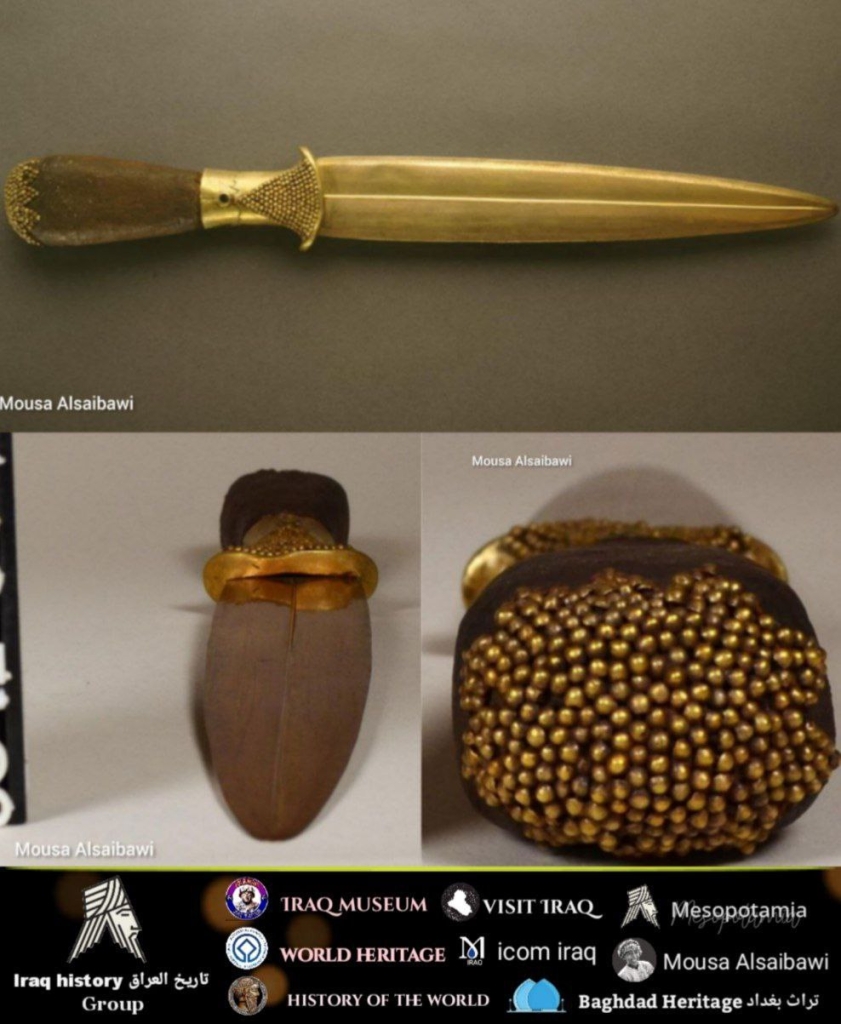
The golden dagger
discovered in the royal tomb of Ur Iraq mesopotamia British Museum Expedition to Ur Iraq 1930
Archive of Iraqi antiquities in museums of the world
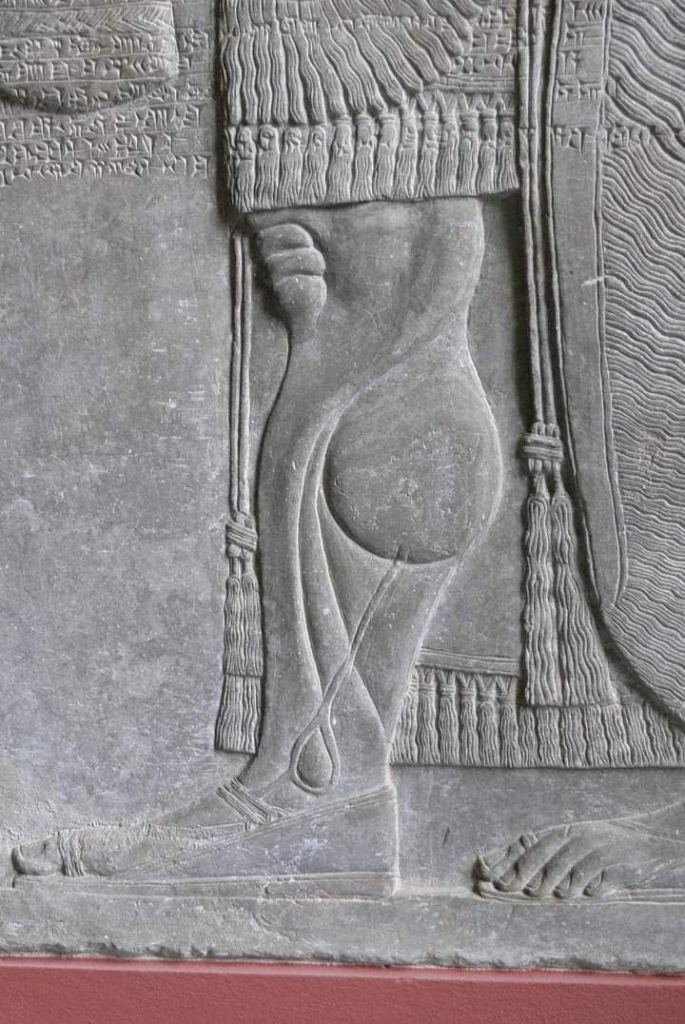
Detail of genie figure the palace of Ashurnasirpal II iraq Mesopotamia
Winged genie is the conventional term for a recurring motif in the iconography of Assyrian sculpture. Winged genies are usually bearded male figures sporting birds’ wings. The Genii are a reappearing trait in ancient Assyrian art, and are displayed most prominently in palaces or places of royalty. The two most notable places where the genius existed were Ashurnasirpal II’s palace Kalhu and Sargon II’s palace Dur-Sharrukin.
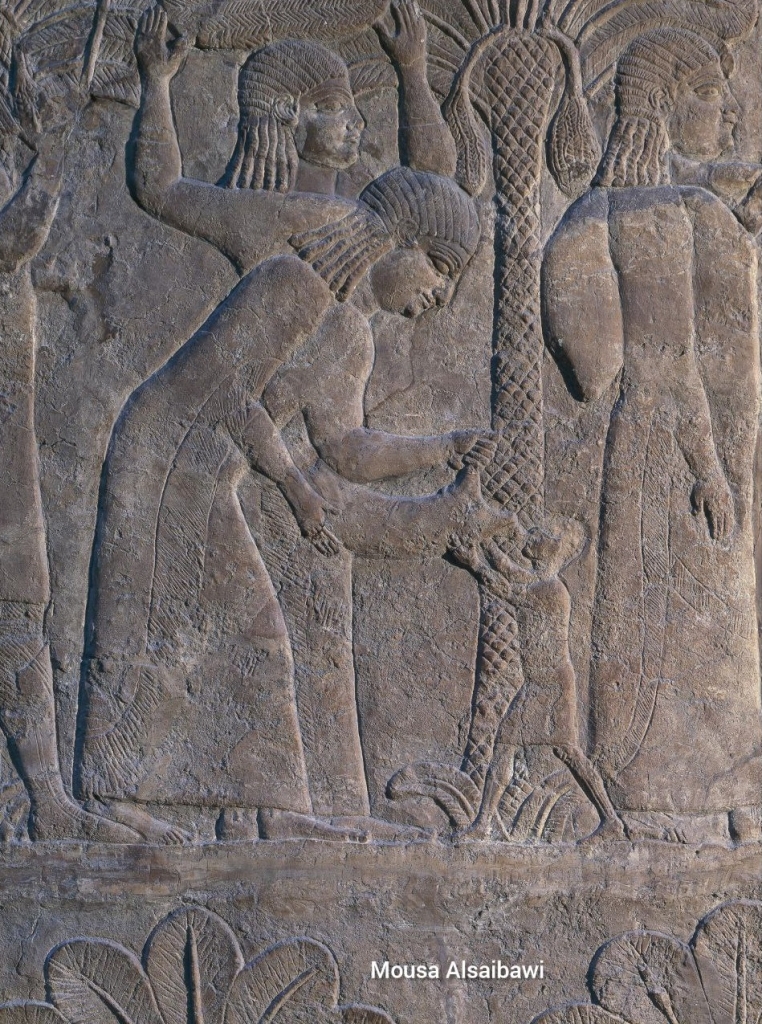
Gypsum wall panel relief formed of three registers The scene shows prisoners being driven by soldiers through groves of date palms accompanied by families and possessions. The top third of the upper register is missing
Ruler: Sennacherib
Neo-Assyrian
640BC-620BC
Excavated South West Palace (Nineveh) Iraq mesopotamia
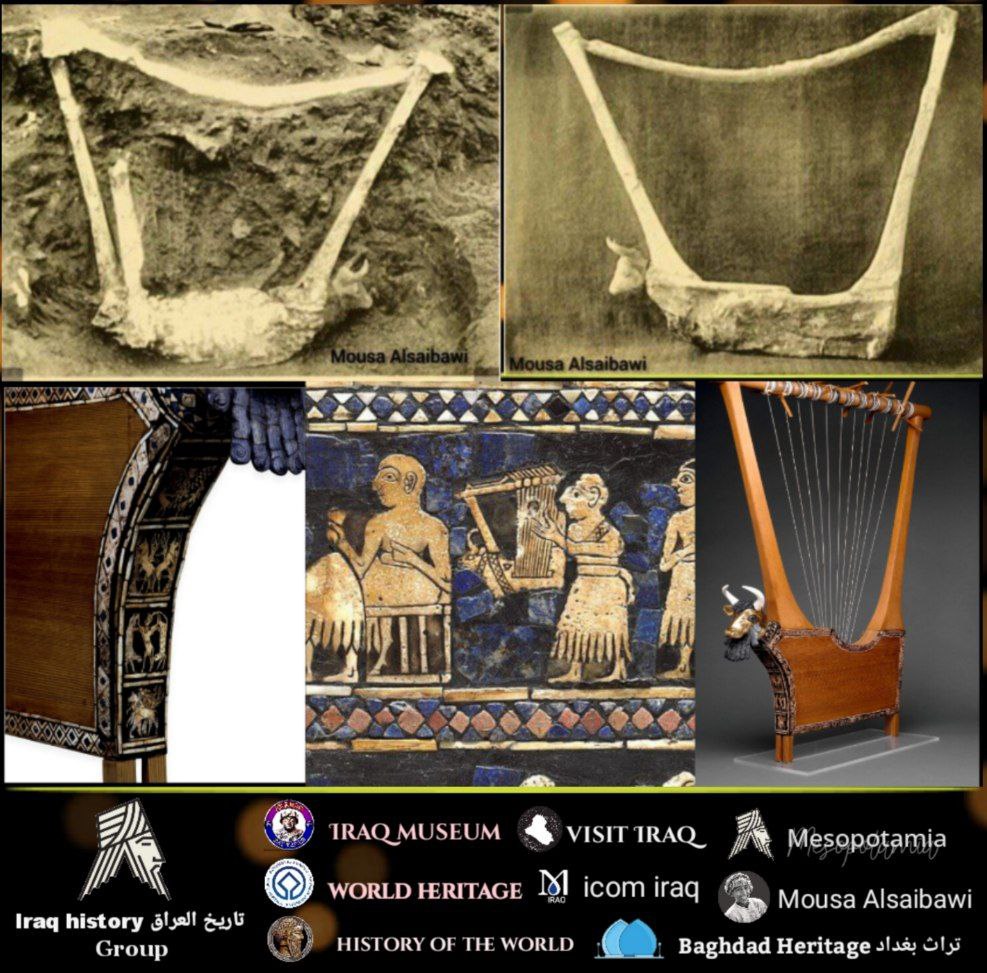
Lyres of Ur
This is an extremely early stringed instrument perhaps the earliest in the world. It comes from one of the earliest human civilisations Sumer in Mesopotamia iraq excavated in Royal Cemetery of Ur They date back to the Early Dynastic III Period of Sumerian civilization Mesopotamia iraq between about 2600 BC in 1928 archaeologists led by the British archaeologist Leonard Woolley representing a joint expedition of the British Museum and the University of Pennsylvania

weight
Smooth black stone weight with in form of sleeping duck with head resting on back two lines of cuneiform inscription on left shoulder Babylonian civilization
Findspot Iraq mesopotamia

In those days, in those far remote days, in those nights, in those faraway nights, in those years, in those far remote years, at that time the wise one who knew how to speak in elaborate words lived in the Land; Curuppag, the wise one, who knew how to speak with elaborate words lived in the Land. Curuppag gave instructions to his son; Curuppag, the son of Ubara-Tutu gave instructions to his son Zi-ud-sura: My son, let me give you instructions: you should pay attention! Zi-ud-sura, let me speak a word to you: you should pay attention! Do not neglect my instructions! Do not transgress the words I speak! The instructions of an old man are precious; you should comply with them!
( The Instructions of Shuruppak significant example of Sumerian wisdom literature. Wisdom literature, intended to teach proper piety, inculcate virtue, and preserve community standards, was common throughout the ancient Mesopotamia iraq 2600 BCE )
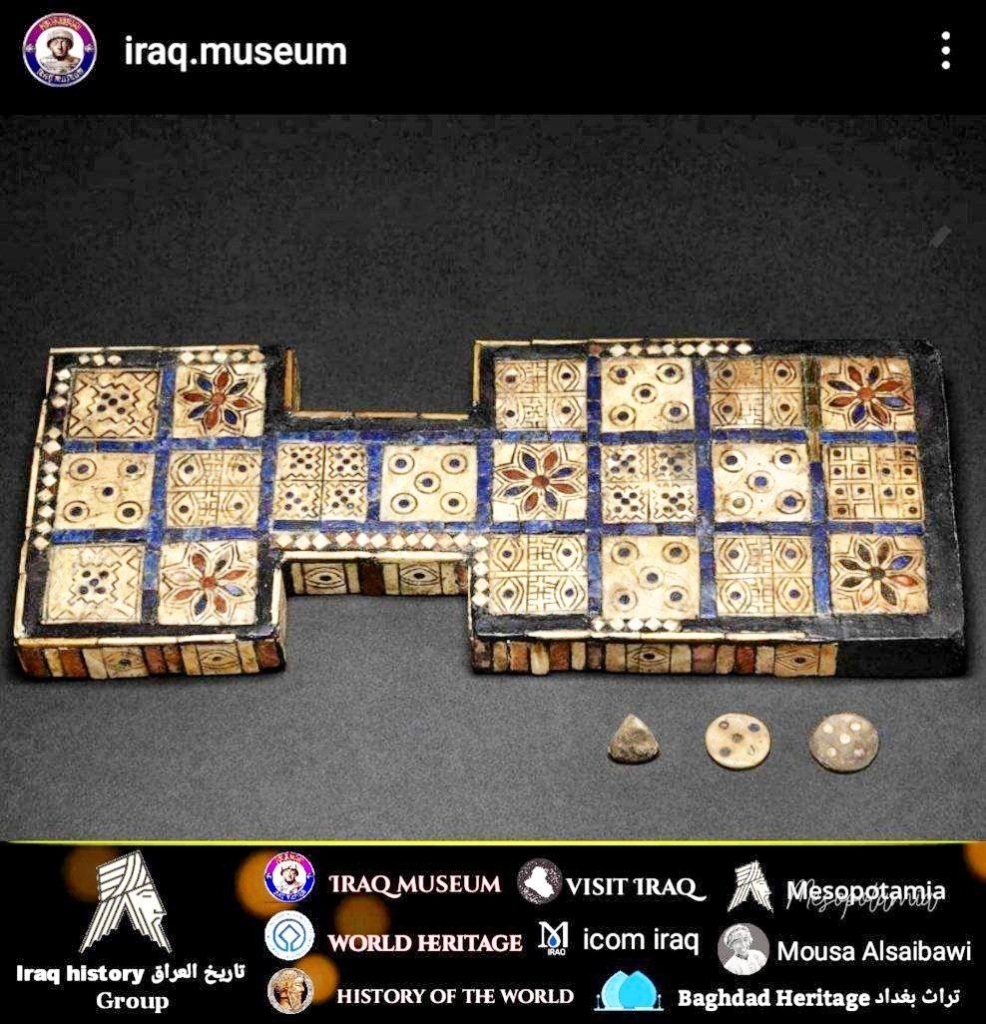
The Royal Game of Ur Iraq
Ancient Sumerians really knew how to enjoy life One piece of evidence for this is so called Royal game of Ur found all over Middle East the game was popular for a very long time basically till late antiquity when it was replaced by pegramon
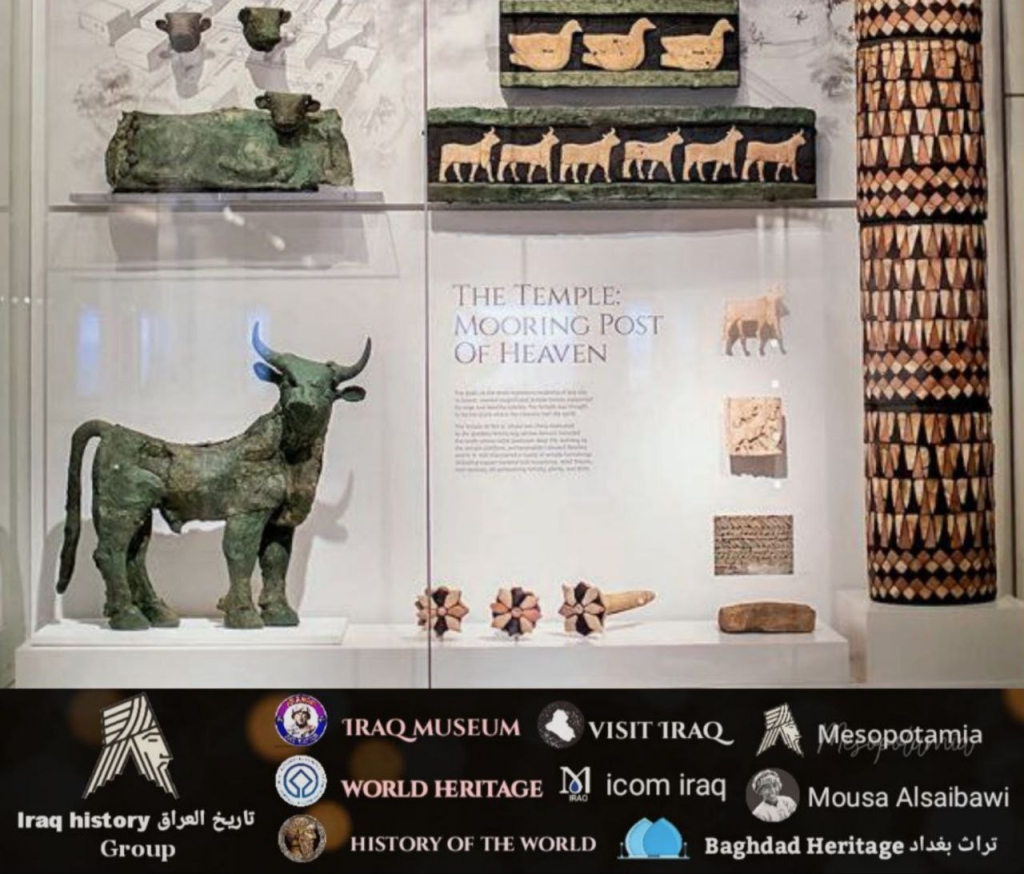
4 Objects excavated from the temple at Tell al Ubaid in Iraq Mesopotamia ca. 2400 B.C.E. (E. Sucar courtesy Penn
Museum Philadelphia)
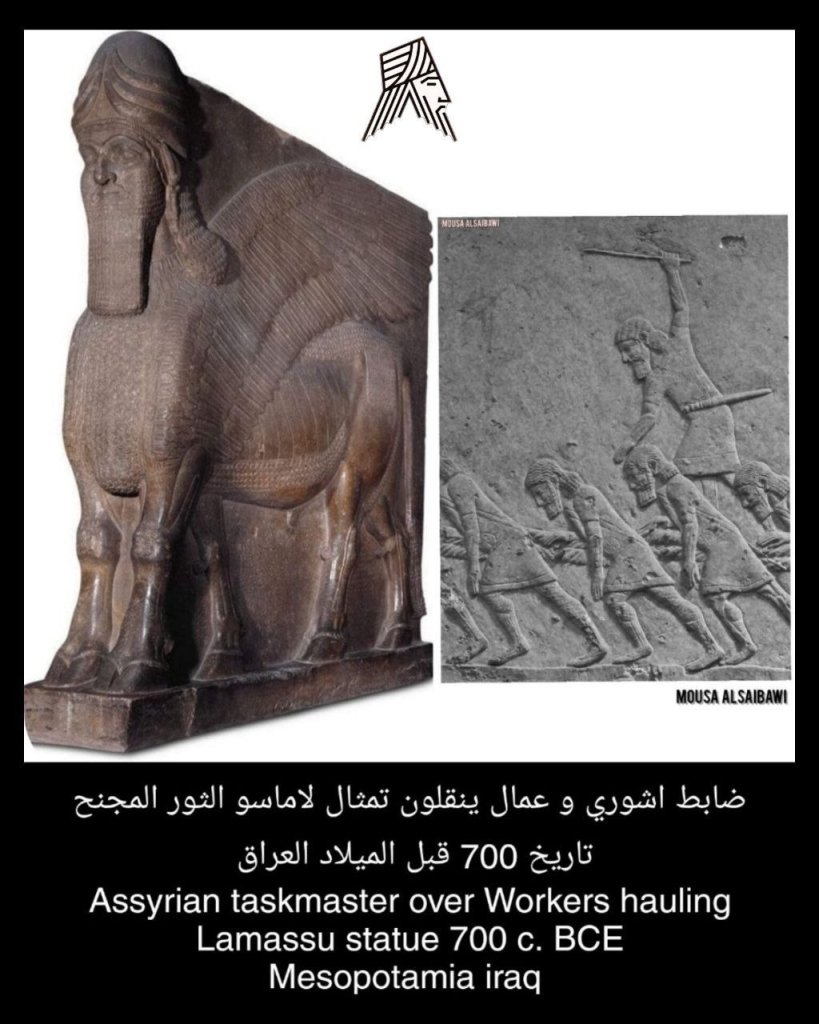
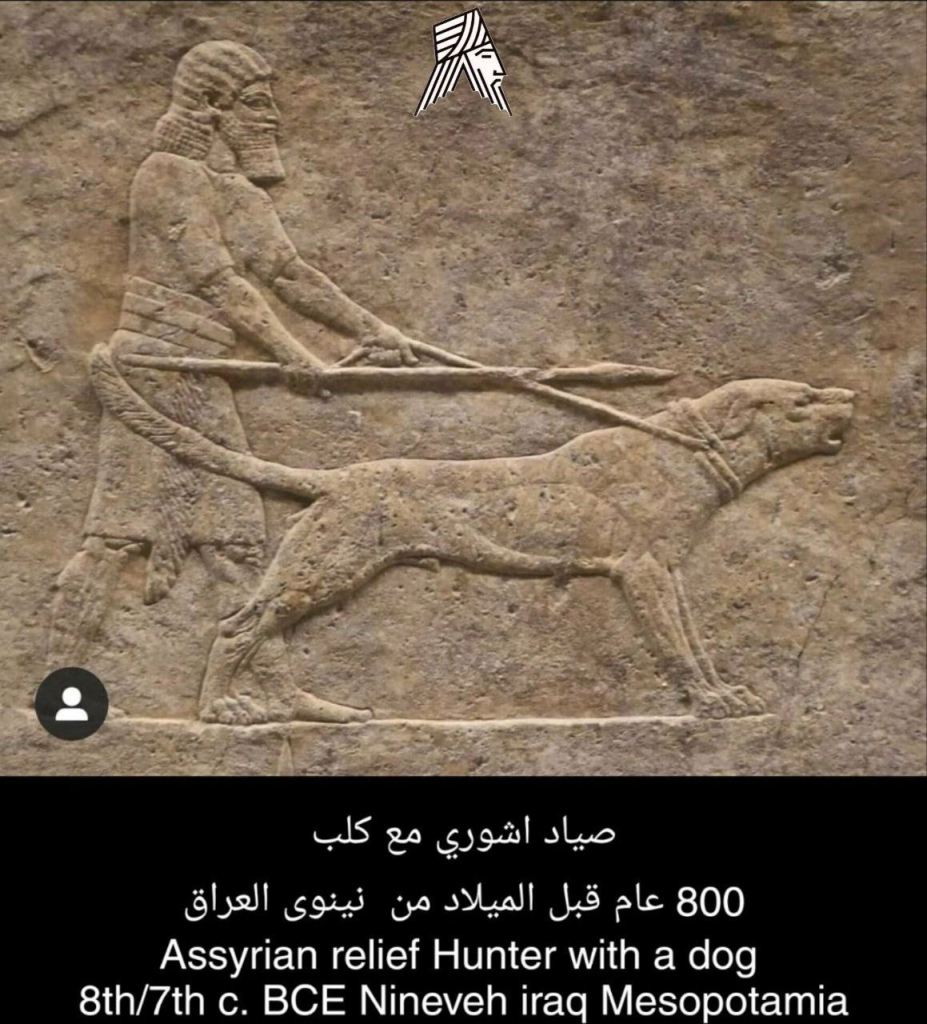
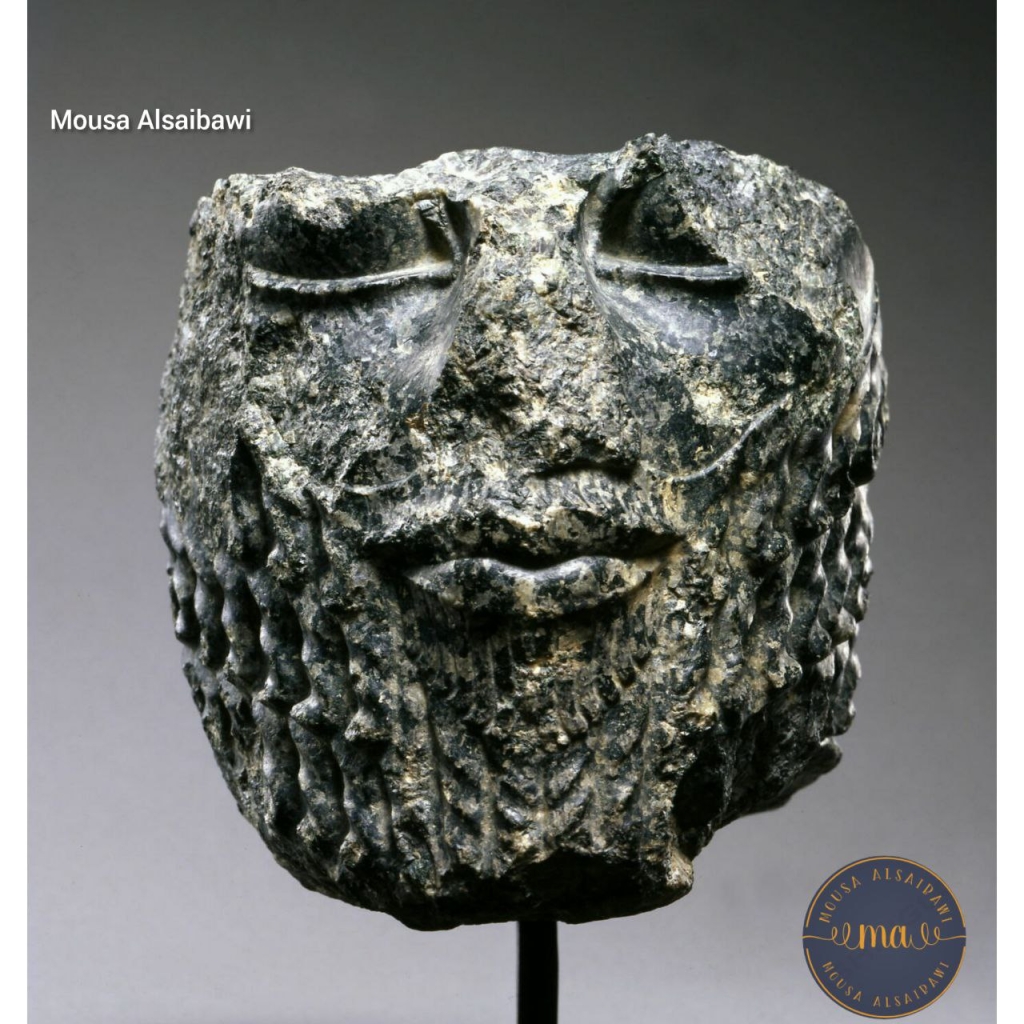
royal statue head with beard Akkadian civilization Place of discovery Tello Iraq mesopotamia one of the earliest known cities of the world revered in the 3rd millennium BC as the sanctuary of the Sumerian heroic god Ningirsu Tello is a mega-site extensively investigated between 1877 and 1933 with a the most important monuments of Sumerian art and architecture including both statuary of the ruler Gudea and a bridge built of baked brick which is the oldest bridge discovered in the world to date

Cuneiform cylinder inscription of Nebuchadnezzar II describing the construction of the outer city wall of Babylon iraq Mesopotamia ca. 604–562 B.C.
“I built a strong wall that cannot be shaken with bitumen and baked bricks… I laid its foundation on the breast of the netherworld, and I built its top as high as a mountain.
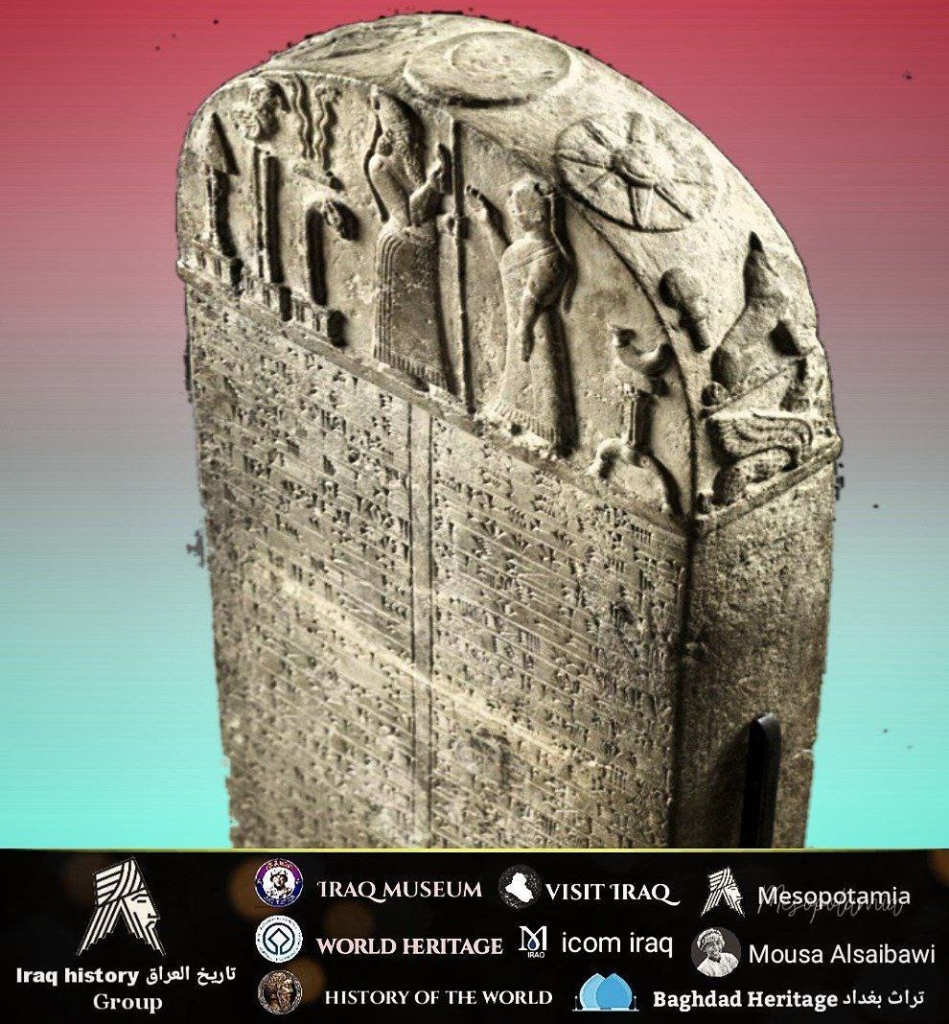
Kudurru recording the bequest of land by Marduk-zâkir-šumi to Ibni-Ištar on behalf of the Eanna temple in Uruk mesopotamia Iraq Babylonian civilization
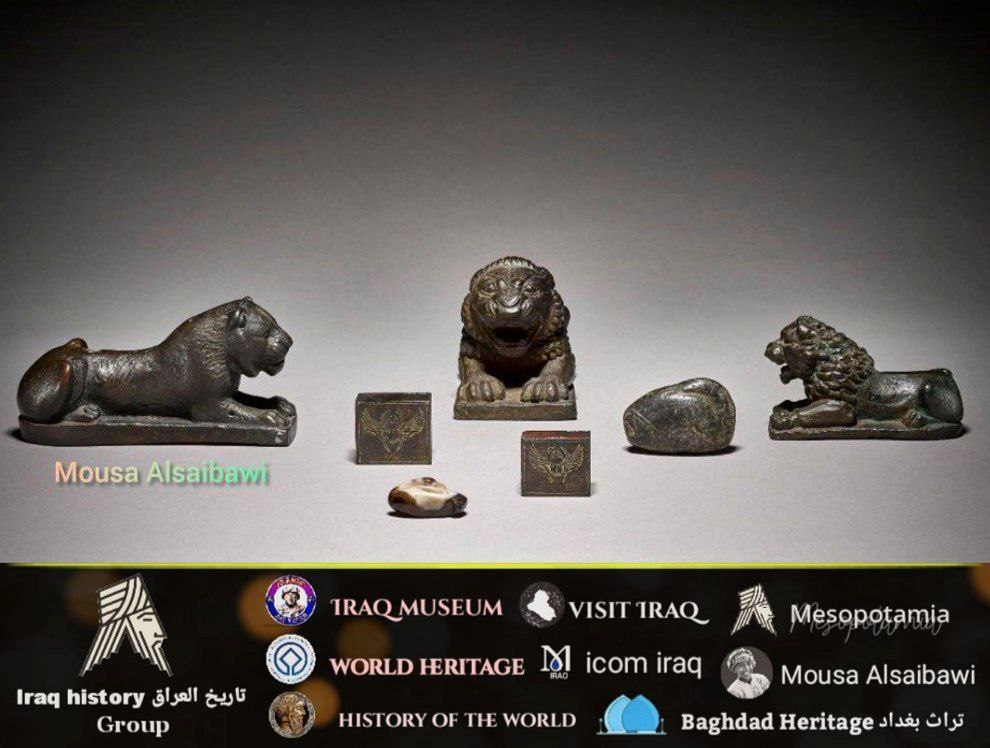
Copper alloy lion weight
Production date9thC BC-7thC BC
Neo-Assyrian Findspot calhu Nimrud Iraq Mesopotamia
made for Shalmaneser V but some for Shalmaneser III Tiglath-Pileser III Sargon II and Sennacherib British museum
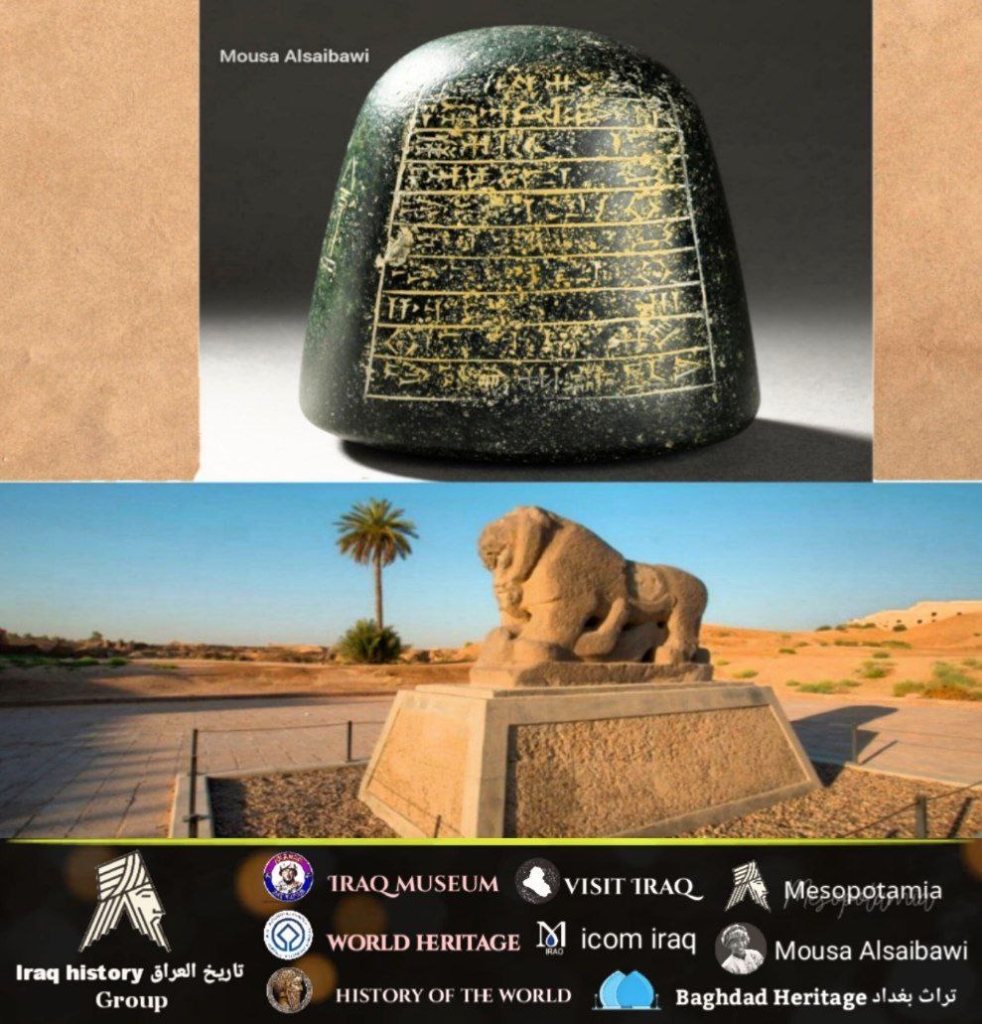
weight
Diorite mina weight in the shape of a sugar loaf engraved with cuneiform inscription stating that it was a copy of a weight that Nebuchadnezzar II had made after the standard of Shulgi property of Marduk-shar-ilani lightly polished surfaces.
Cultures Babylonian civilization mesopotamia Iraq Inscription note: States that it was a copy of a weight that Nebuchadnezzar II had made after the standard of Shulgi; property of Marduk-shar-ilani
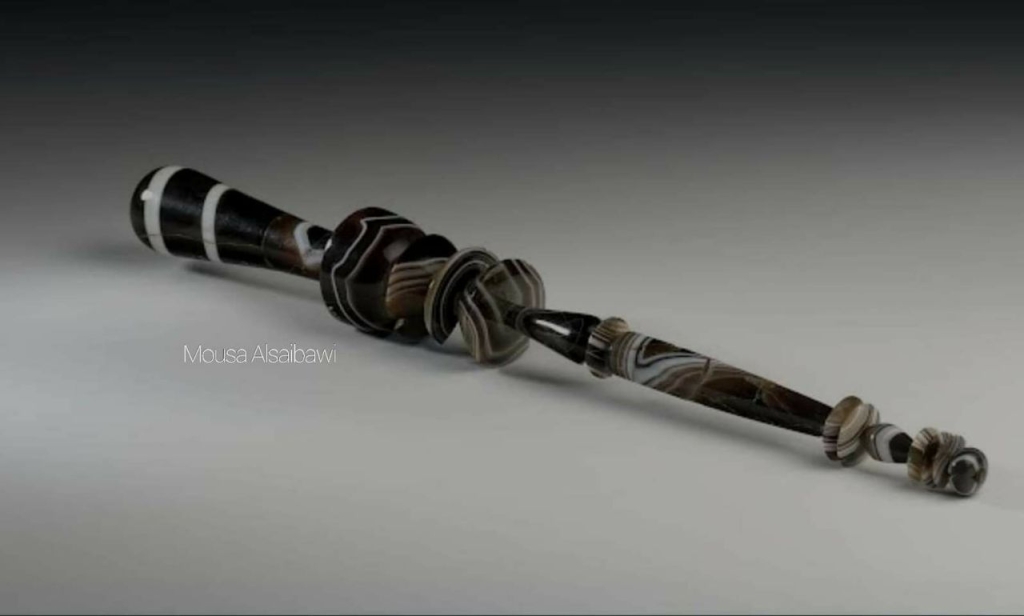
Babylonian Sceptre
Date created: 6th century Babylon iraq
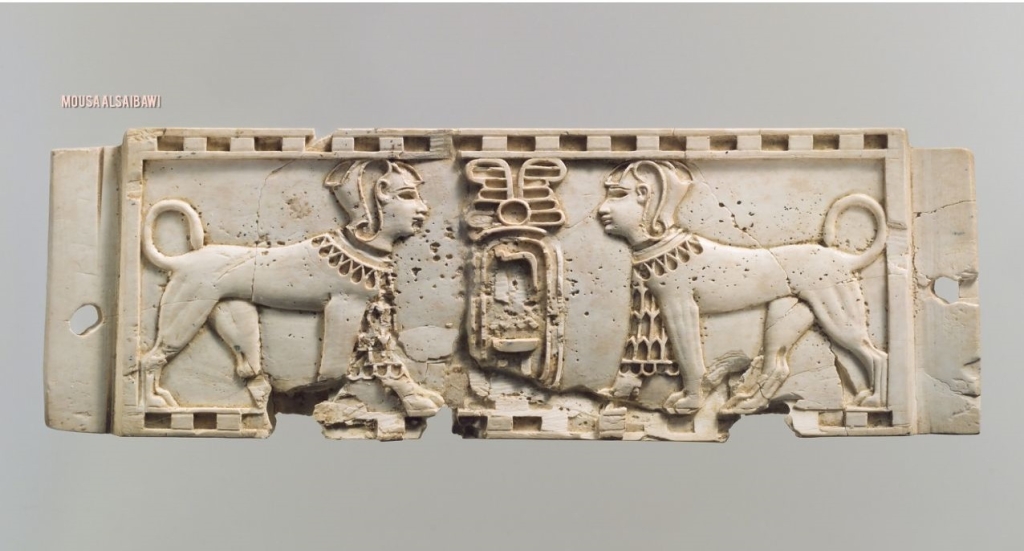
plaque with two sphinxes flanking cartoucheca. 9th–8th B.C. assyrian iraq
This rectangular plaque depicts two sphinxes flanking a central cartouche crowned by a solar disc and ostrich plumes. It was found in a large storeroom at Fort Shalmaneser, a royal building at Nimrud that was probably used to store tribute and booty collected by the Assyrians while on military campaign.
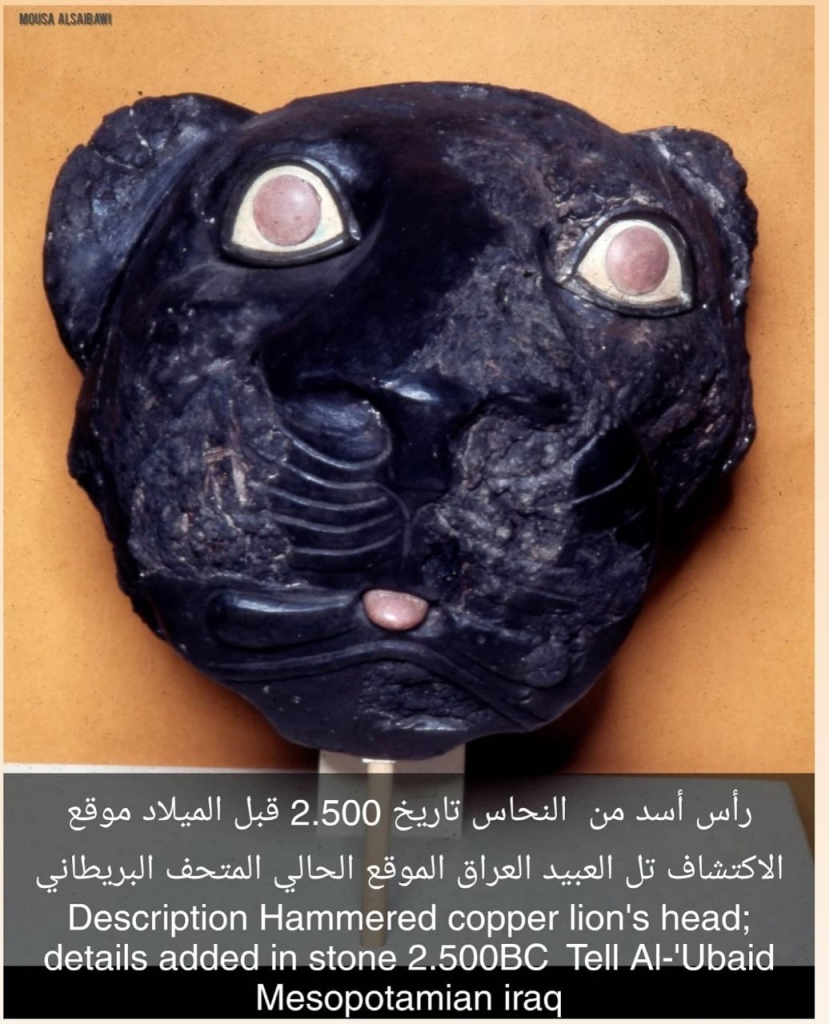
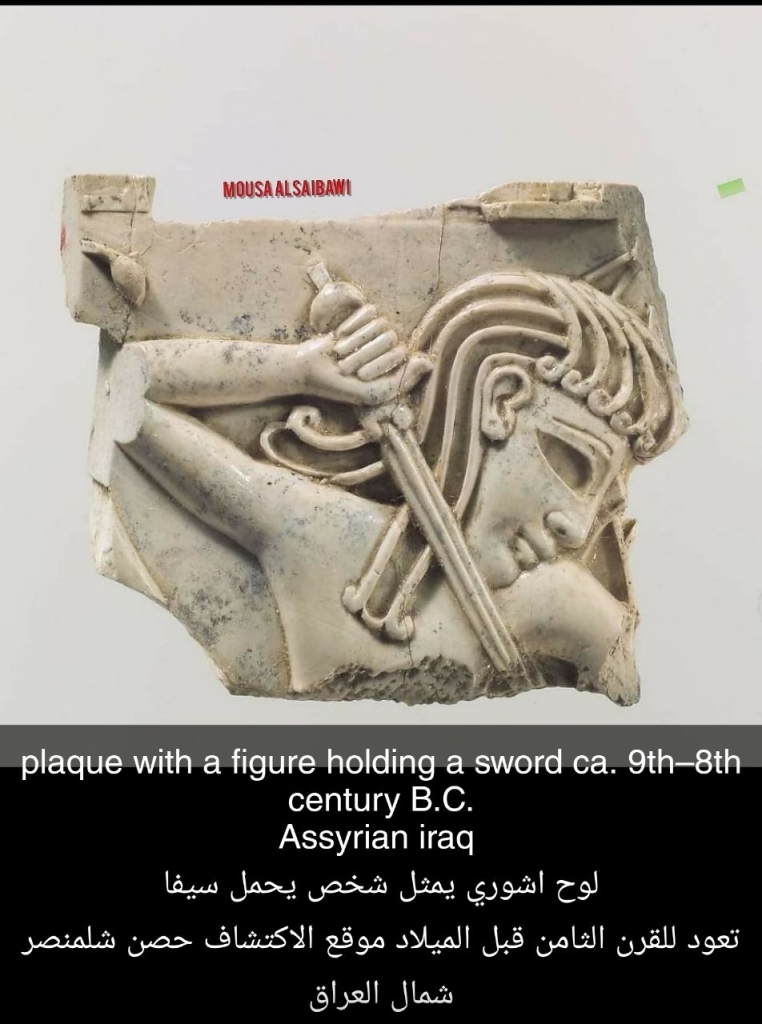
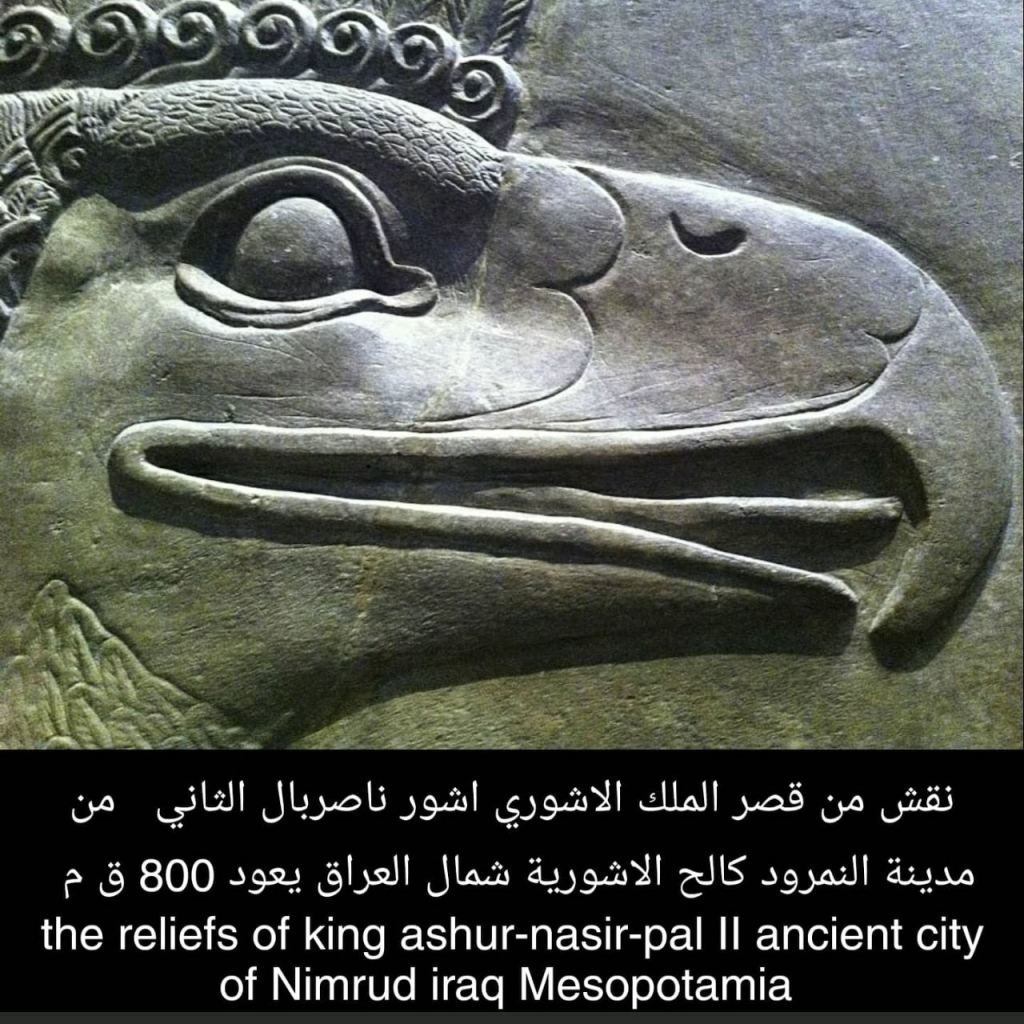
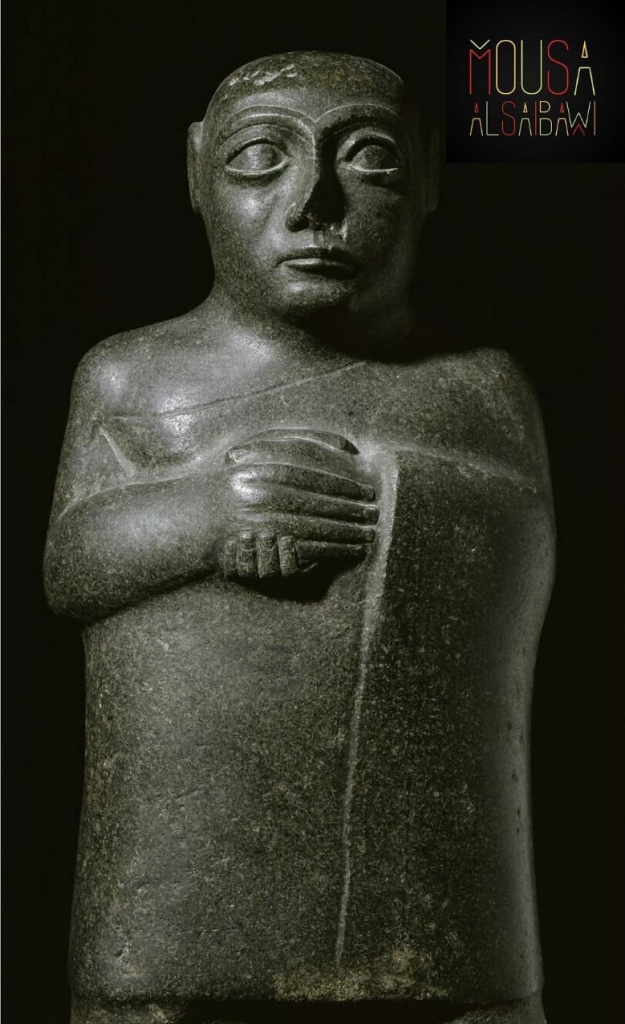
According to inscriptions of Ur-Baba, during his reign Lagash enjoyed prosperity and independence from the Akkadians. His daughter Ninalla married Gudea, who succeeded him as ensi
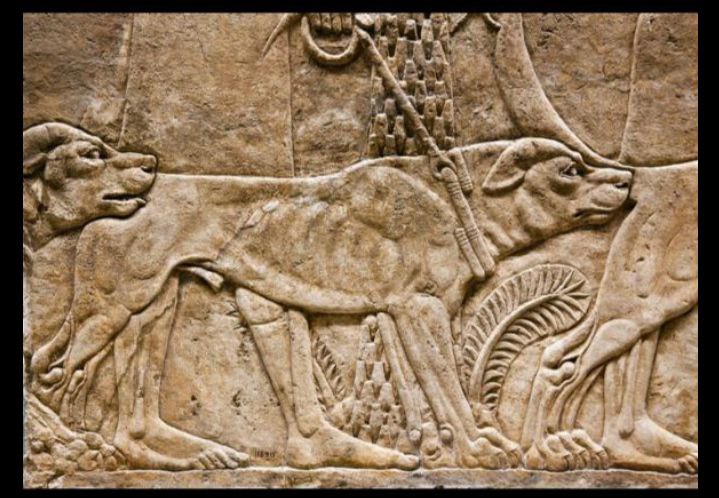
huntsman with hounds in a garden
Ruler: Ashurbanipal
Neo-Assyrian Production date 645BC-635BC
Excavated North Palace (Nineveh) iraq mesopotamia
By archidave
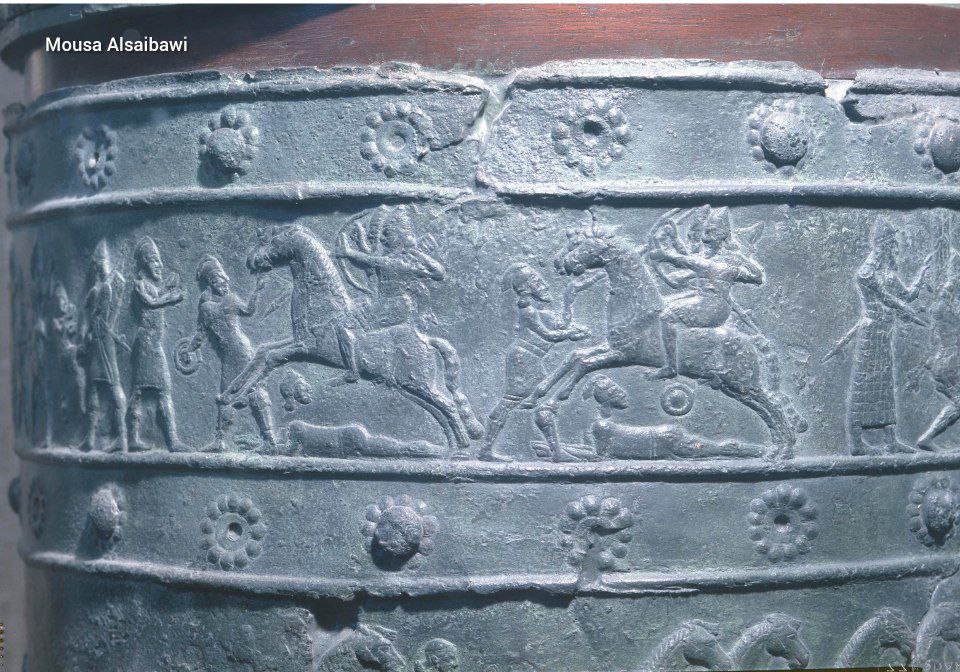
Bronze band from Balawat Gates discovered in North Iraq Mesopotamia embossed decoration Assyrian king Shalmaneser III’s campaign in Armenia 857 BC
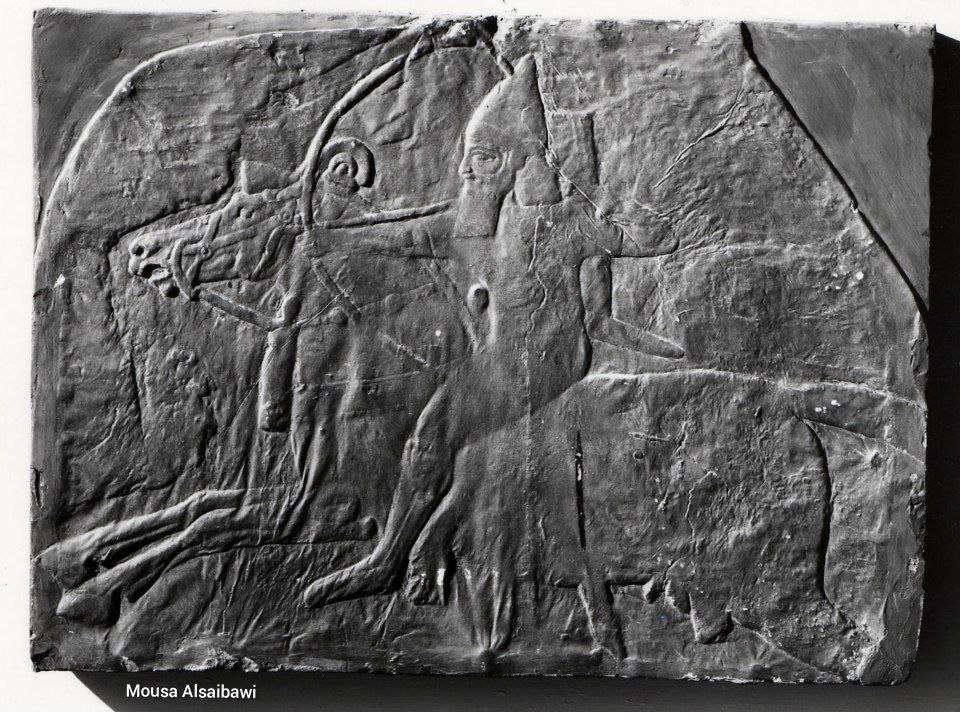
Plaster cast: showing the head of a mounted Assyrian soldier galloping to the left, discharging an arrow. The cast is painted with a modern brown wash.
Neo-Assyrian
Production place
Original from: South West Palace (Nineveh) Iraq
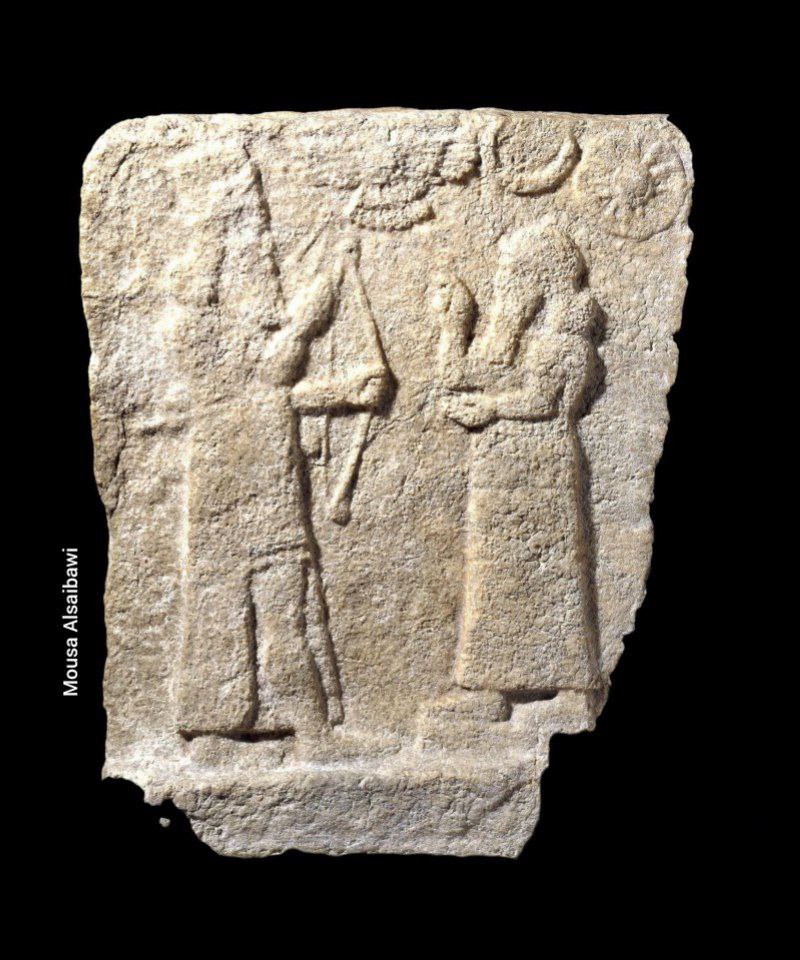
Gypsum tile from a domestic shrine; a man in Assyrian court dress is worshipping a god, perhaps Ninurta; the symbols above the man’s head represent, from left to right, Shamash the sun god, Sin the moon god, and Ishtar the goddess of the planet Venus.
Cultures/periods
Neo-Assyrian
Production date
800BC-700BC
Excavator/field collector
Excavated by: Walter Andrae
Findspot
Excavated/Findspot: Ashur Iraq mesopotamia
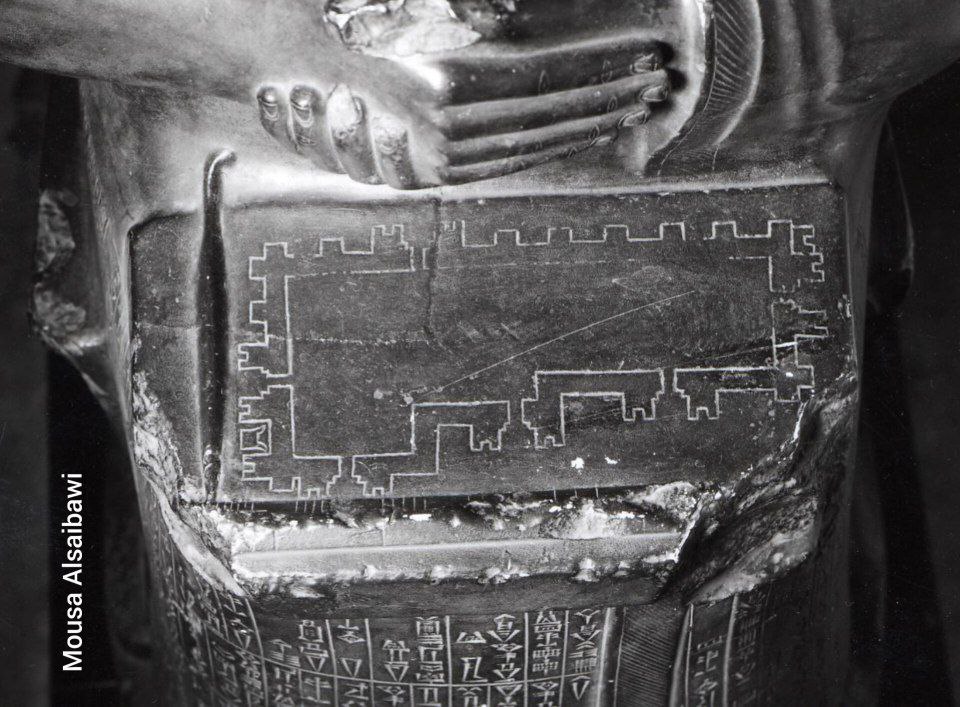
Architect with Plan Plan of the first sacred temple recorded in history Seated Gudea holding temple plan 2100 B.C.E.Look at his folded hands this is a gesture of prayer Gudea was very religious Gudea had many temples built where he put statues of himself One of them shows the prince seated Neo-Sumerian Ur III period kingdom of Lagash in Mesopotamia Iraq
Mousa Alsaibawi

String of beads with gold leaf and ornamental gold discs with lapis lazuli centres.
Cultures Early Dynastic III Sumerian civilization
2600BC Excavated Royal Cemetery Ur Mesopotamia iraq
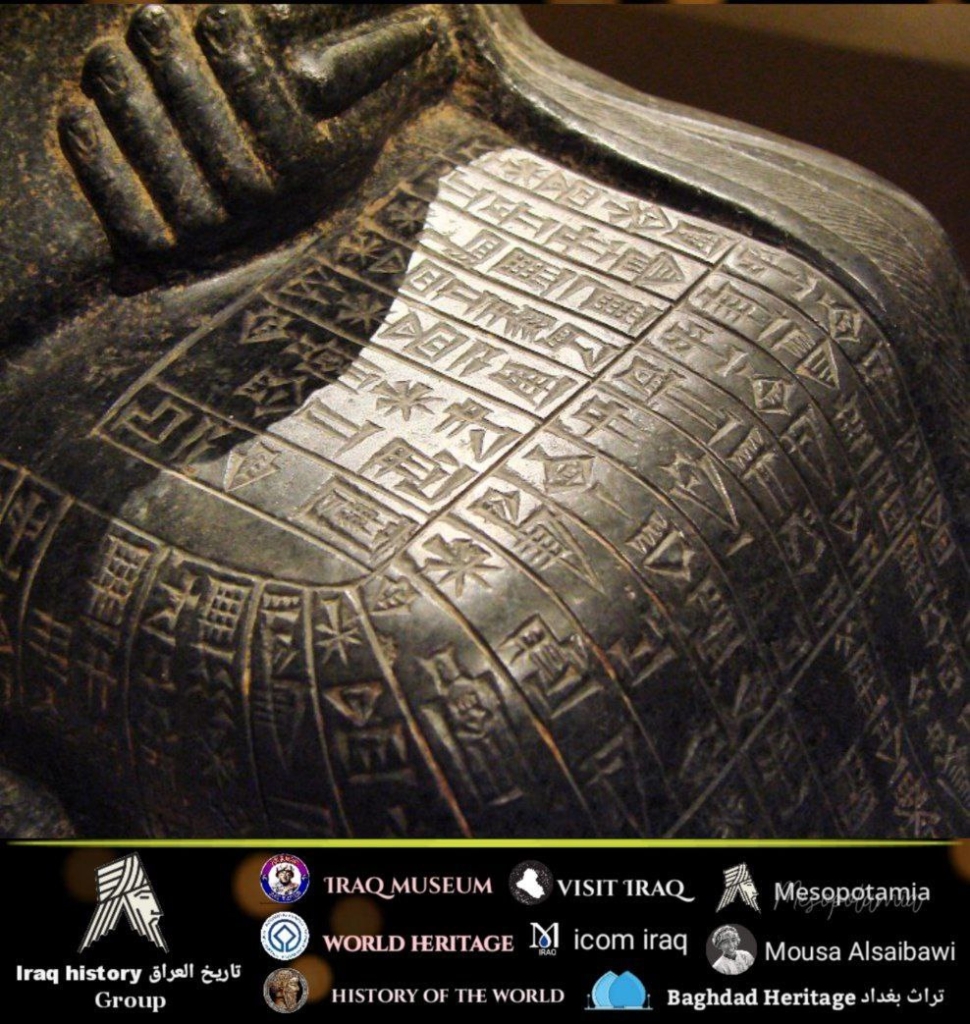
Detail of the Cuneiform inscription carved into the rather hard stone of the seated Gudea-statue Discovered in the Sumerian city of Lagash in southern Iraq Metropolitan Museum
Iraq history group
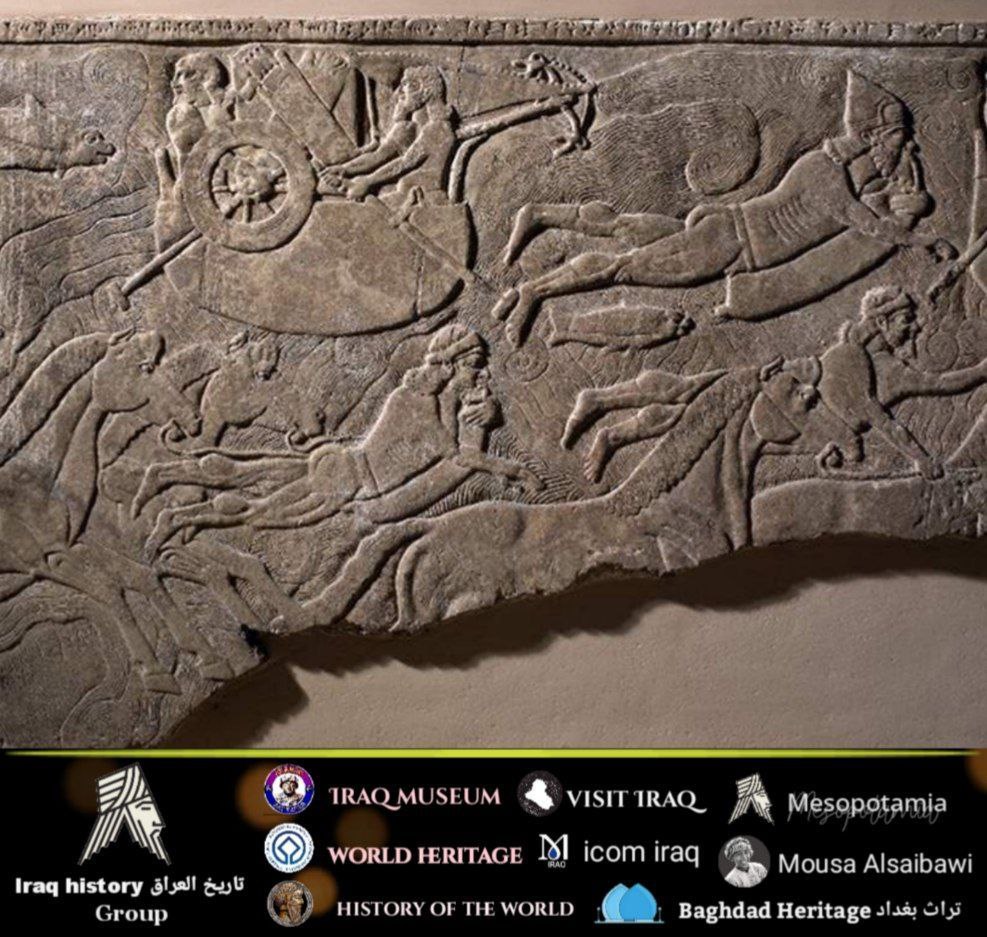
the wall decoration of the throne room in the North West Palace of Kalhu iraq But then the river’s banks were not yet under Assyrian control and traversing the Euphrates exposed the Assyrian troops and their animals including horses and mules to attacks
Mousa Alsaibawi
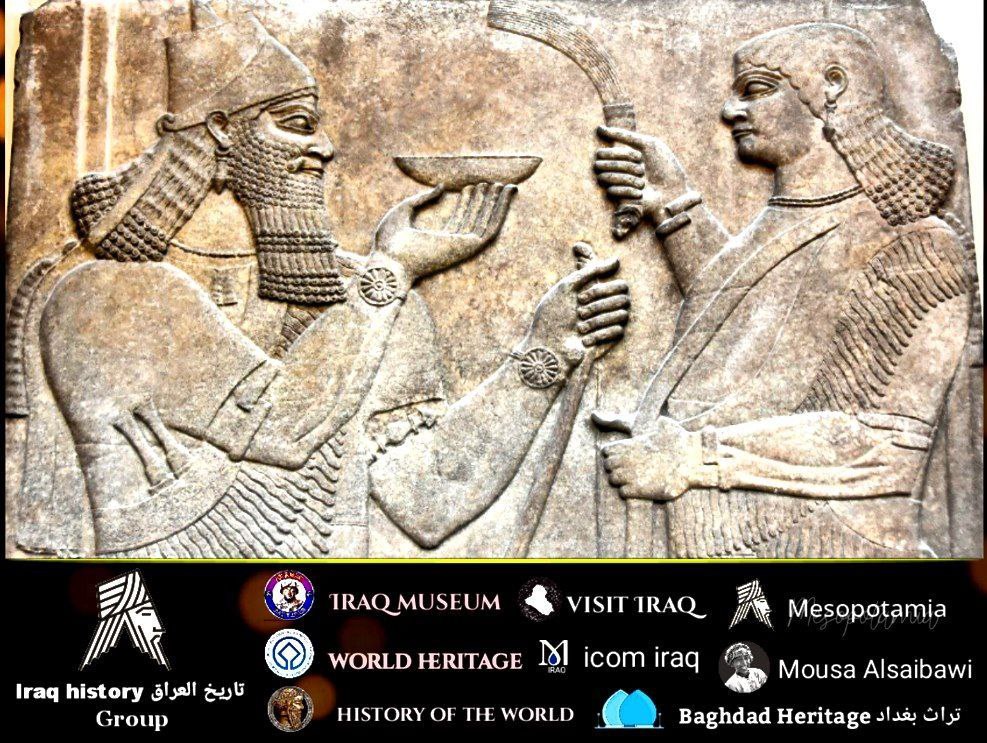
Formal scene Assyrian from Nimrud iraq Mesopotamian about 865 – 860 BCE
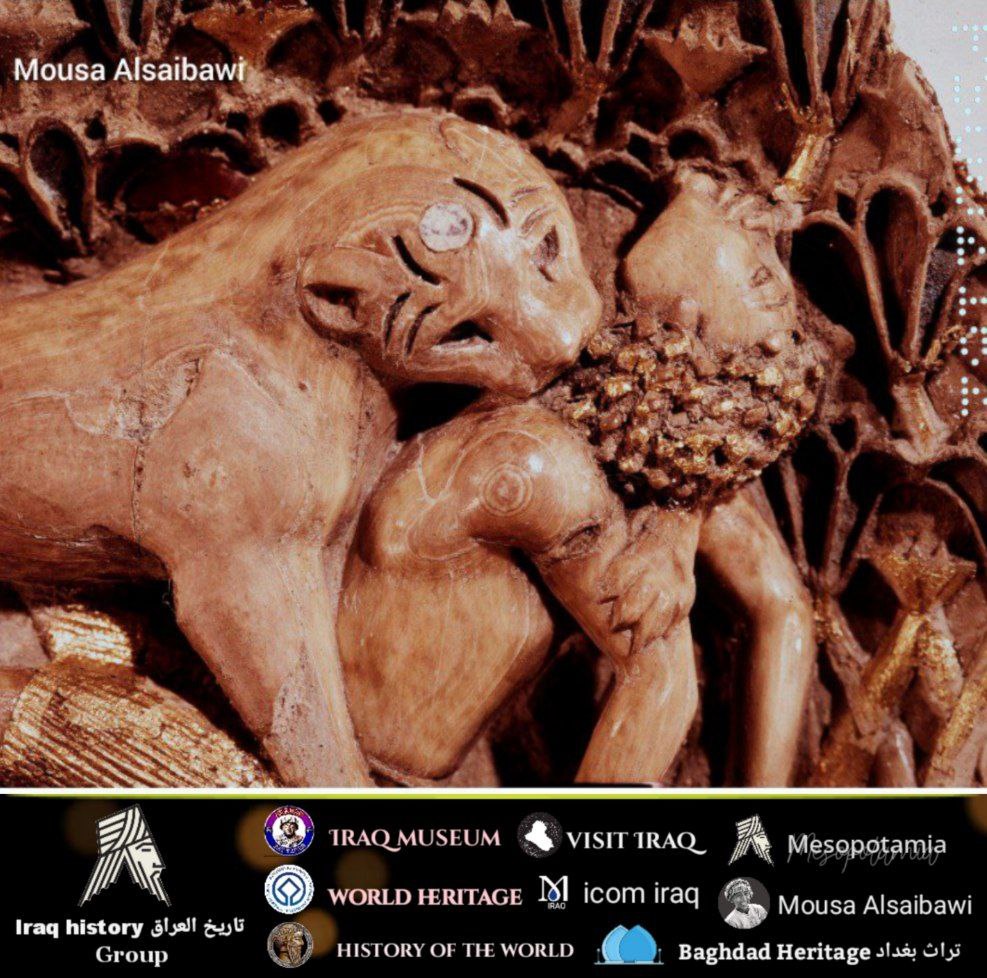
vory plaque of lioness mauling an African the lioness is standing over her victim who has his knees drawn up and is lying back supported by his hands on the ground behind him. The lioness is biting his throat. The African wears a short kilt represented by gold leaf. The tight curls of hair are represented by gilt-topped ivory pegs. In the background are lotus and papyrus flowers covered in gold leaf and inlaid with lapis lazuli and cornelian
Excavated Palace Nimrud Iraq mesopotamia
900BC Excavated Mallowan
Mousa Alsaibawi
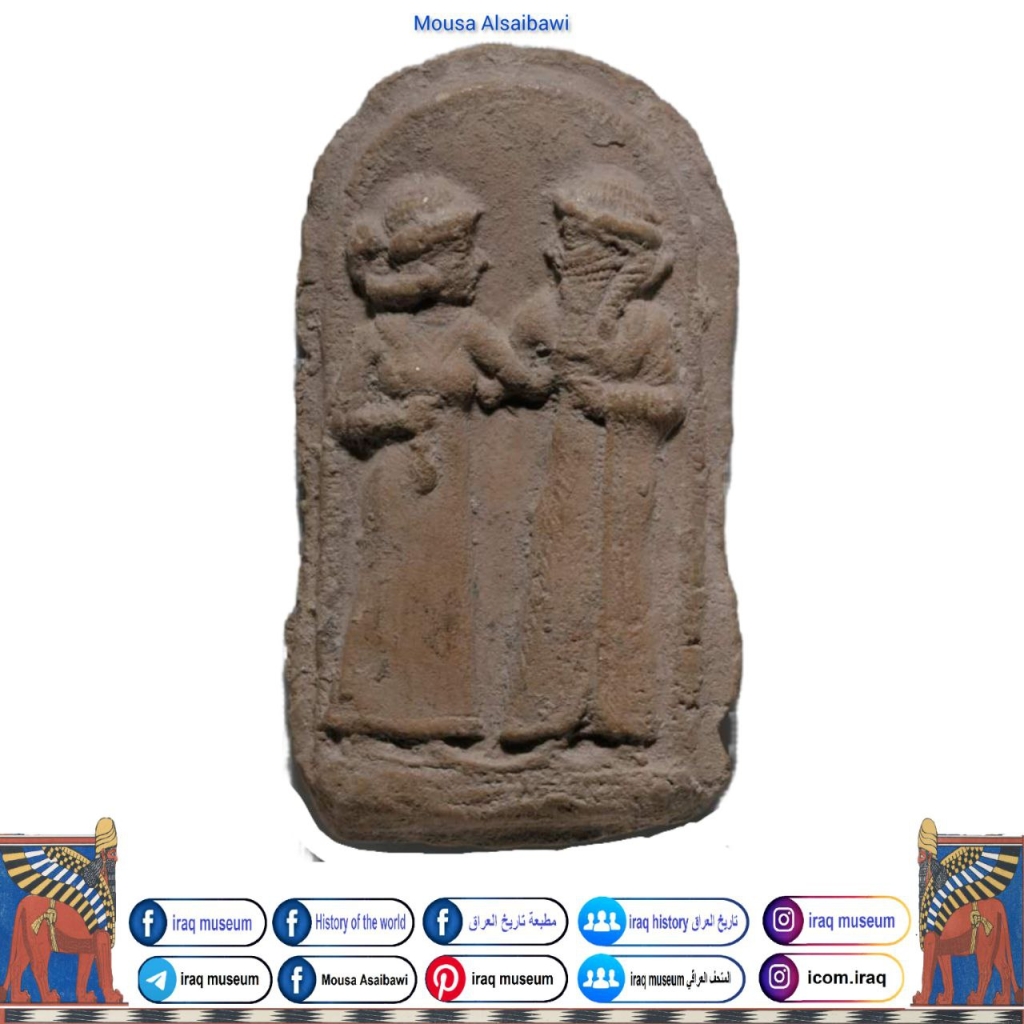
Molded plaque couple
Period: Isin-Larsa–early Old Babylonian civilization Date: ca. 2000–1700 B.C.
Geography Southern Mesopotamia Iraq

Statue of Ur-Ningirsu son of Gudeaca. 2080 B.C. Geography: Mesopotamia,iraq probably from Girsu
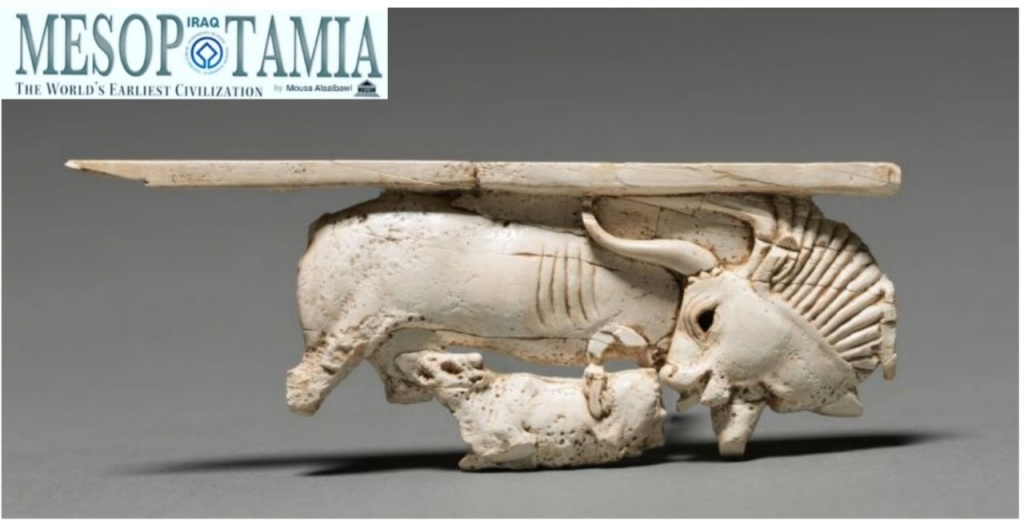
Decorative Plaque: Cow Nursing Its Calf
900-800 BC
Phoenician, Iraq, Nimrud Assyrian capital 9th-8th Century BC
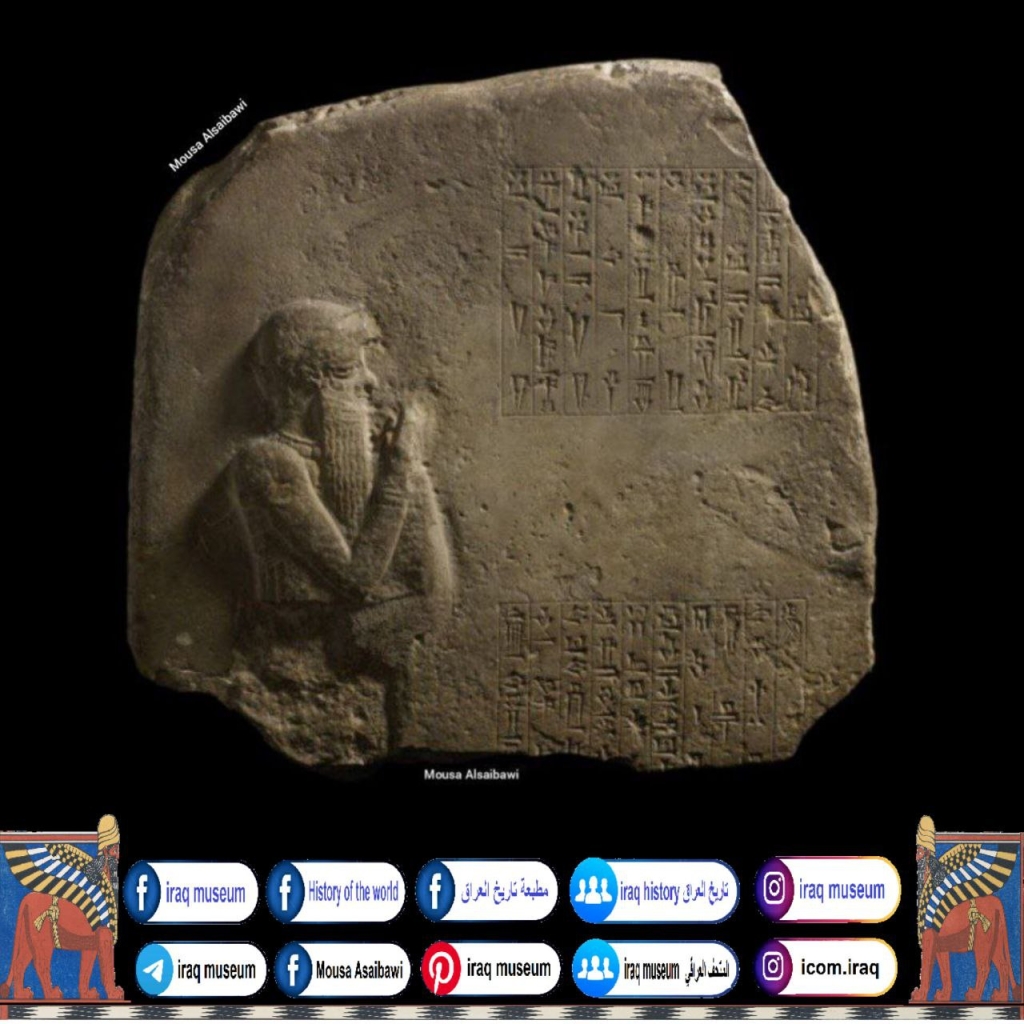
Limestone votive monument; figure on the left is Hammurapi in person, with his right arm raised in worship
Old Babylonian Production date 1792BC-1750BC Excavated by: Hormuzd Rassam
Findspot: Abu Habba (Sippar) mesopotamia Iraq
Inscription language: Babylonian
Inscription script: cuneiform
Inscription note: States that a statue of a protective figure was dedicated to the goddess Ashratum in her temple, on behalf of the king, by a high official called Itur-Ashdum.
Mousa alsaibawi
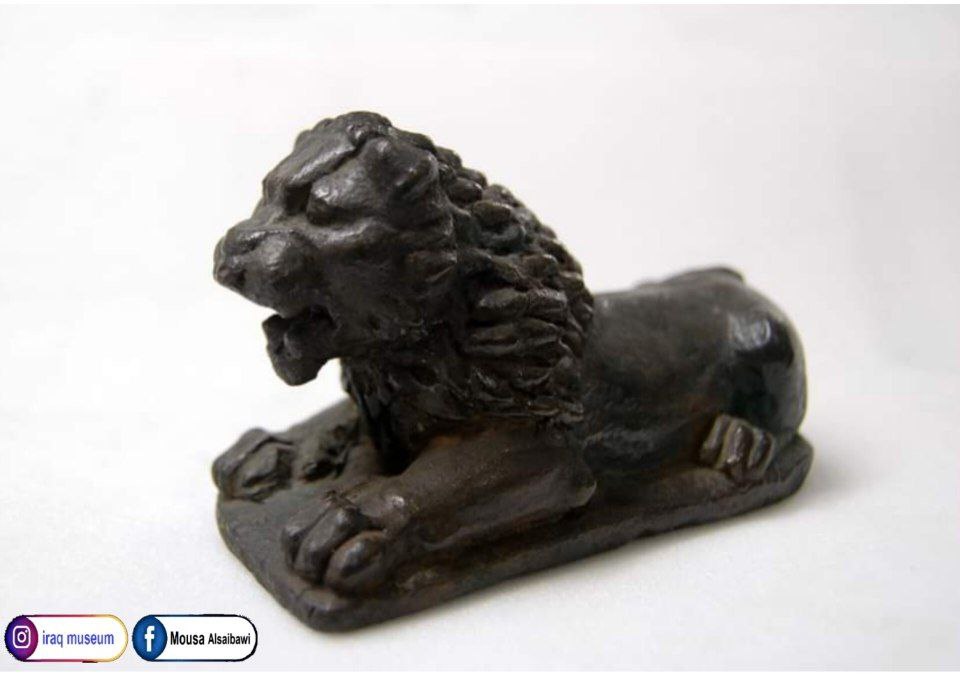
Copper alloy lion weight
Neo-Assyrian 9thC BC-7thC BC
Excavated North Iraq
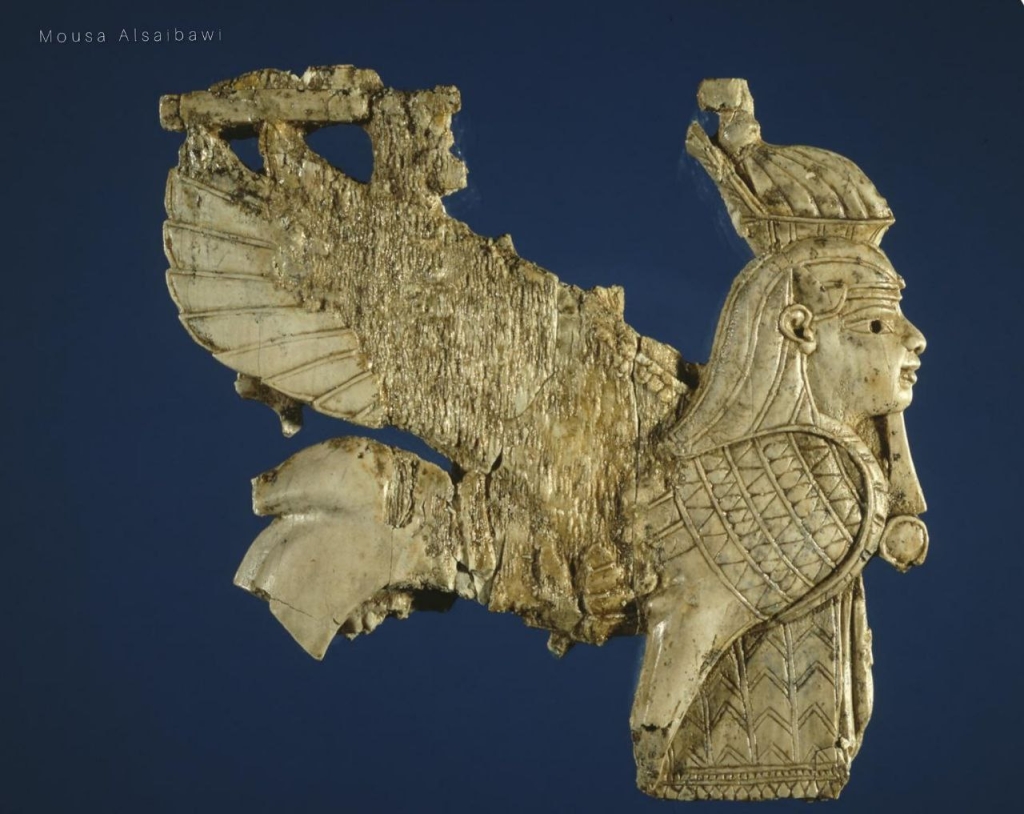
Winged Sphinx
Openwork with winged apron sphinx
Human headed
Legs are part of body surface Wing lost as is part ofupper edge and tail
Iraq Nimrud Assyrian civilization
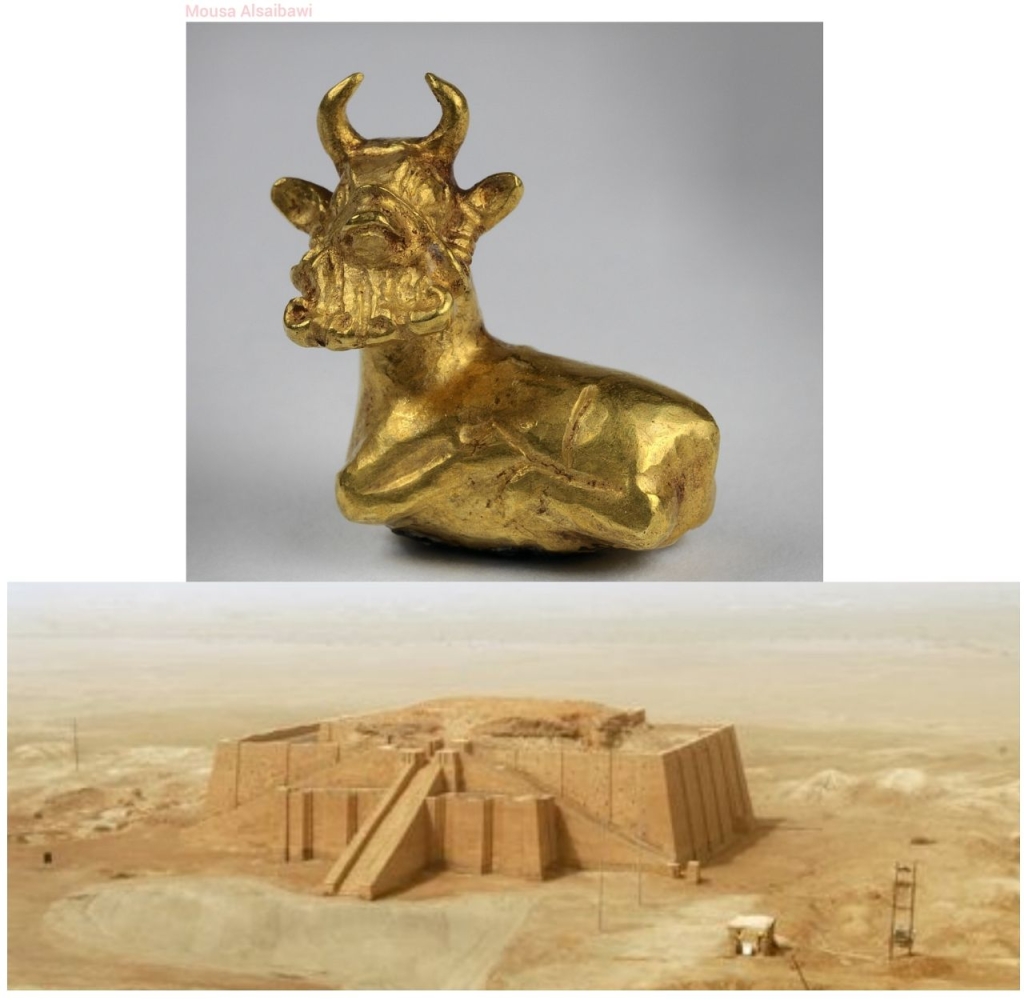
gold bull amulet false beard tied with string Mesopotamia iraq Sumerian civilization

gold bracelets 2700 BCE ( discovered in the Sumerian city of Ur Iraq Mesopotamia )
Penn museum
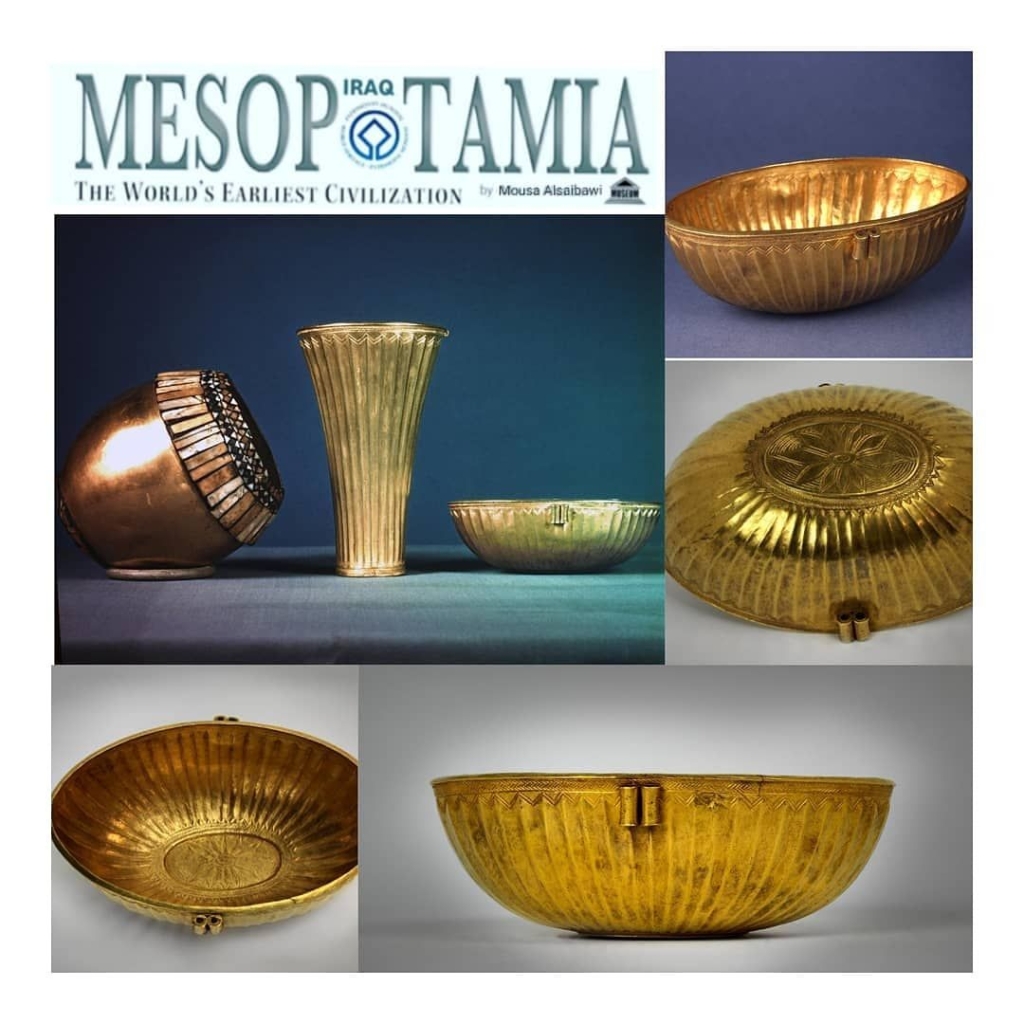
gold fluted bowls with plain lugs. of Queen Shubad Puabi with sketch 2600 BCE
Mesopotamia iraq Sumerian civilization
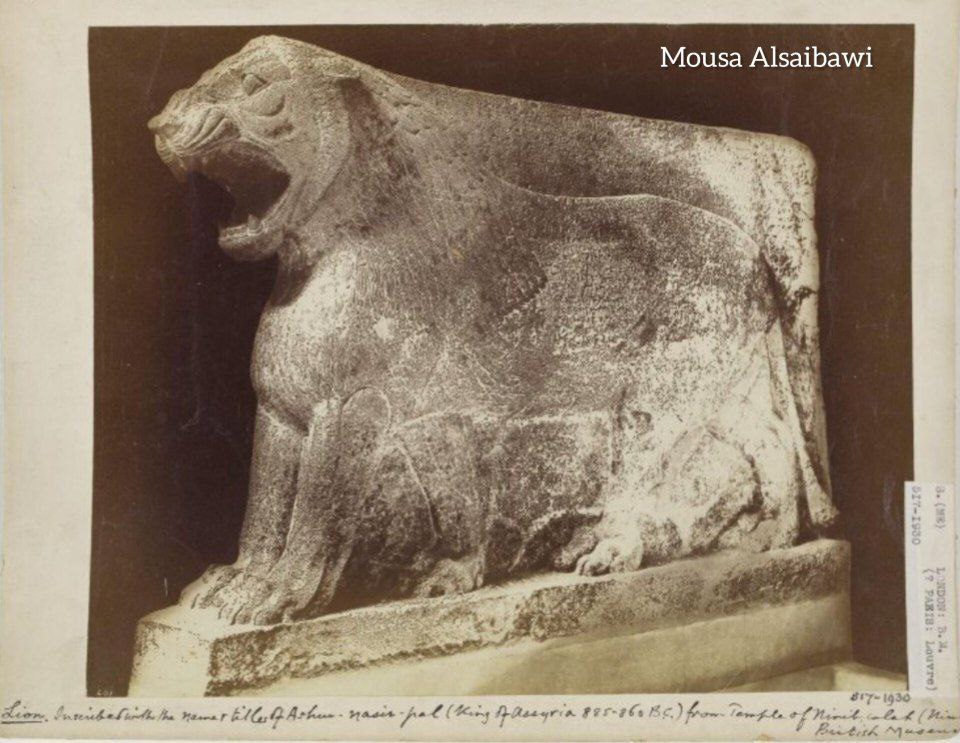
guardian Assyrian lion about 865-860 BC guarded the entrance to the temple of Ishtar Sharrat-niphi Inscription note: Records the name titles and conquests of Ashurnasirpal I
From Nimrud Iraq Mesopotamia
British museum
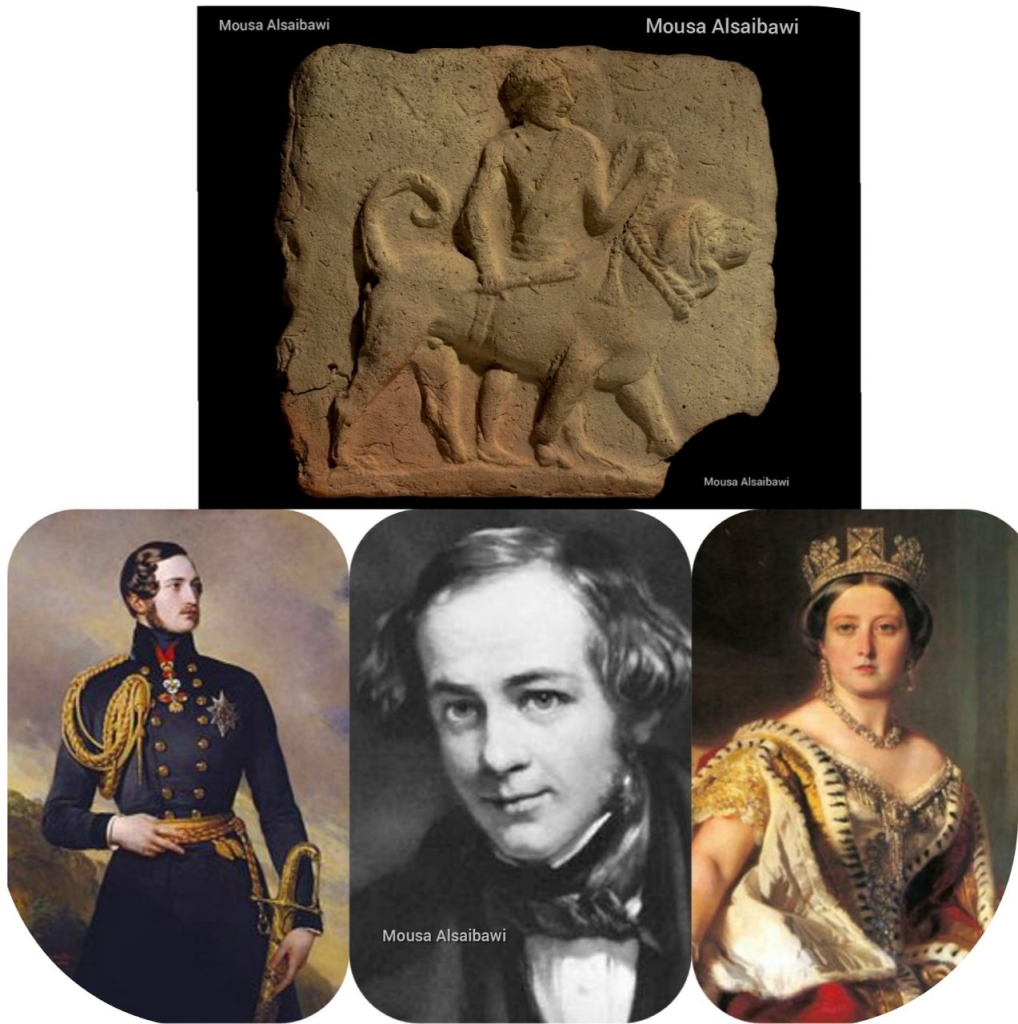
DescriptionFired clay plaque of a man restraining a large dog with massive rounded head short muzzle floppy ears and curly tail by means of a thick rope tied around the dog’s neck and held in the man’s left hand man holds a stick in his right hand mould-pressed
Cultures/periodsOld Babylonian
Iraq Mesopotamia
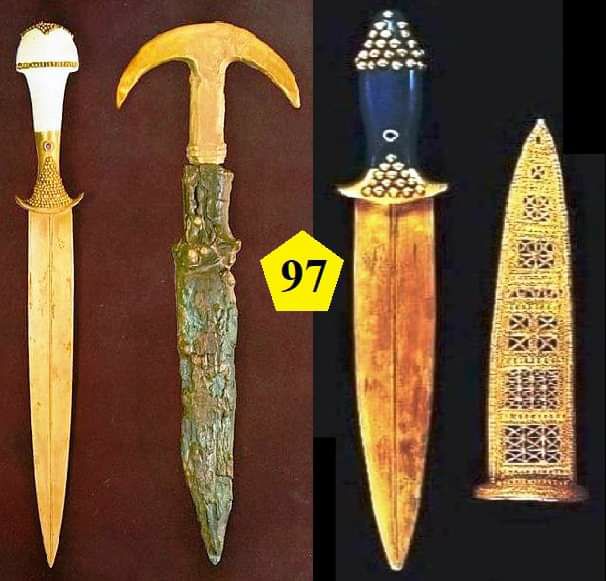
Two daggers 1 gold and one made of copper with ivory handles dating back to the king Muscallam Duk dated 2600 BC.
Discovered by British mission in the royal cemetery in Ur Iraq Mesopotamia in 1923
The Iraq Museum and the British Museum
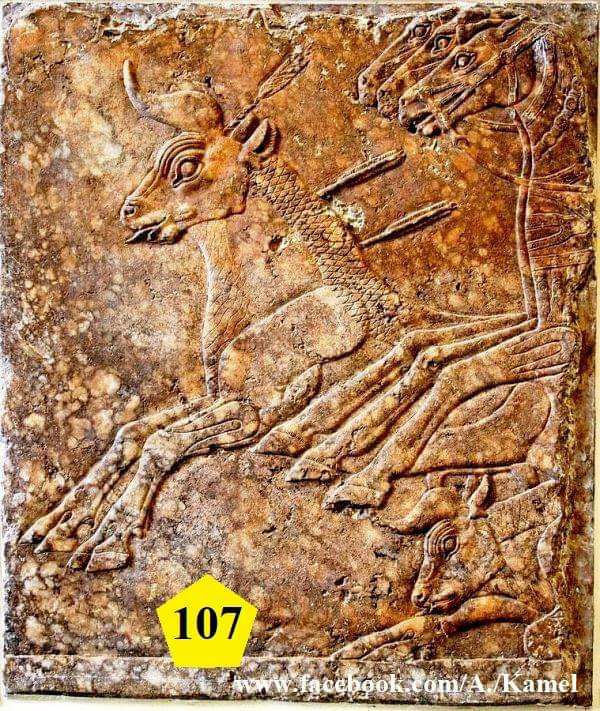
A slab of alabaster engraved with a bas-relief representing hunting found in Nineveh Iraq dated 695 BC King Sennacheribat the pergamon Museum in Berlin
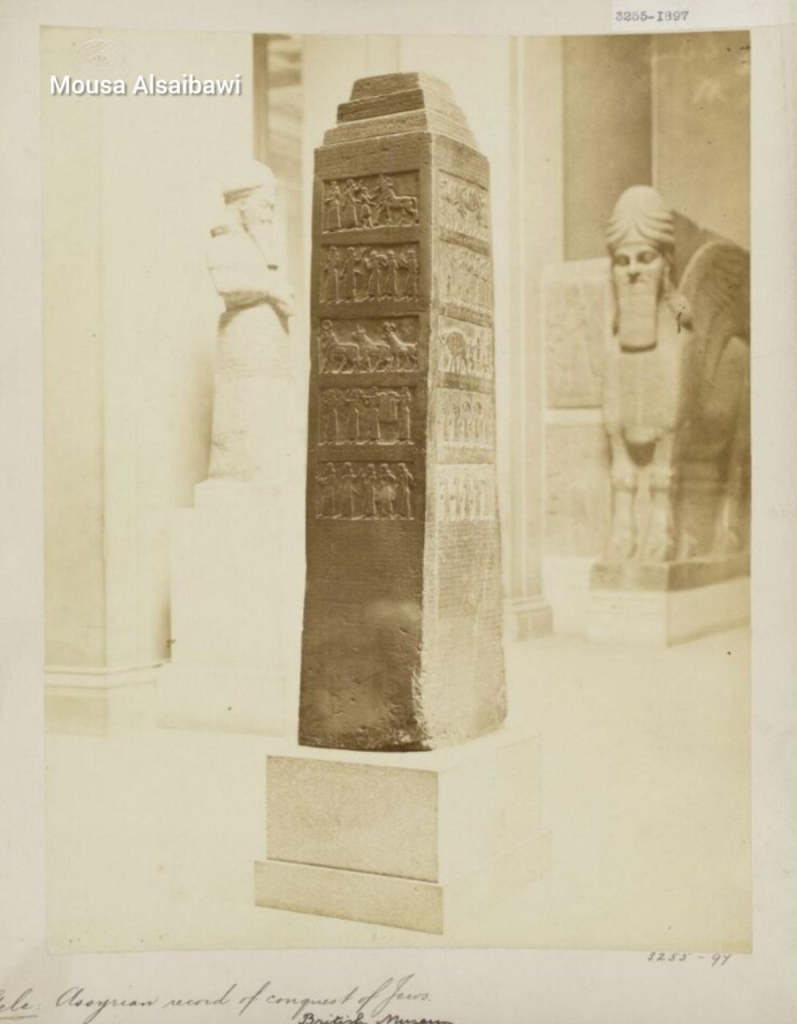
Assyrian Hall
British museum
From Mesopotamia Iraq Layard’s discoveries caused a media sensation and captured the public imagination. This had a major impact on painting and applied arts, in the UK and beyond, during the second half of the nineteenth century which led to a brief phase of Assyrian revival The Assyrian sculptures at the British Museum largely remain today where they were first installed 160 years ago
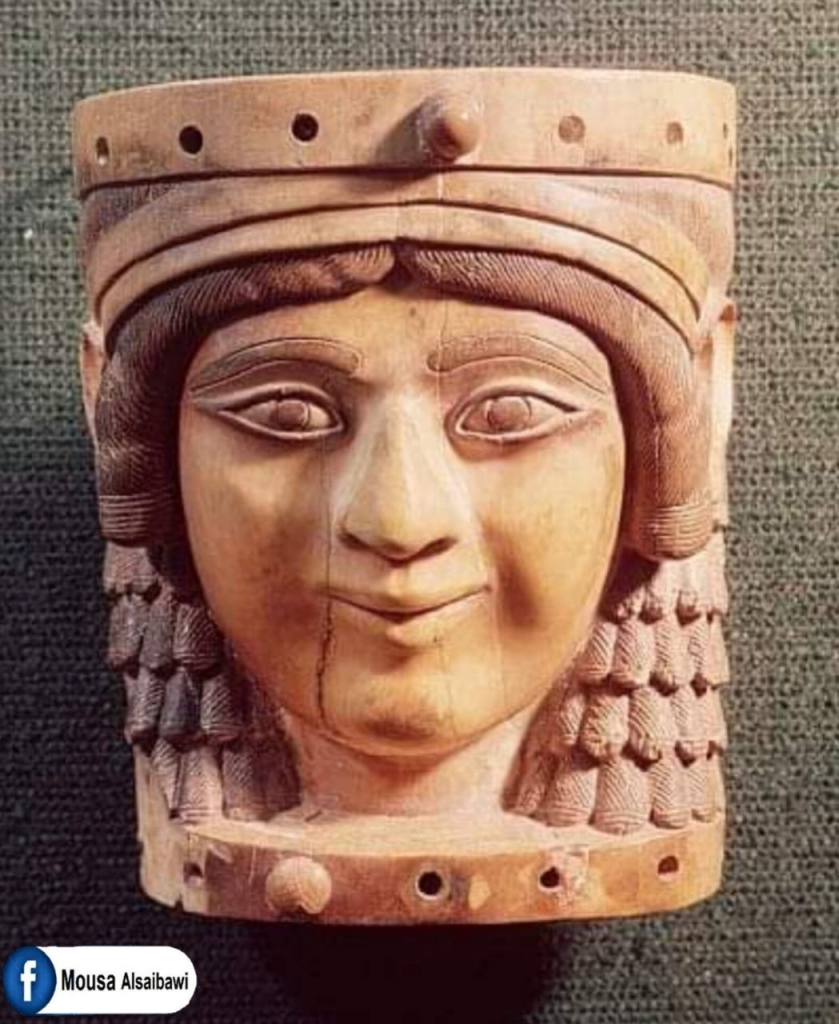
Mona Lisa of Nimrud
Head of a Woman from the Palace of Salmanassar III 800 BC Iraq Mesopotamia
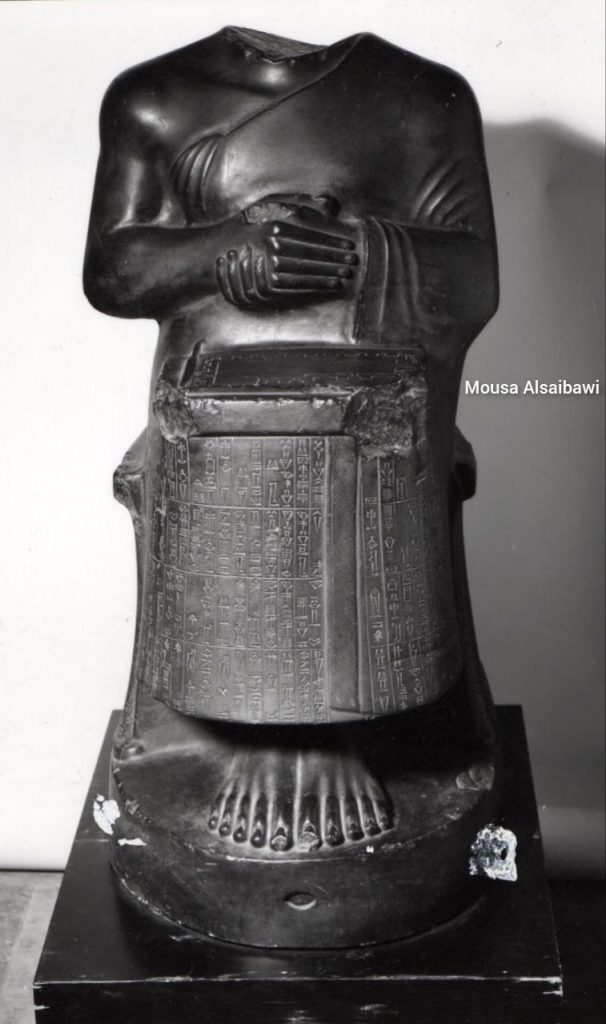
Gudea
This is a statue of a prince and not just any prince It’s Prince Gudea he ruled over the kingdom of Lagash in Mesopotamia Iraq
Architect with Plan , Plan of the first sacred temple recorded in history Seated Gudea holding temple plan 2100 B.C.E.Look at his folded hands : this is a gesture of prayer . Gudea was very religious . Gudea had many temples built , where he put statues of himself One of them shows the prince seated Neo-Sumerian /Ur III period
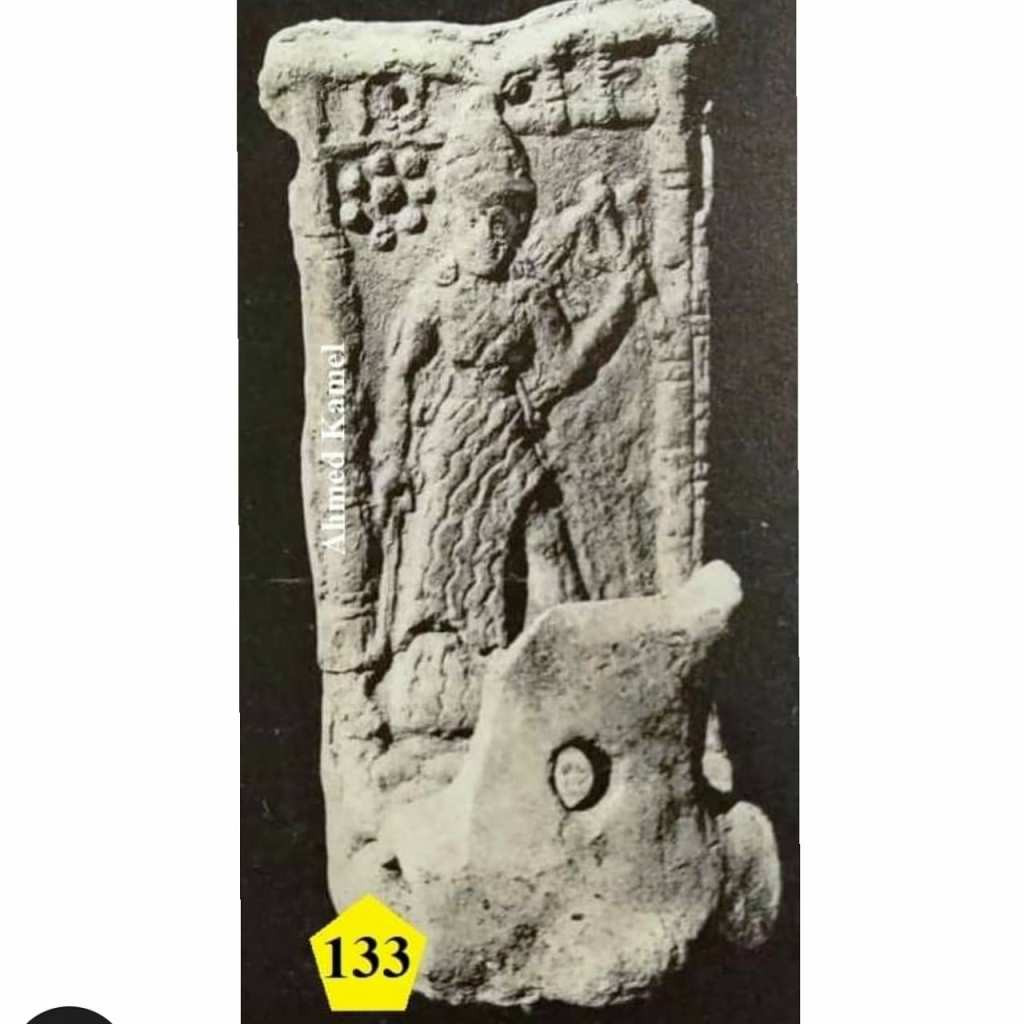
Model of the chariot of the goddess Ishtar According to ancient Iraqi beliefs
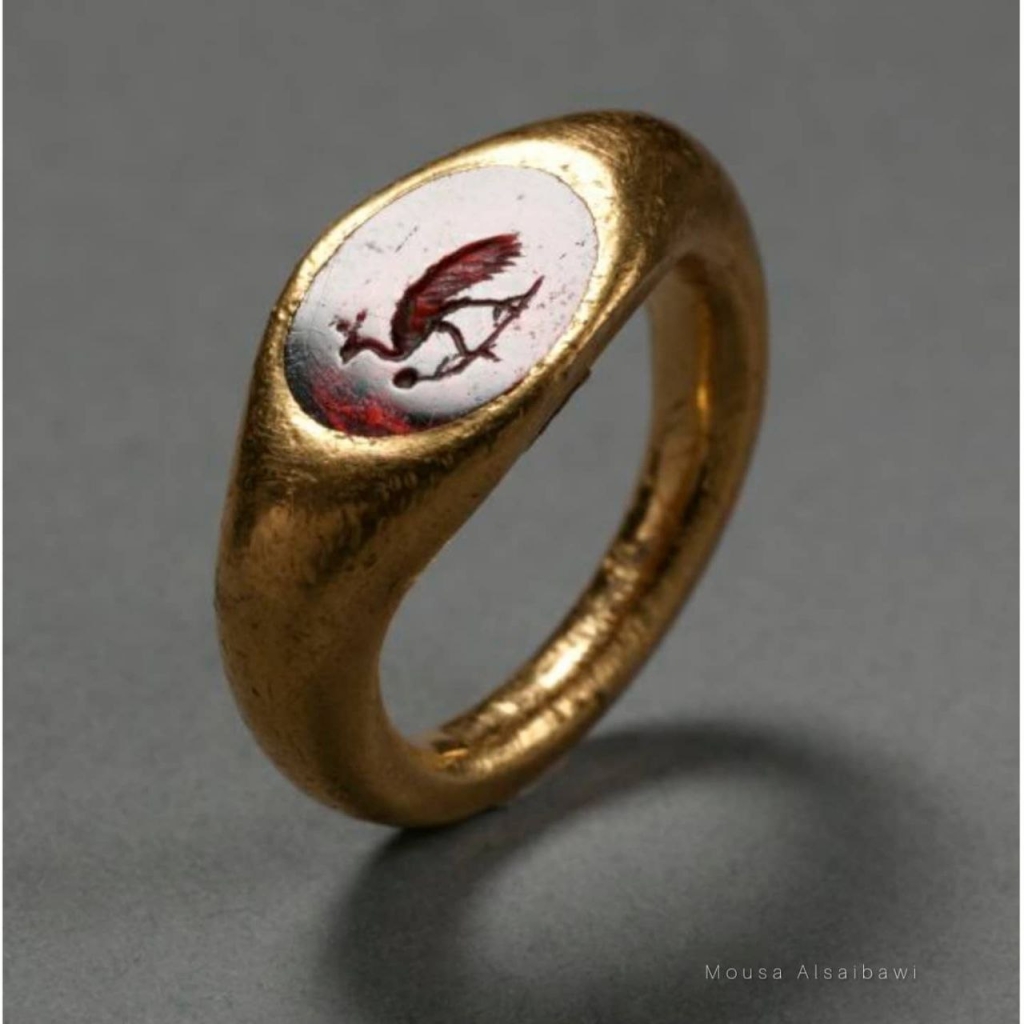
Peacock Rin
Seleucia Iraq
Gold and chalcedony
Joint Expeditions-Iraq Excavations Fund 1933 Clevland museum
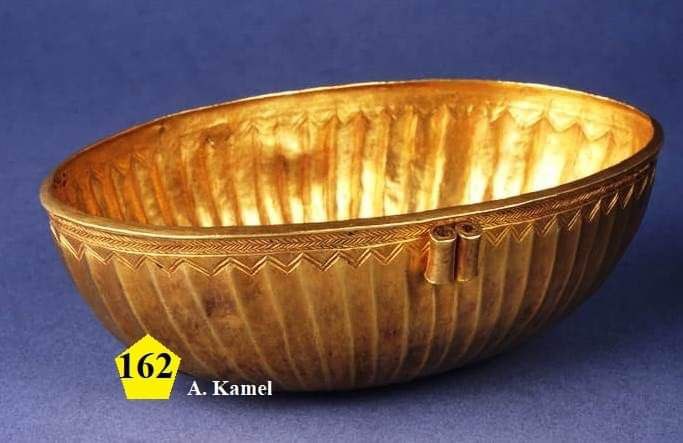
a vessel of gold 2600 BCE from ancient city of Ur iraq Sumerian civilization
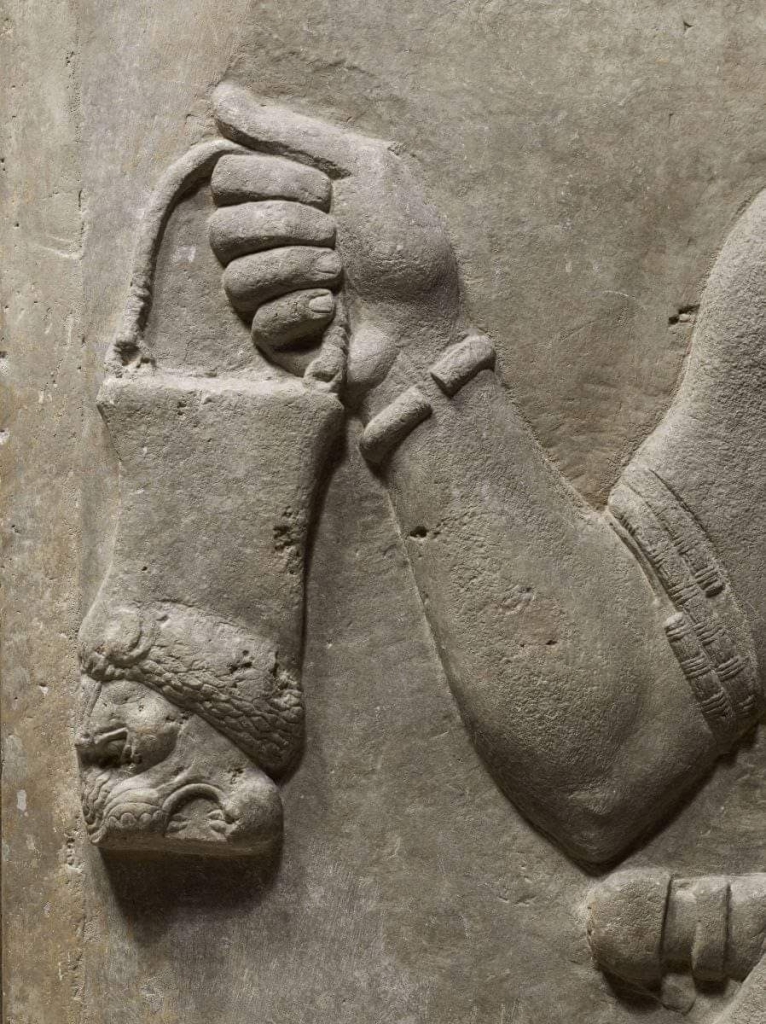
Details from one of the murals discovered in the palace of Sargon II of Assyria 722 BC
northern Iraq Mesopotamia
Mousa Alsaibawi

Weight in shape of frogca. 2000–1600 B.C.
Babylonian civilization Mesopotamia Iraq
Zoomorphic weights were widespread in the ancient world. Weights in the shape of frogs and toads were rare in the Near East, but they do occur in Egypt. This frog weight is dated to the second millennium B.C. on the basis of the four line Akkadian inscription under its throat a frog [weighing] 10 minas, a legitimate weight of the god Shamash, belonging to Iddin-Nergal, son of Arkat-ili-damqa The mina was the Mesopotamian unit of measure, weighing about 500 grams (18 ounces) The weight system
Mousa Alsaibawi
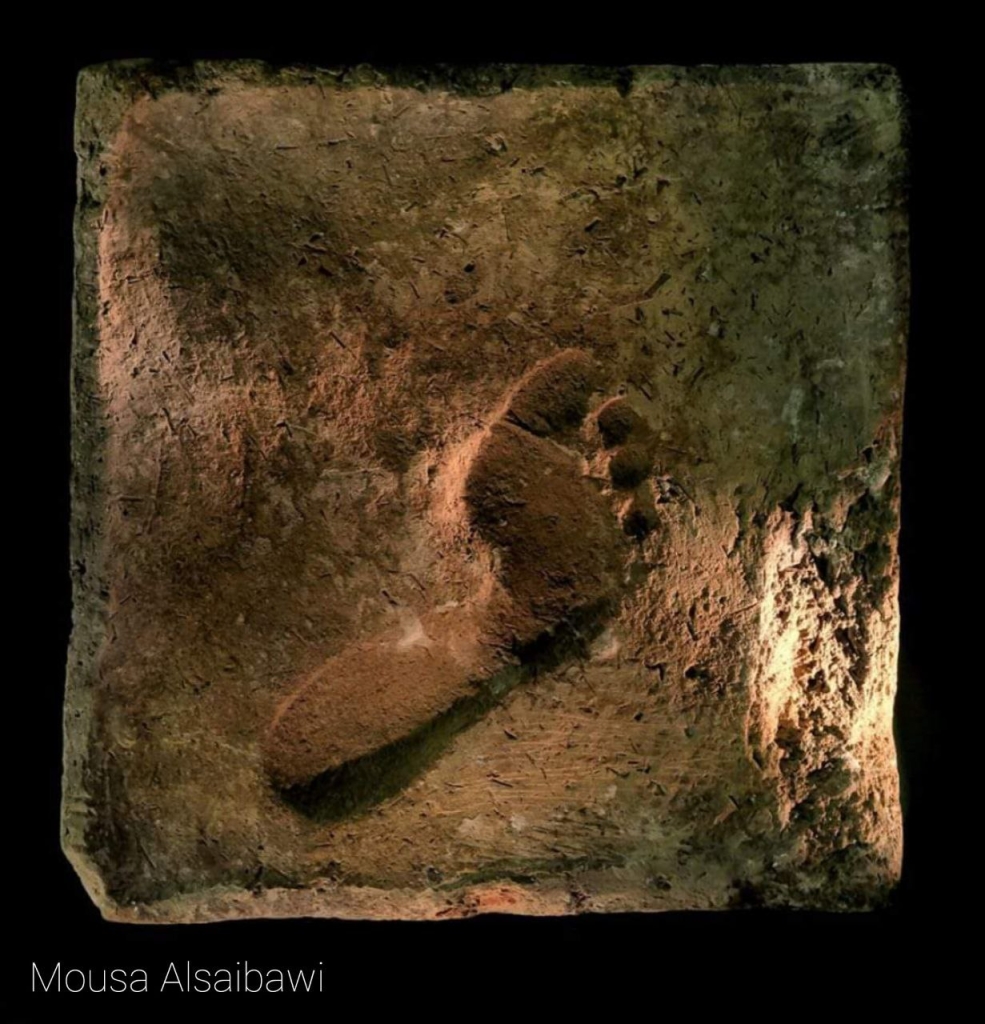
Print of Human foot
Brick Walls of Ur Print of Human foot
Ur III Date Ur-Nammu 2100-2000 BCE Mesopotamia Iraq
Mousa AlsaibawI
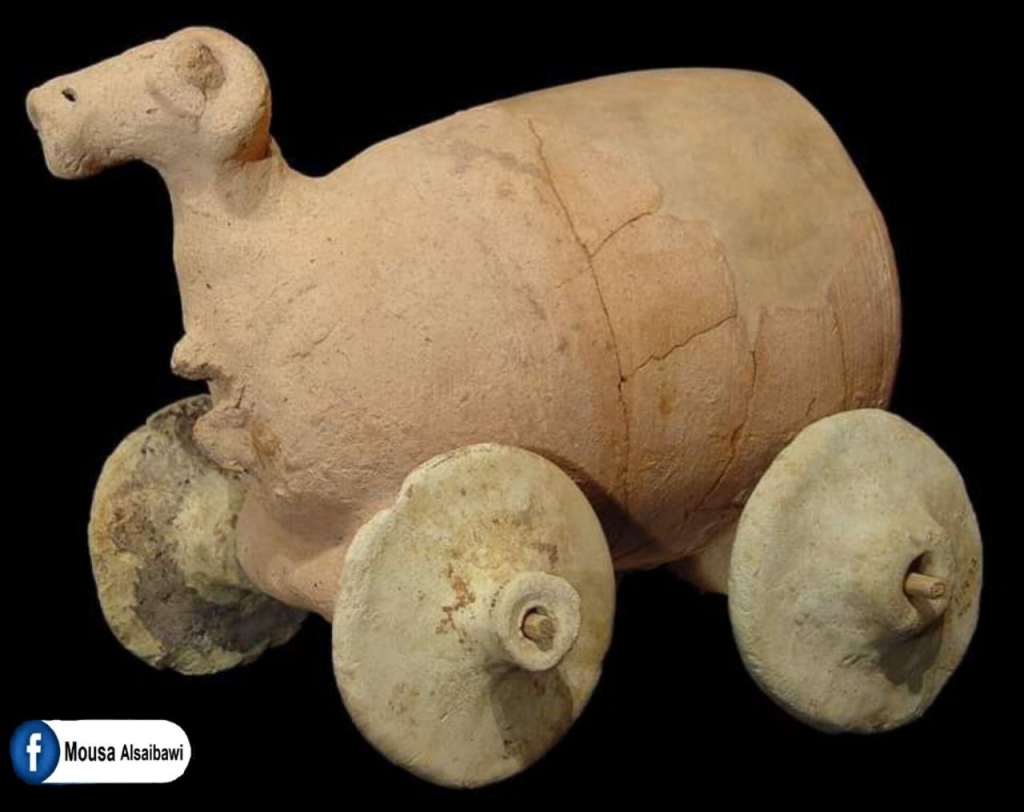
in ancient Iraq as today, children’s toys were often wheeled
This example is a ram with curving horns on wheels that could be pulled by a child. It has been designed so that the animal rests on two clay axles to which wheels are attached.Iraq, Akkadian civilization (2334-2154 BC)
Mousa Alsaibawi

Fired clay mould-pressed figurine of woman suckling her child; flat back; lower portion missing.
Cultures/periods
Late Babylonian
Excavated by: Hormuzd Rassam
Findspot Birs-Nimrud (Borsippa)
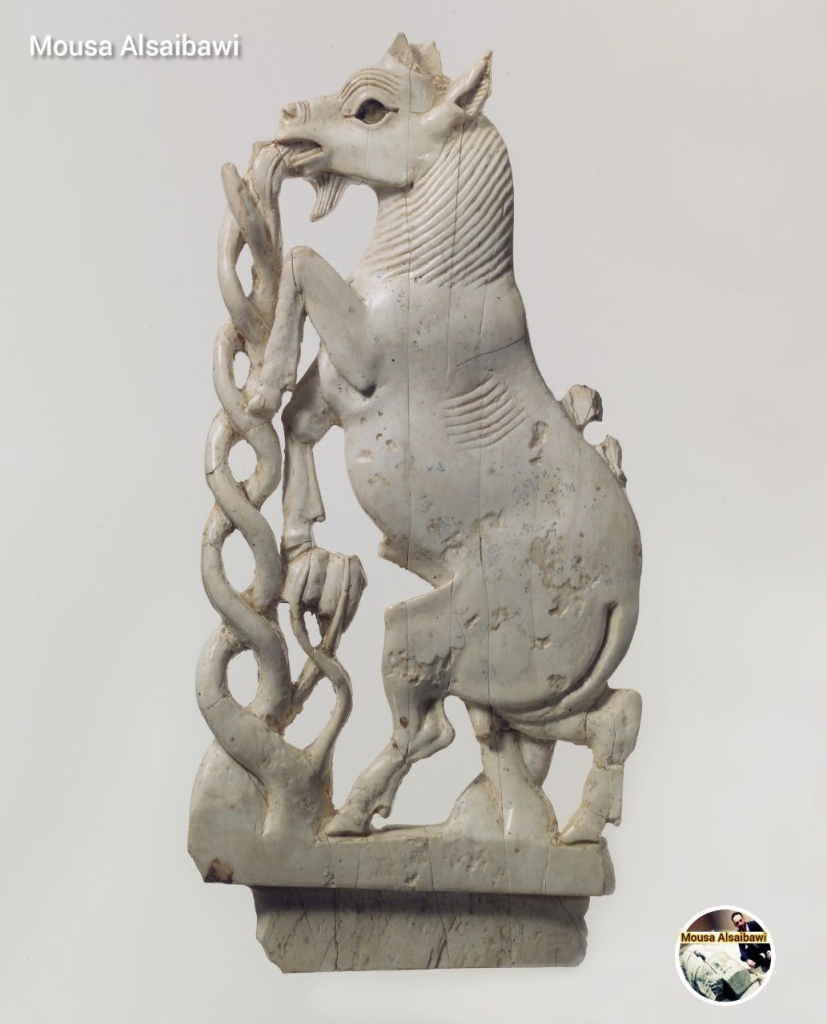
Openwork furniture plaque with a rearing goat
800 B.C. Mesopotamia Nimrud Kalhu Iraq
Culture Assyrian
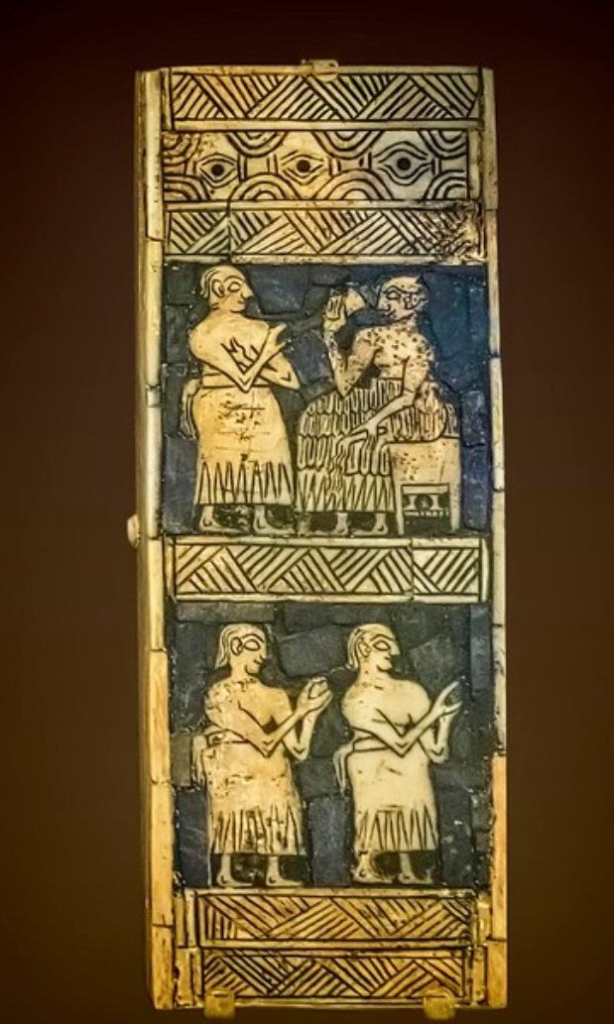
Lyre inlay of shell from the royal cemetery of Ur Iraq mesopotamia 2550-2450 BCE
Pennsylvania Museum
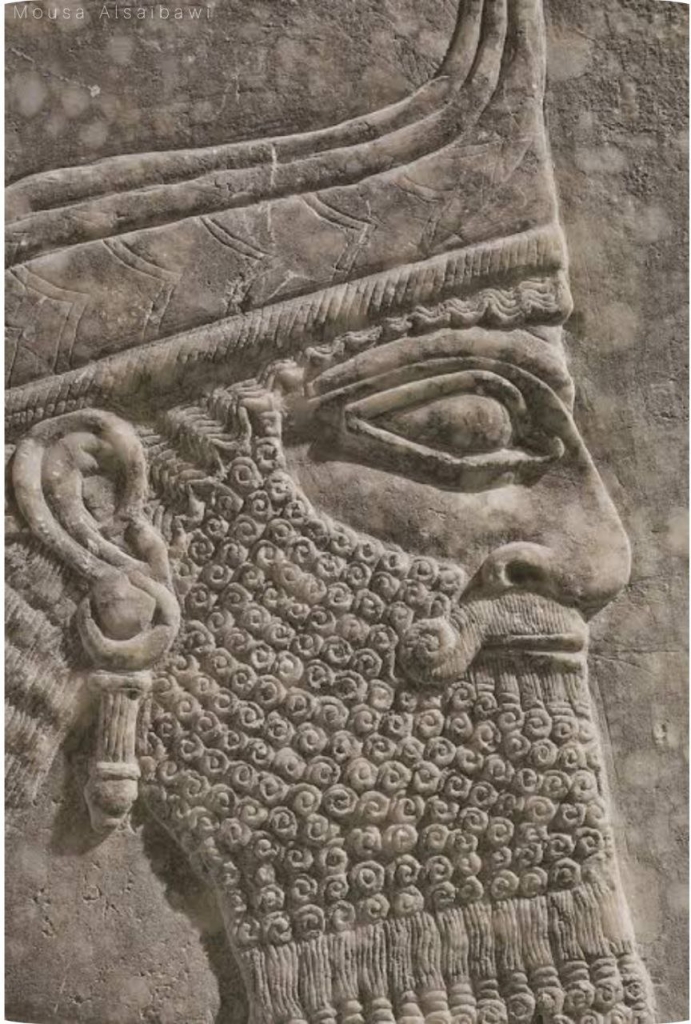
An Assyrian gypsum relief of a winged genius reign of Ashurnasirpal II, circa 883-859 BC.
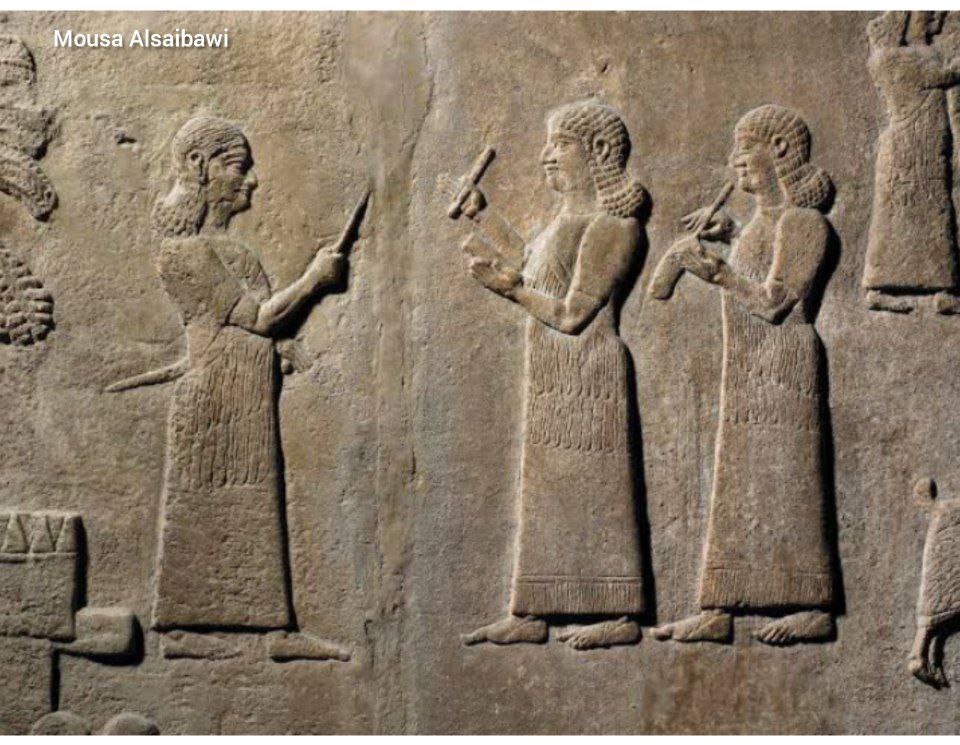
Gypsum wall panel relief: a beardless officer stands, wearing a long garment and the fringed wrap, his left hand resting on his sword, his right holding a short stick. He appears to be counting out the spoil to the two Assyrian scribes standing opposite
Stone panel from the Central Palace of Tiglath-pileser III, Neo-Assyrian mesopotamia Iraq
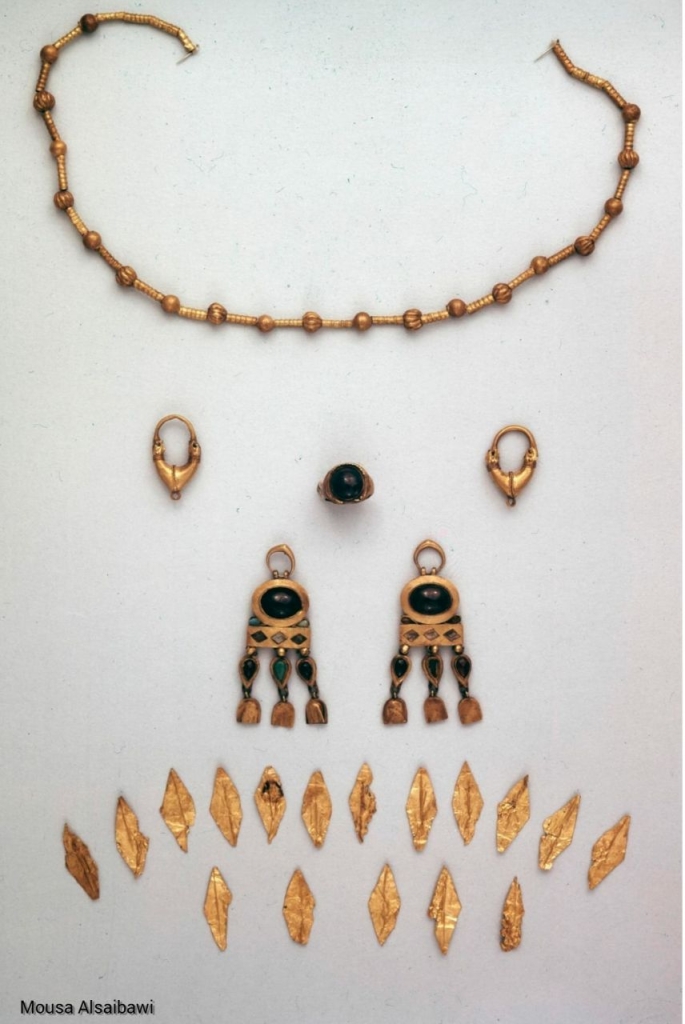
Gold ear-ring with filigree decoration; ring at base for suspension of pendant; gold-wire binding at two ends of crescent.Cultures Parthian Production date2ndC Nineveh iraq Mesopotamia
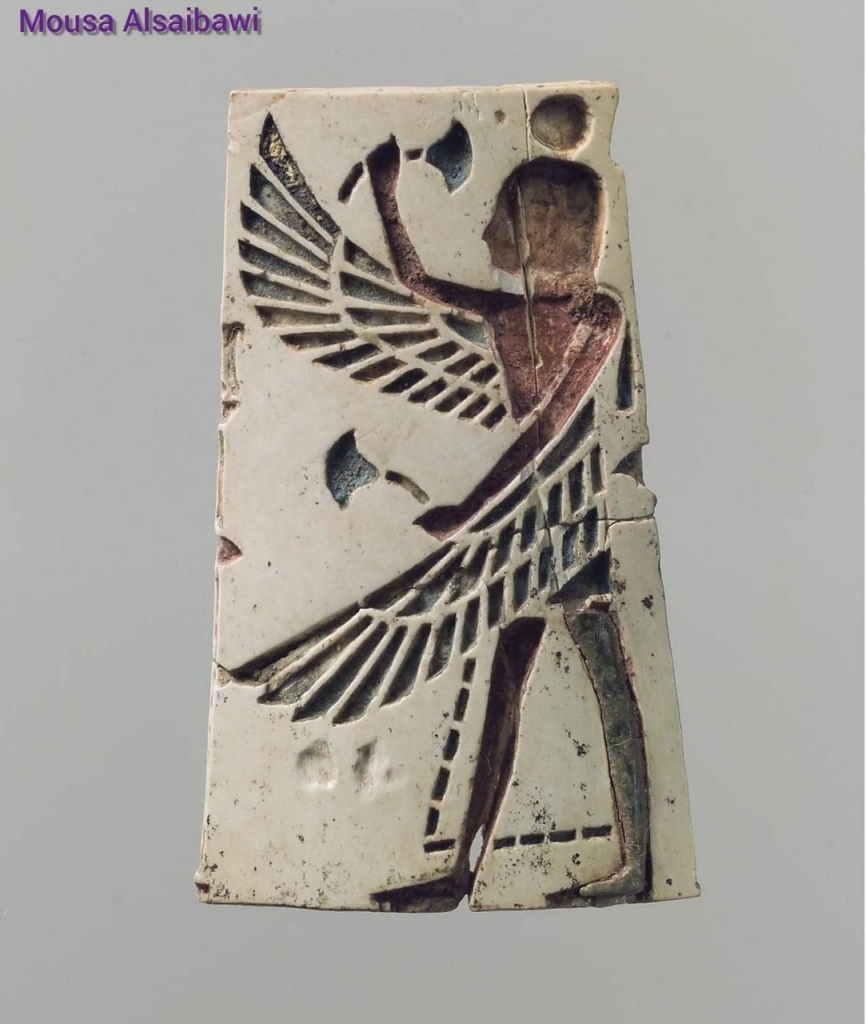
cosmetic box plaque with a winged youth Period Neo-Assyrian Mesopotamia iraq 800 BCE
This slightly convex plaque with tapering sides depicts a winged youth holding a papyrus blossom in each hand. It was found in a large storeroom at Fort Shalmaneser, a royal building at Nimrud that was probably used to store tribute and booty collected by the Assyrians while on military campaign. This piece was probably used to decorate a circular cosmetic box or as an inlay for a wooden piece of furniture. It is carved in the champlevé technique, in which recessed spaces cut into the plaque were filled with colored inlays. The red pigment that can be seen in the cells of the body is primarily composed of iron, a red colorant,
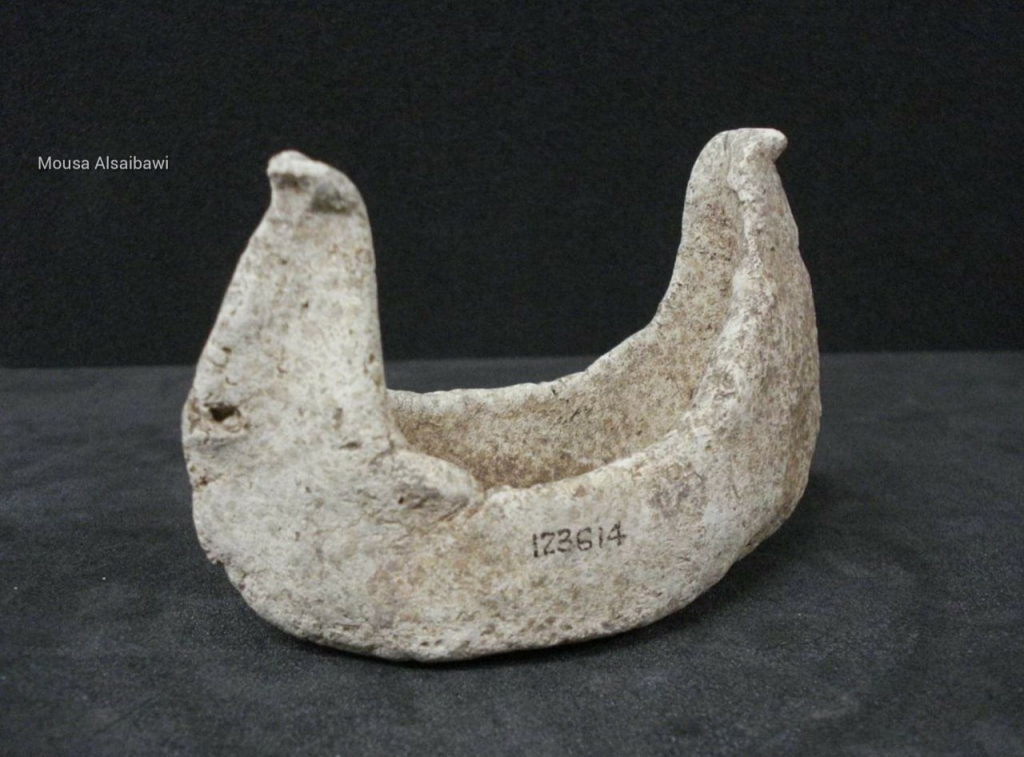
Clay model of double prowed boat with hole for fixing cord; high stern, flat base and pinched wall 2500 BCE Ur Mesopotamia iraq
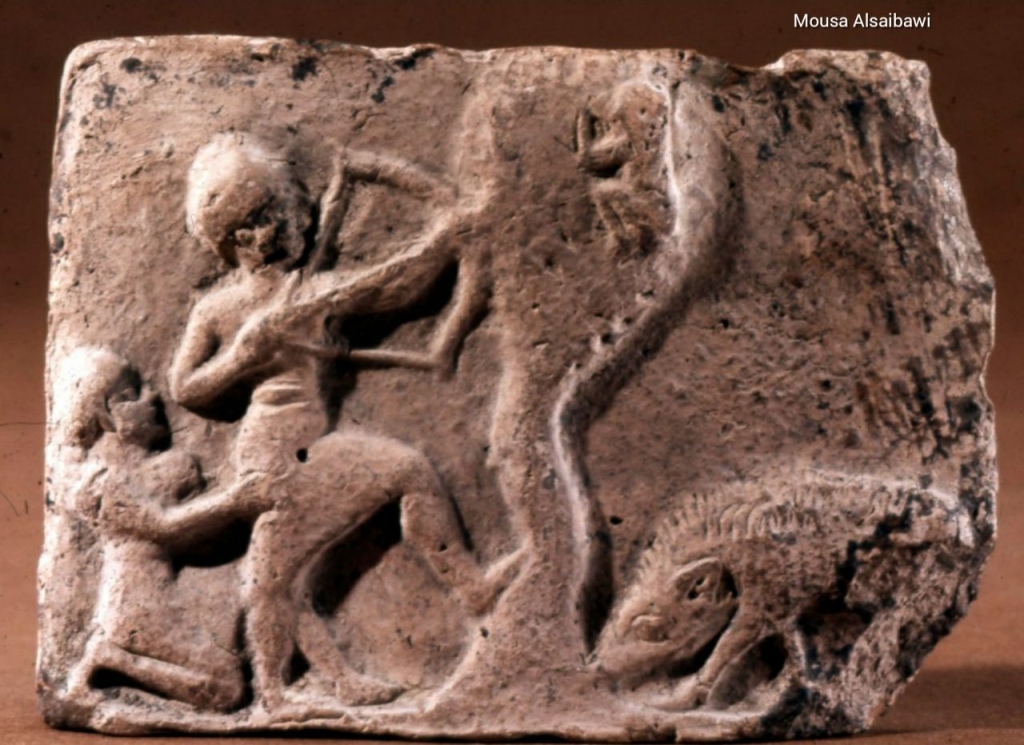
Fired clay plaque rectangular lower right hand corner broken moulded in low relief a man with an assistant kneeling behind is depicted shooting with a compound bow (hence the curled tips) at at a monkey in the branches of a tree in the centre on the right there is a boar facing the foot of the tree
Old Babylonian Production date2000BC-1600BC Mesopotamia iraq
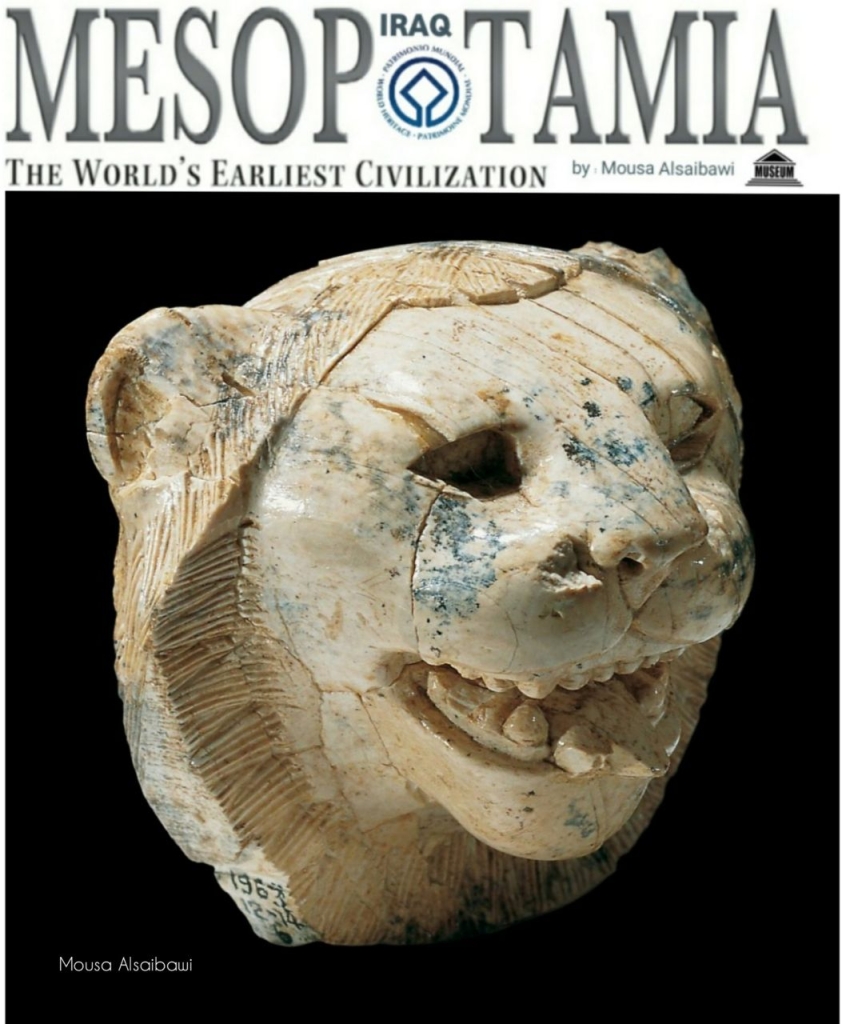
Ivory lion’s head carved in very high relief. The back is flat with a rectangular mortise for attachment.
Cultures/periods Phoenician Assyrian civilization
Production date900BC-700BC
Findspot Excavated/Findspot: Fort Shalmaneser North Iraq Mesopotamia
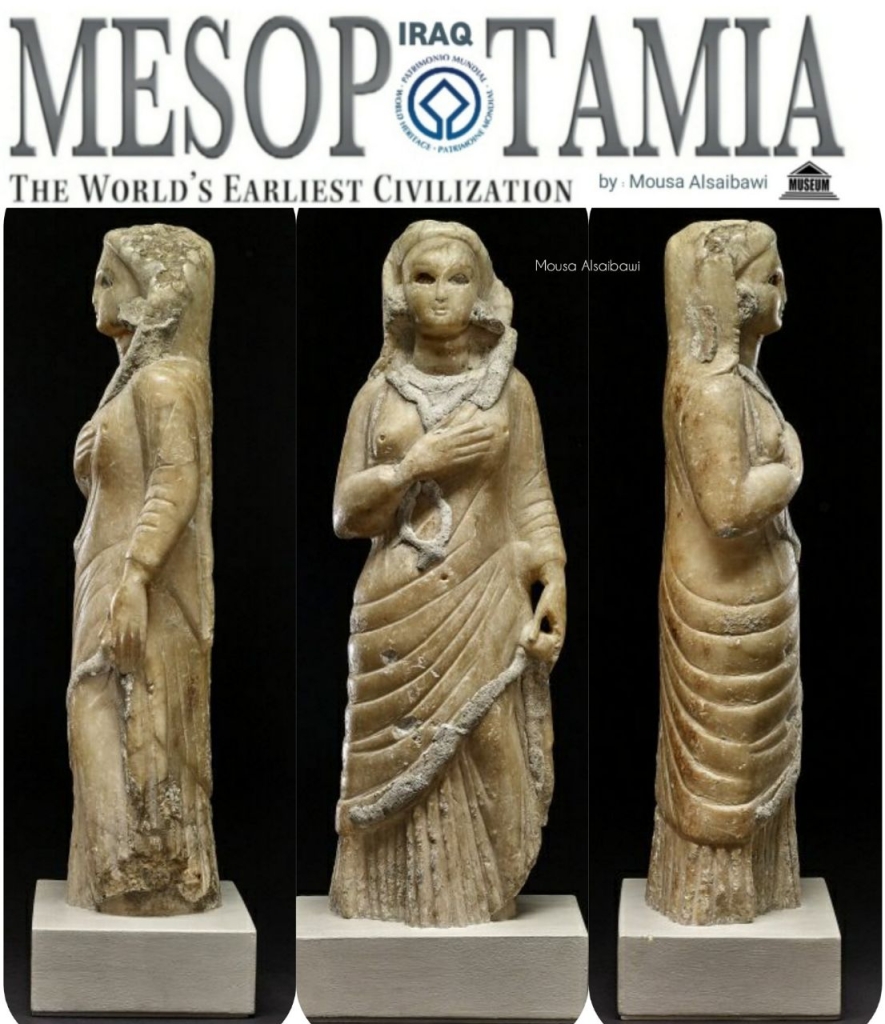
Stone statuette of standing female figure
Findspot Birs-Nimrud iraq1stC-2ndC with right hand raised holding veil carved stone with applied plaster details, with trace of original pigment surviving with black pigment on cheeks eyebrows and hair red pigment on the neck hands and drapery, and yellow pigment on the navel left hand and folds of drapery Parthian

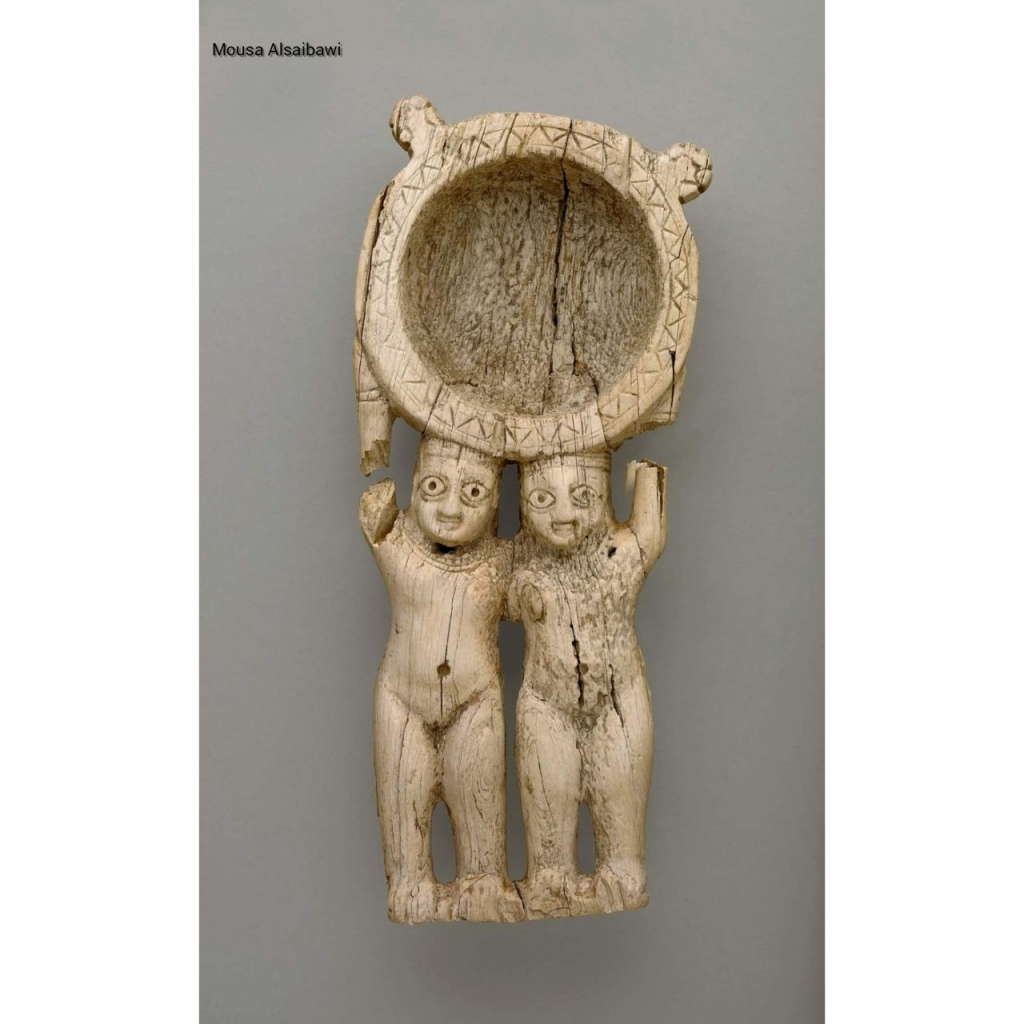
Ivory ladle or cosmetic box; two projections and handle in the form of naked boys with upraised arms. Cultures/periods Late Babylonian Production date 700BC-600BC Excavated by: Sir Leonard Woolley Ur Mesopotamia iraq
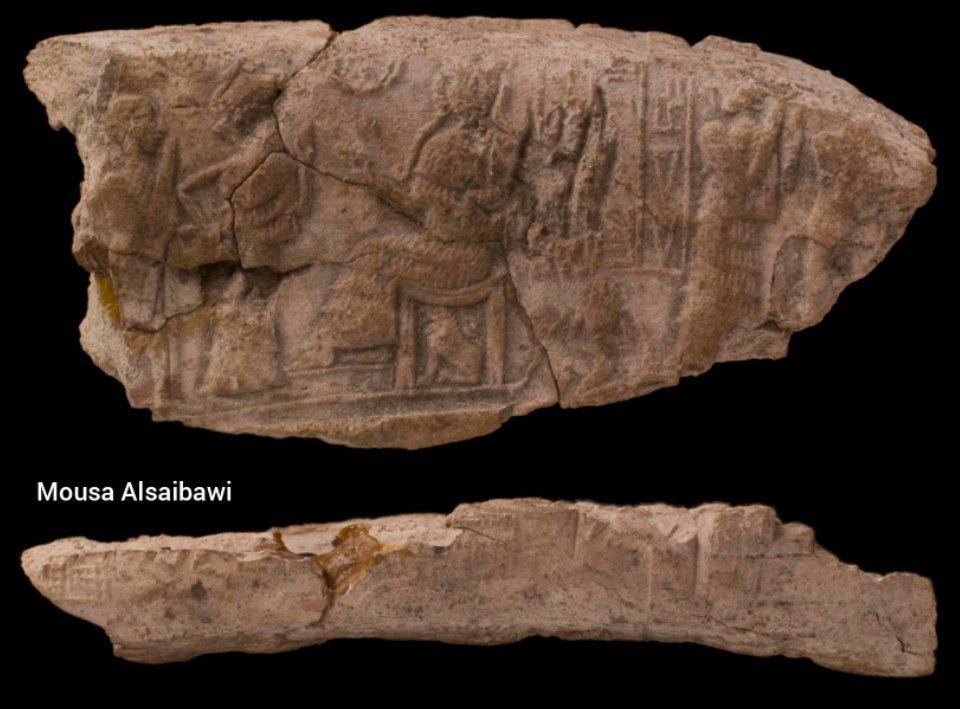
Fragment of a clay tablet or seal impression, introduction to a god and inscription; partially repaired.
Seal impression: a head-shaven and beardless worshipper proceeds to the right with his right arm raised, he is led by a goddess, with the left arm raised, who holds his left hand, she wears a flounced robe and the headdress with a couple of horns. A goddess, possibily Inanna, facing left, is seated on a throne beneath which there is a lion; she has her right arm raised and she is facing front whilst the rest of her body is seen in profile. Her feet are placed on a small platform. the deity wears a flounced robe and the headdress with a couple of horns and she has long hair, behind her there is a little lahmu kneeling. There is a star-disc crescent in the field.
View lessabout description
Cultures/periods
Third Dynasty of Ur
Production date
2100BC-2000BC
Excavator/field collector
Excavated by: Sir Leonard Woolley
Excavated/Findspot: Ur mesopotamia Iraq
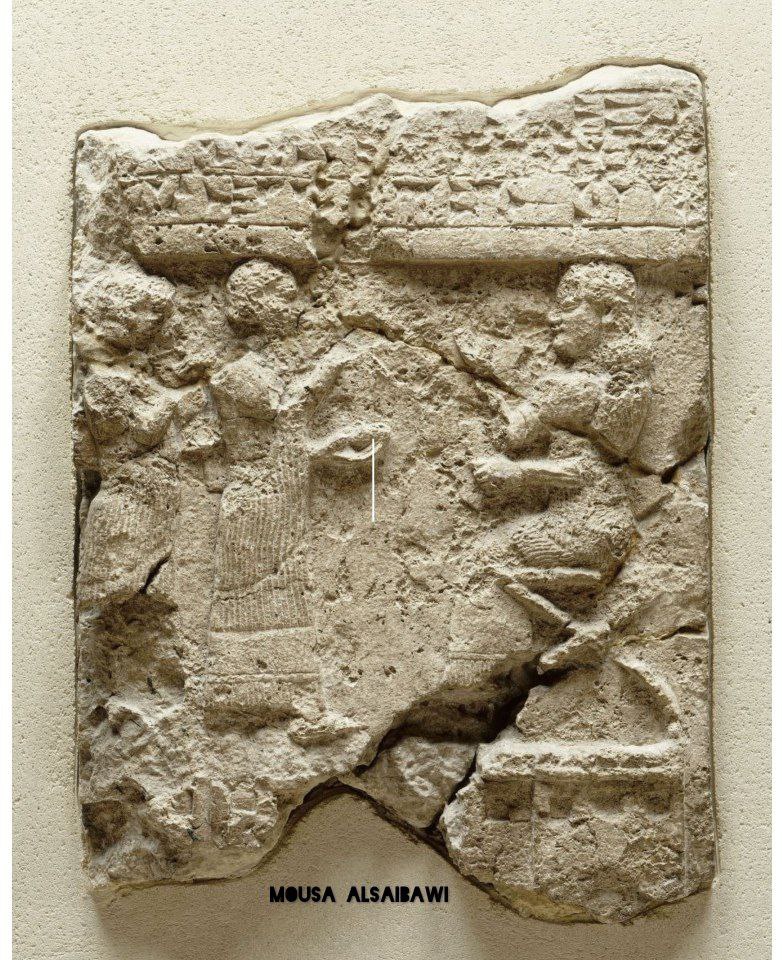
Relief scribes recording goods looted from the temple of Musasir
721 BC excavations in mesopotamia Iraq Khorsabad, palace 1843-1844
Musasir The city in modern town of Rowanduz in Erbil
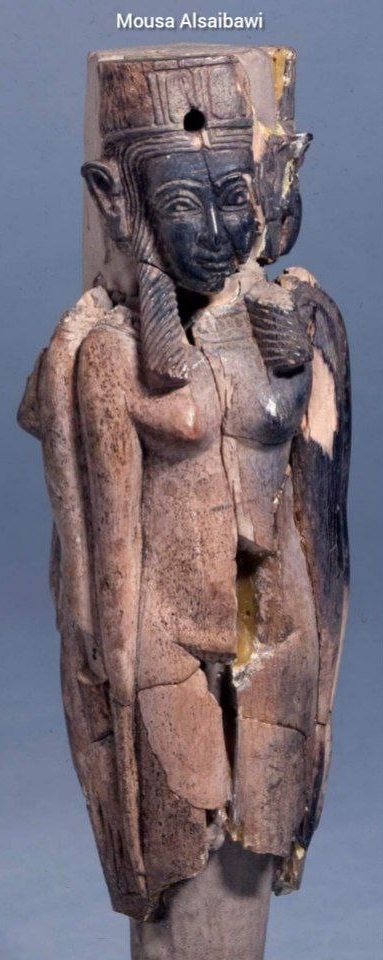
Ivory artefact depicting face and right ear of a female; head bound with a coronet; perforated.
Excavated by: William Kennett Loftus
Excavated (Nimrud) calhu mesopotamia Iraq
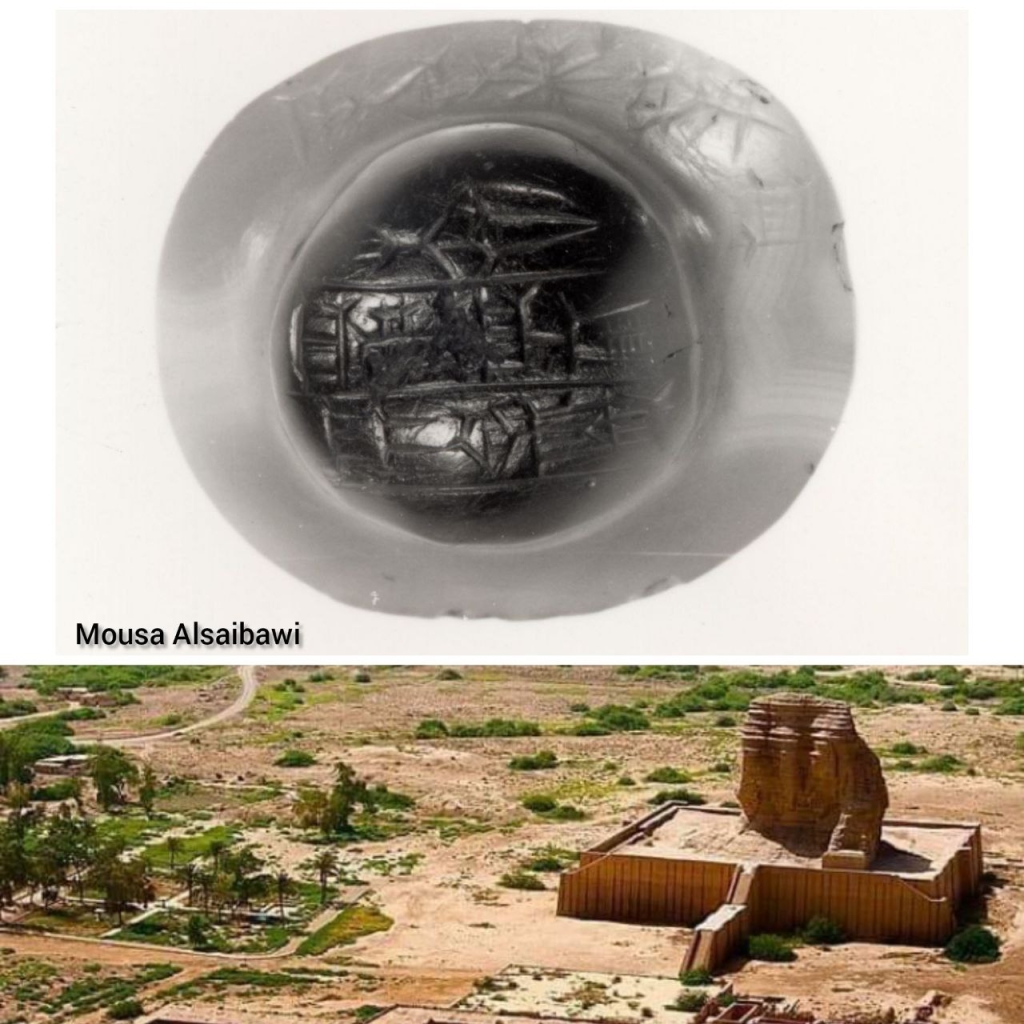
eye-stone
Description
Agate eye-stone; inscribed on pupil; 4 ll
Cultures/periods
Kassite mesopotamia Iraq
1400BC-1300BC
Excavated Babylon (Iraq)
Inscription script: cuneiform
Inscription translation: To Adad, his lord, Gimil Sin, hath presented.
Inscription note: Dedication by King Kurigalzu to the storm god Adad.

Figurine Obeid magnificent painted masked head 6400 BC discovered in South Iraq Mesopotamia
Tête de figurine en terre cuite peinte (LO 89 14) retrouvée dans la ruelle au sud du Bâtiment 37 Obeid 0 (6400-6000 av. J.-C.). Il s’agit d’une magnifique tête masquée peinte
MISSION ARCHÉOLOGIQUE FRANÇAISE DE LARSA-
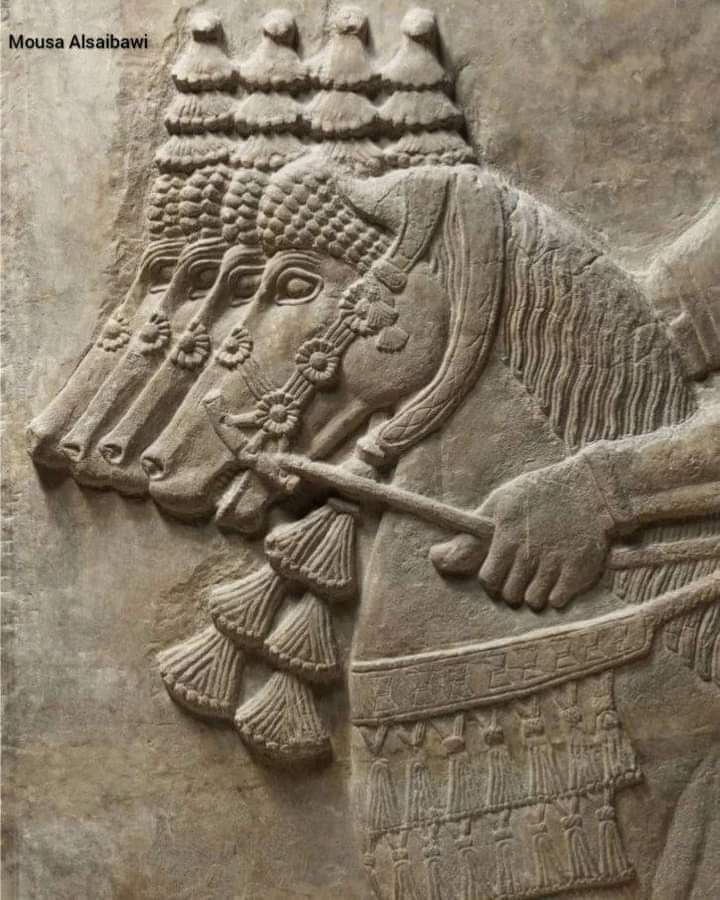
Details of an Assyrian mural discovered in dur sharukien, Iraq mesopotamia 700 BC, Louvre Museum
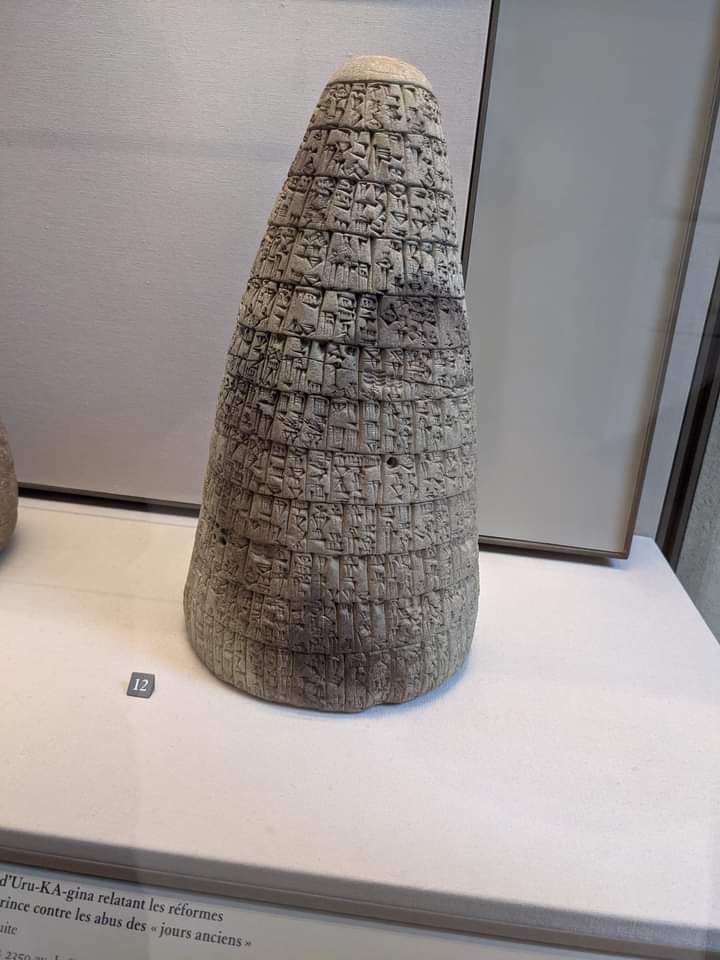
Reform cone of King Urukagina Sumerian Cuneiform Stone Cone
From The Sumerian city of Girsu, Iraq. Mesopotamia Louvre Museum
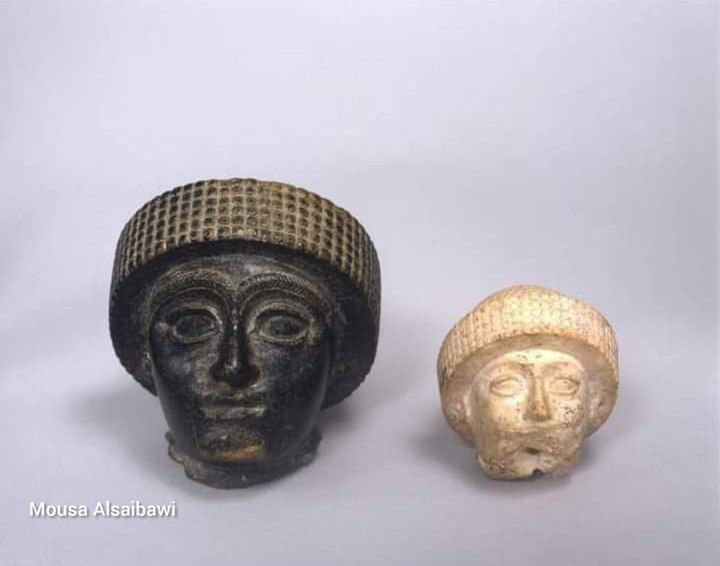
Head of Gudea
Discovered in Nippur Mesopotamia Iraq
Philadelphia Museum
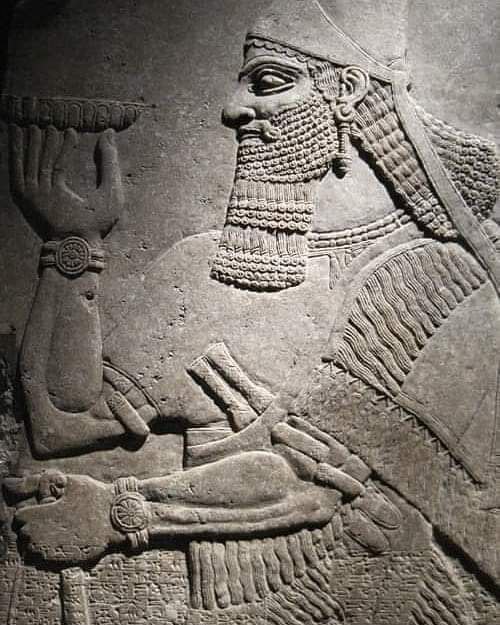
Relief from the Northwest Palace of Ashurnasirpal II at the Assyrian Imperial capital city of Nimrud north iraq(883-859 BCE). Brooklyn Museum, Brookly
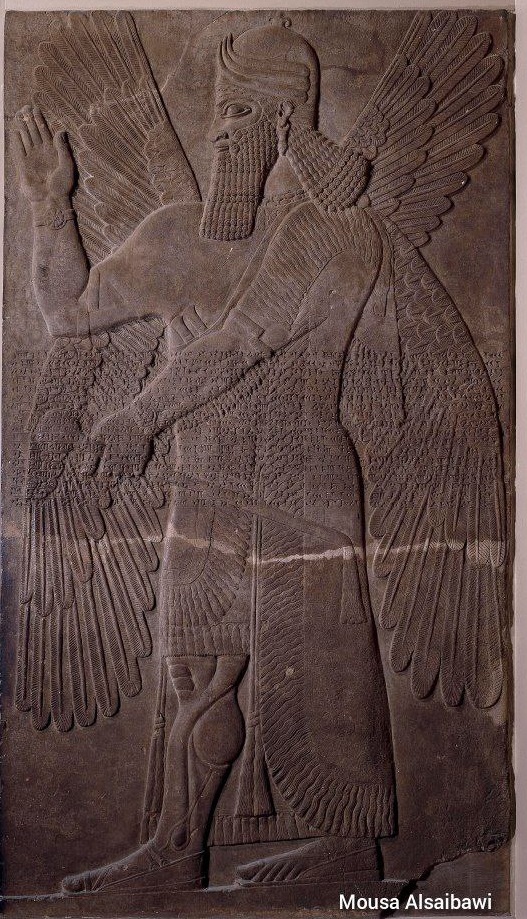
Gypsum wall panel relief showing a four-winged protective spirit facing left, wearing a three-horned cap and holding a mace. It may be performing an act of worship. This wall panel guarded one of the doors into the royal throne room. It bears the Standard Inscription of Ashurnasirpal II.
AuthorityRuler: Ashurnasirpal II
Cultures/periodsNeo-Assyrian
Production date865BC-860BC
Excavator/field collectorExcavated by Sir Austen Henry Layard (June 1846)
Findspot North West Palace Iraq, North Nimrud
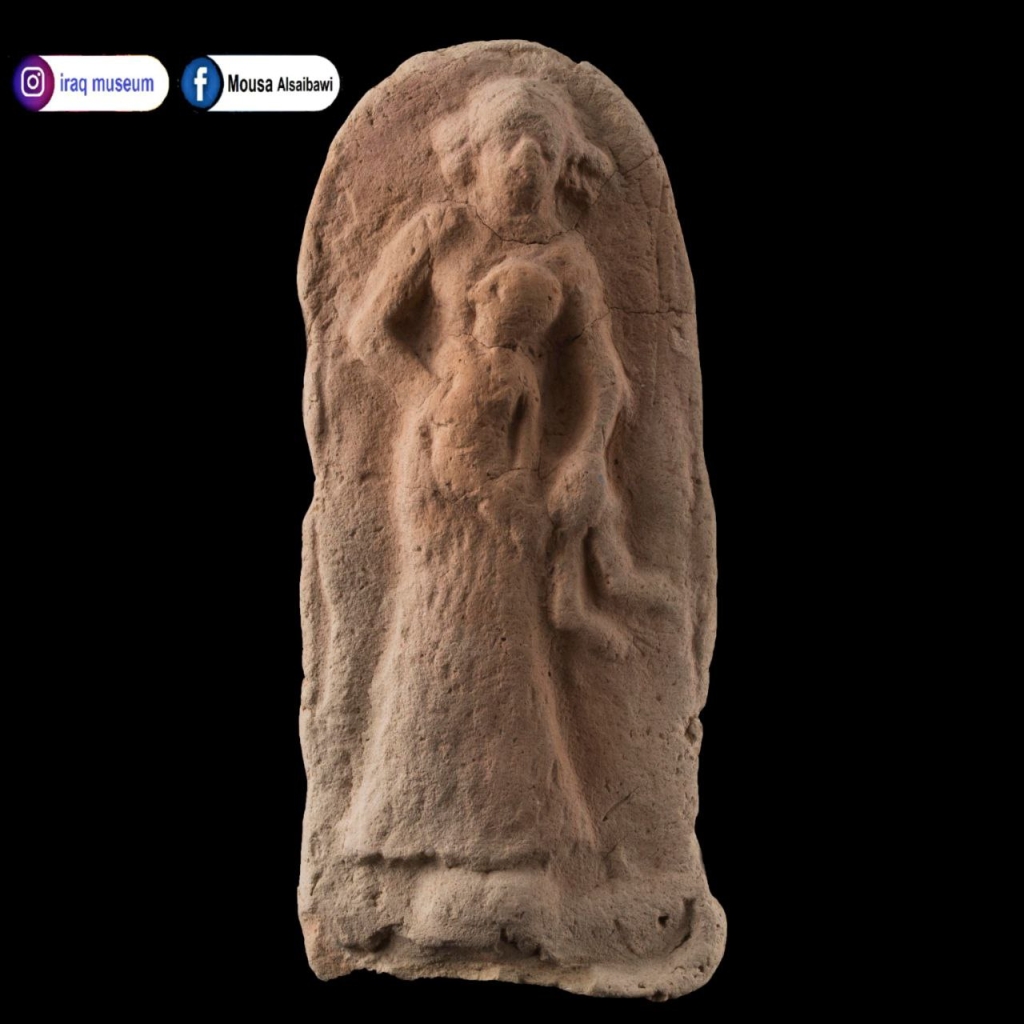
Fired clay figurine of woman and child moulded in relief on plaque
Cultures/periods
Old Babylonian civilization
Production date
2000BC-1750BC
Excavated by Leonard Woolley
Findspot Ur mesopotamia iraq
Mousa Alsaibawi
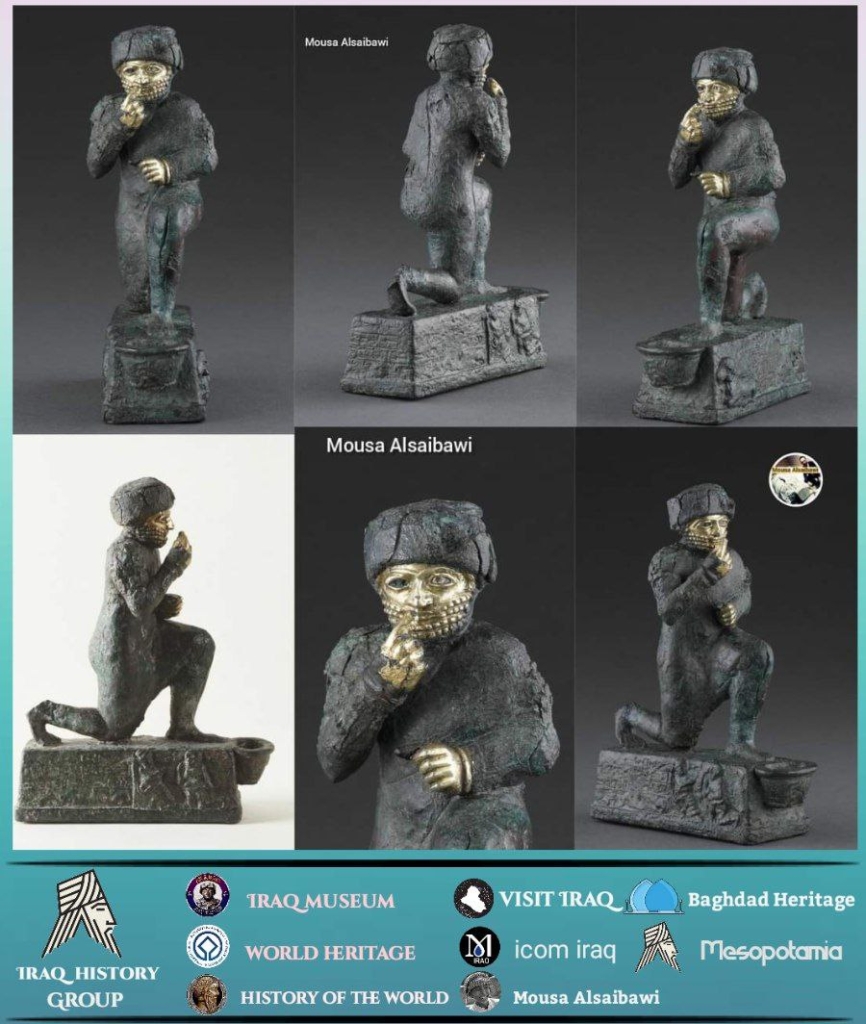
inscription indicates that the statuette
was dedicated to the god Amurru or Martu patron god of the Amorites by Lu Nanna high dignitary of the city of Larsa for the life of Hammurabi king of Babylon
Une longue inscription indique que la statuette a été dédiée au dieu Amurru ou Martu dieu patron des Amorrites par Lu Nanna haut dignitaire de la ville de Larsa pour la vie de Hammurabi roi de Babylone
1792 BCE mesopotamia Iraq
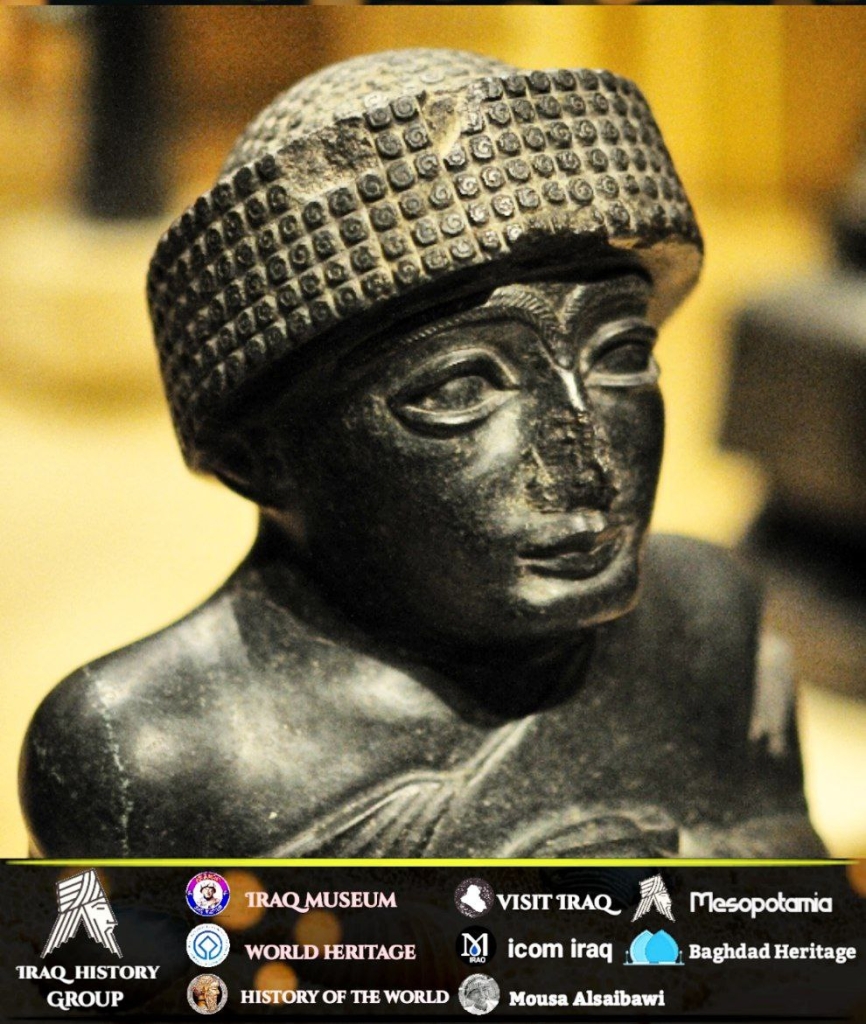
Statue of Gudea
This is a statue of a prince and not just any prince It’s Prince Gudea he ruled over the kingdom of Lagash in Iraq
Architect with Plan Plan of the first sacred temple recorded in history Seated Gudea holding temple plan 2100 B.C.E.Look at his folded hands this is a gesture of prayer Gudea was very religious Gudea had many temples built where he put statues of himself One of them shows the prince seated Neo-Sumerian

The Resurrection of Seven Clay Coffins from Nippur BY JULIA
The Museum’s clay coffins came from Penn’s 19th-century Babylonian Expeditions to Nippur which operated under an agreement with the Ottoman government
Nippur was an ancient Sumerian city located in modern Nuffar Iraq Mesopotamia
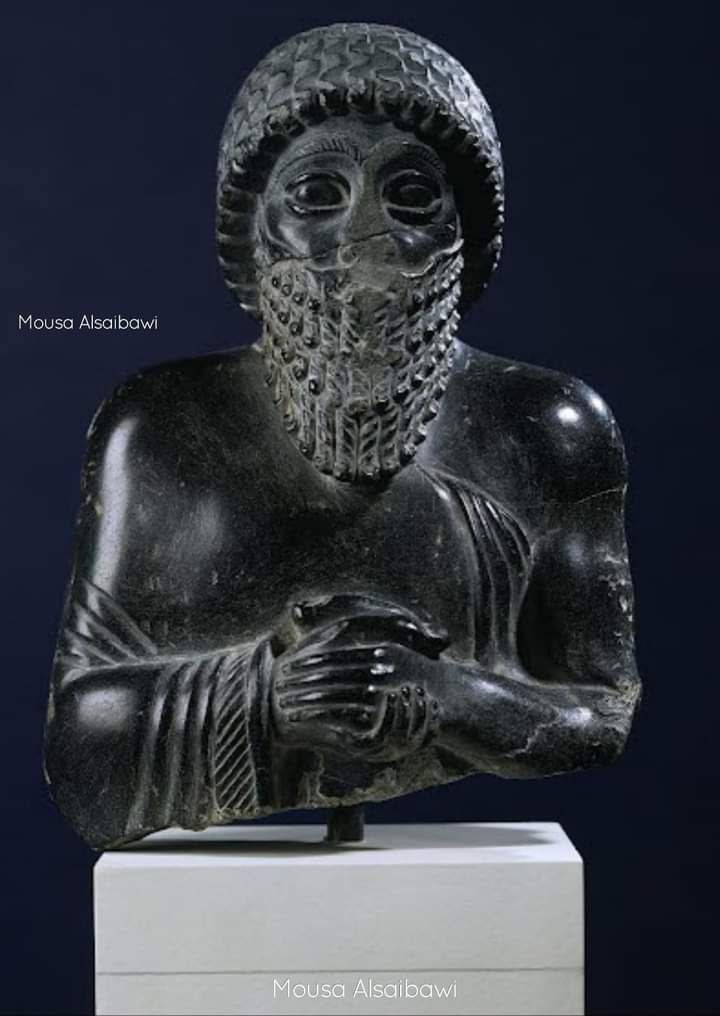
Statue of Ur-Ningirsu
son of Gudea . 2080 B.C. Sumerian ruler of the state of Lagash in Southern Mesopotamia iraq
four-winged protective spirit
Gypsum wall panel relief showing a four-winged protective spirit facing left, wearing a three-horned cap and holding a mace. It may be performing an act of worship. This wall panel guarded one of the doors into the royal throne room. It bears the Standard Inscription of Ashurnasirpal II.
AuthorityRuler: Ashurnasirpal II
Cultures/periodsNeo-Assyrian
Production date865BC-860BC
Excavator/field collectorExcavated by Sir Austen Henry Layard (June 1846)
Findspot North West Palace Iraq, North Nimrud
Mousa Alsaibawi
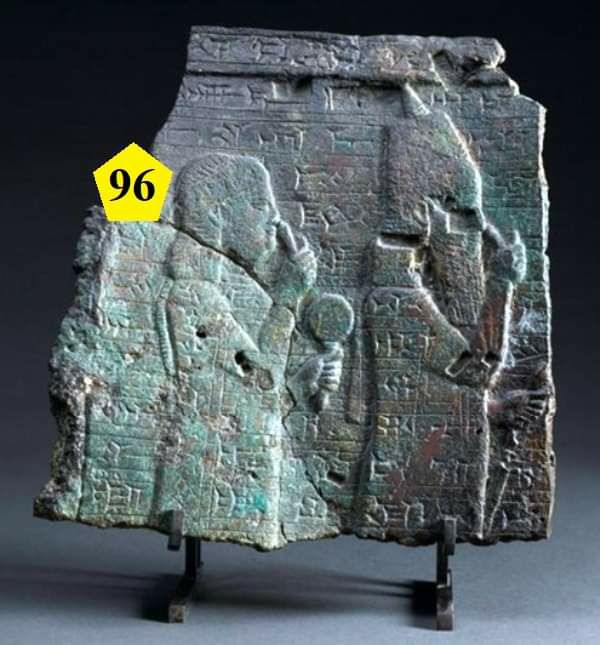
Assyrian king Esarhaddon and his mother
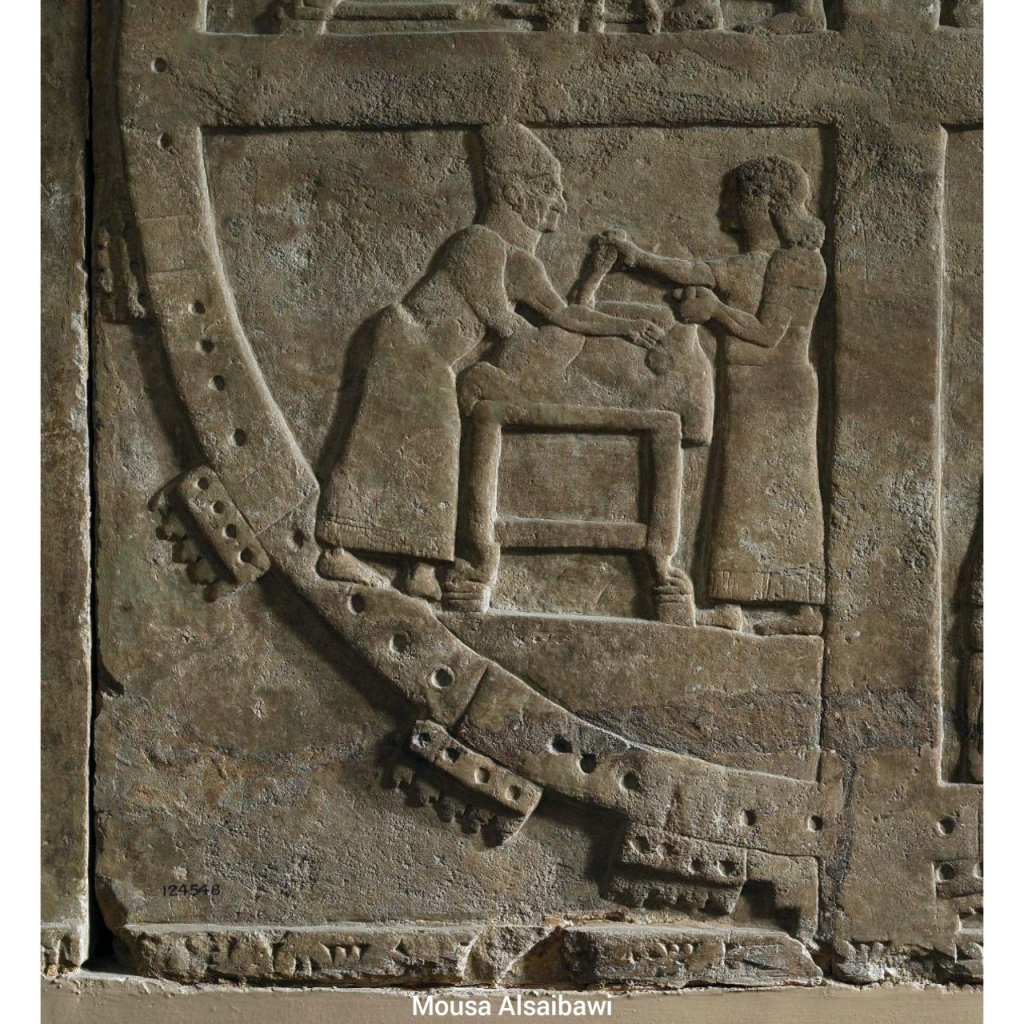
Gypsum wall panel relief carved showing a scene in the Assyrian camp. On the left is a schematic view of a circular fortified camp There is an inscription written in cuneiform Ruler : Ashurnasirpal II periods Neo-Assyrian mesopotamia Iraq date865BC-860BC
Mousa Alsaibawi

Statue, Human
Region: Diyala governorate
Country: Iraq
Place/site: Khafajeh
Chicago museum
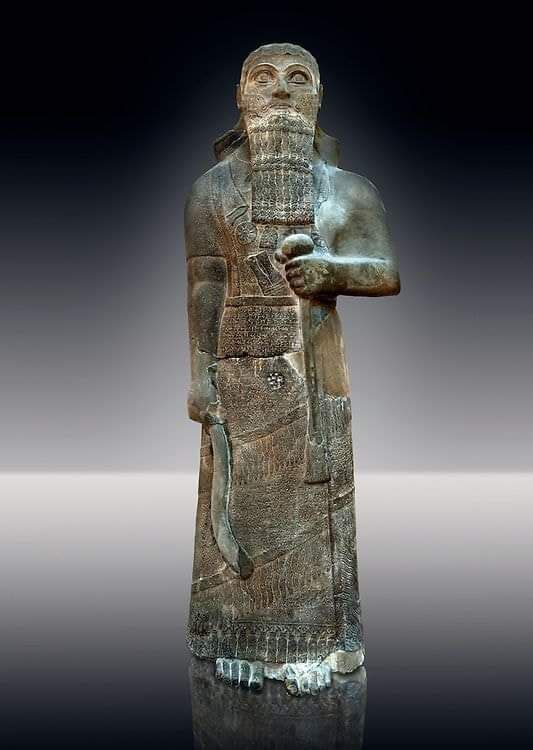
Shalmaneser III
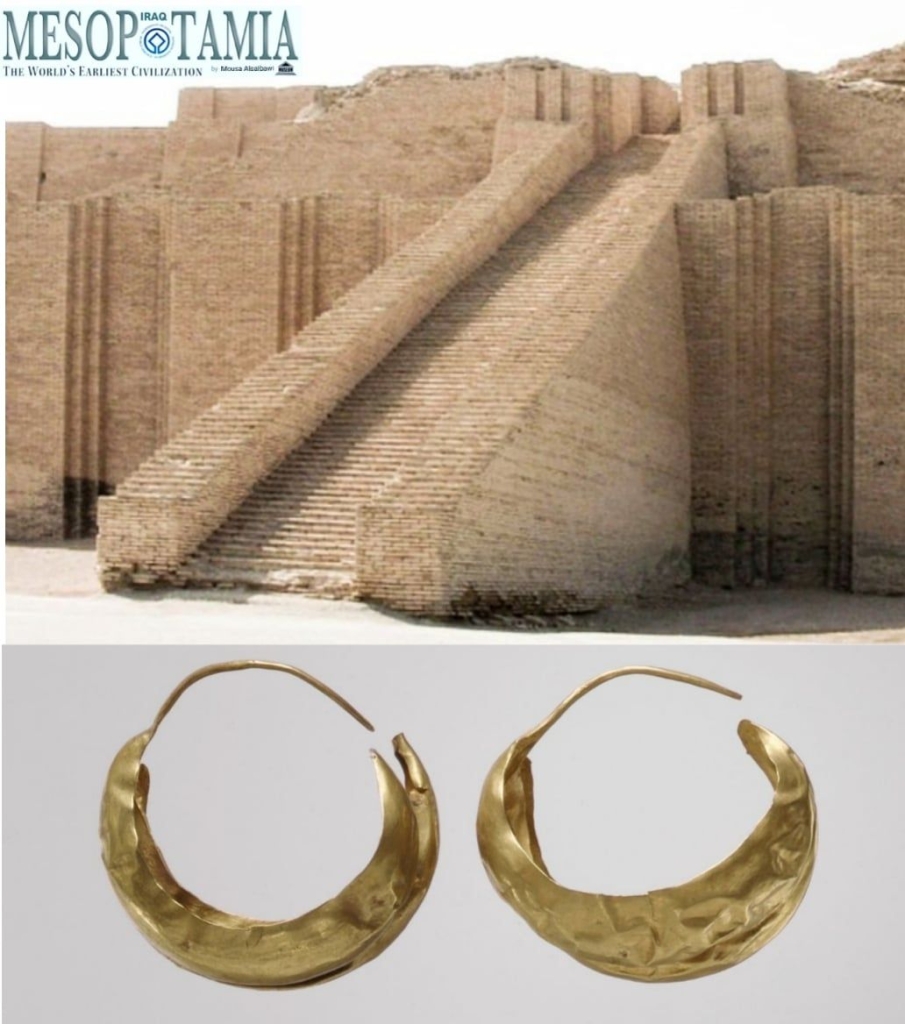
Gold earrings
2600 B.C. iraq Mesopotamia Ur
Culture Sumerian civilization
The earrings are typical of those from the royal tombs. Made from two pieces of gold sheet, each is shaped like a hollow crescent or open boat with raised ends. The crescents were shaped over a bitumen core. Woolley identified these objects as earrings because they were regularly found in pairs beside the skull. He suggested that the pin could have passed through the lobe of the ear. Another possibility, however, is that they hung beside the ear but were attached to a headdress
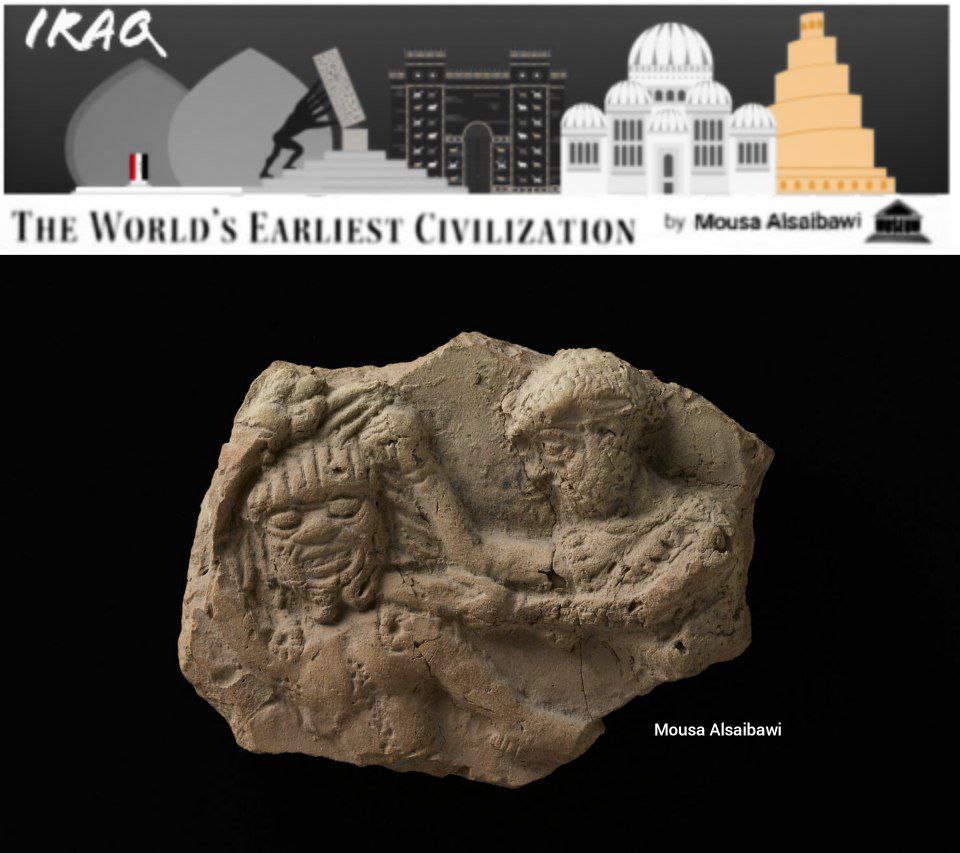
Fragmentary figurine representing the murder of the demon Humbaba Place of discovery
Larsa mesopotamia Iraq Date 2004
Figurine fragmentaire représentant le meurtre du démon Humbaba Place of discovery Larsa Date 2004 BCE
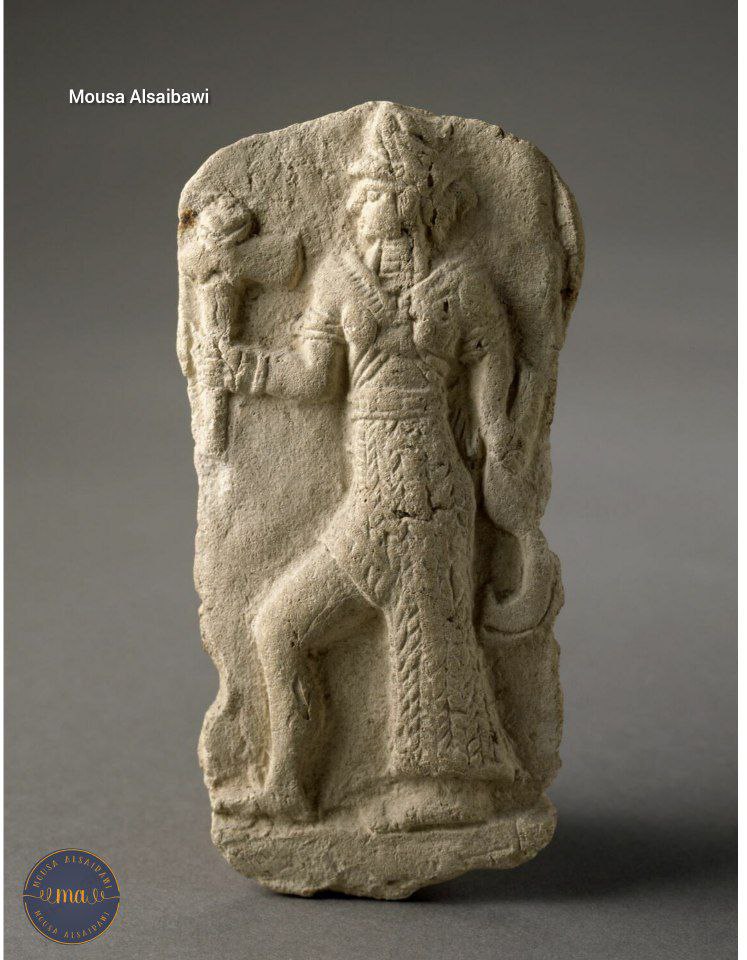
Decor: clothing (chevron)
State of the work: complete
Item details: Small plaque representing a victorious god holding a harp
Place of discovery
Larsa = Iraq mesopotamia 1894 – 1763 BCE
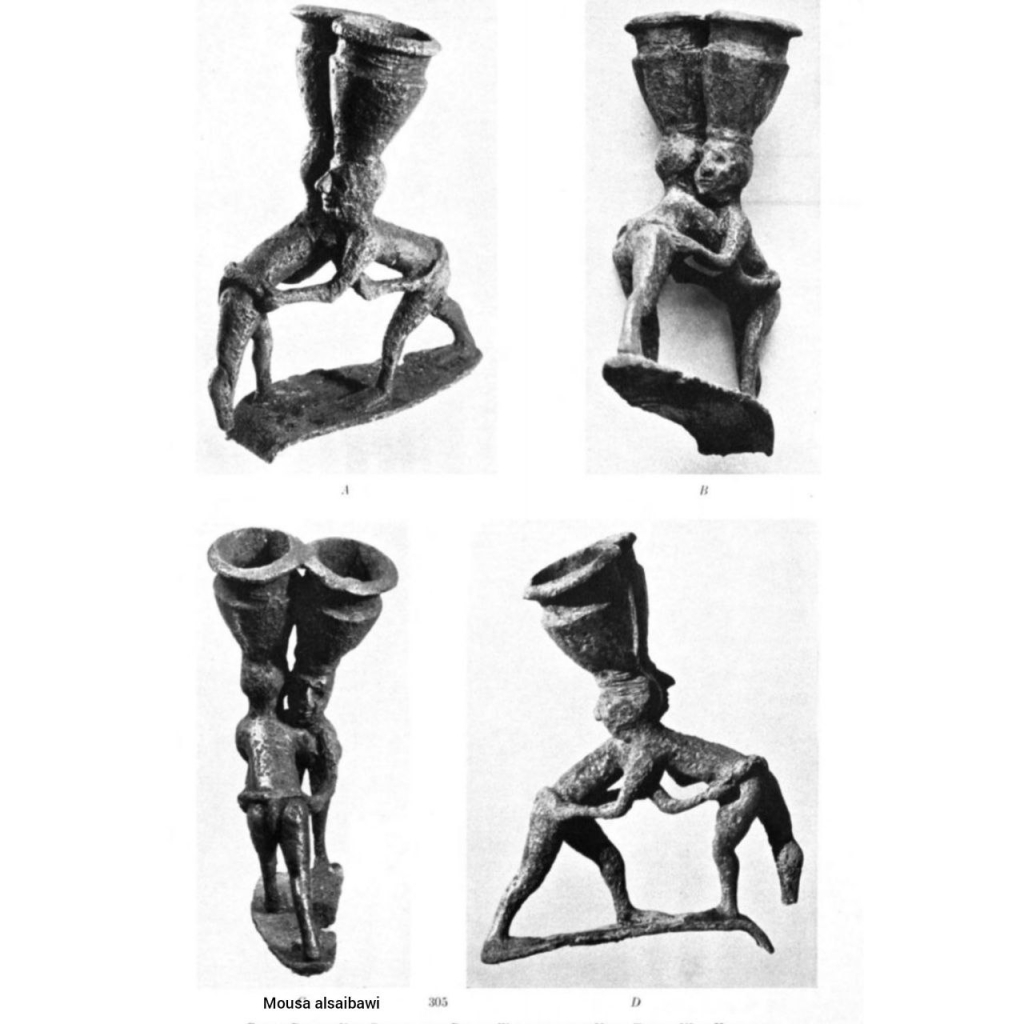
excavations of ancient cities in Diyala, Iraq Mesopotamia
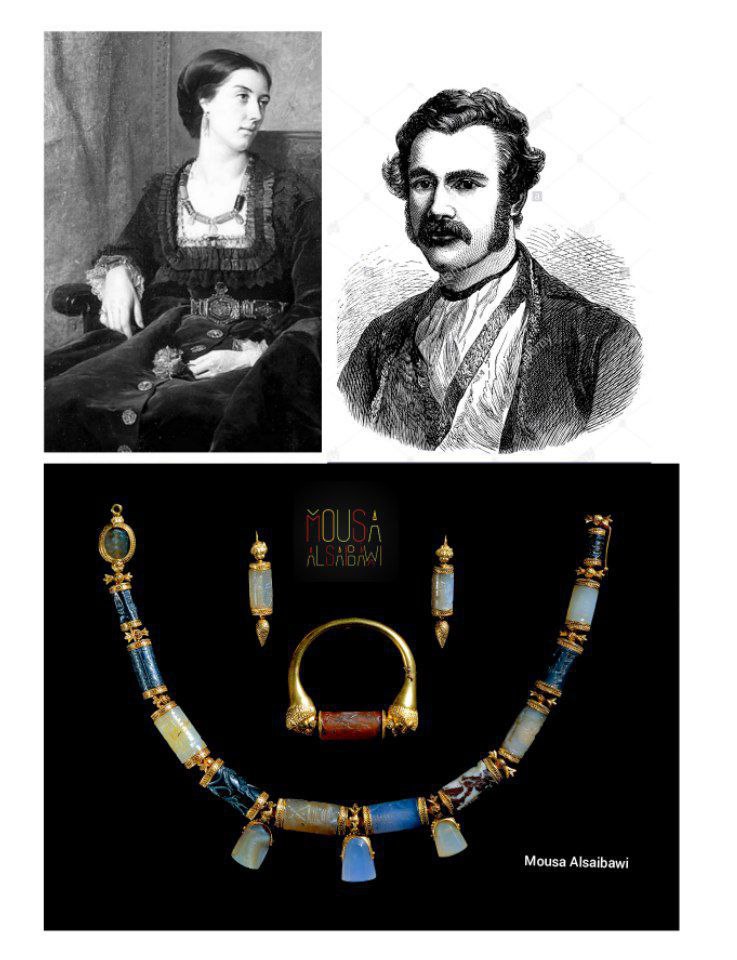
East. Lady Layard wore her Nineveh necklace when invited to dine at Osborne House in the Isle of Wight by Queen Victoria in 1873 and recorded in her diary that it
was ‘much admired’ and that the bracelet was ‘passed
around for inspection’. She maintained that the large
carnelian cylinder which adorned the bracelet had bee.
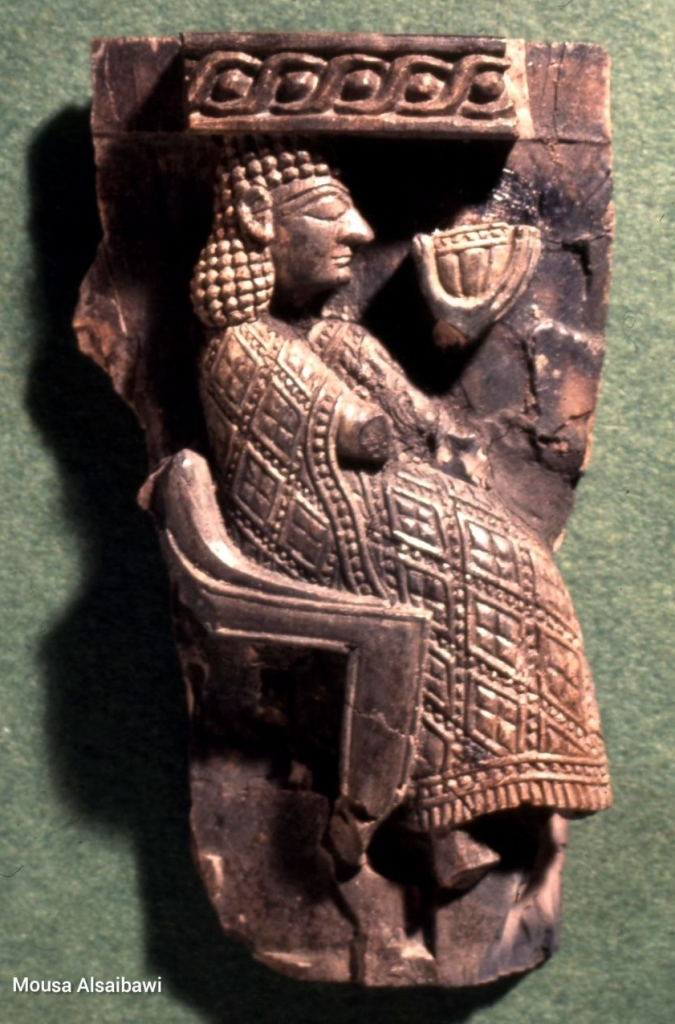
Ivory upper part of a cup female seated in a chair drinking above guilloche ornament
Excavated by Sir Austen Henry Layard
Excavated (Nimrud) Iraq mesopotamia
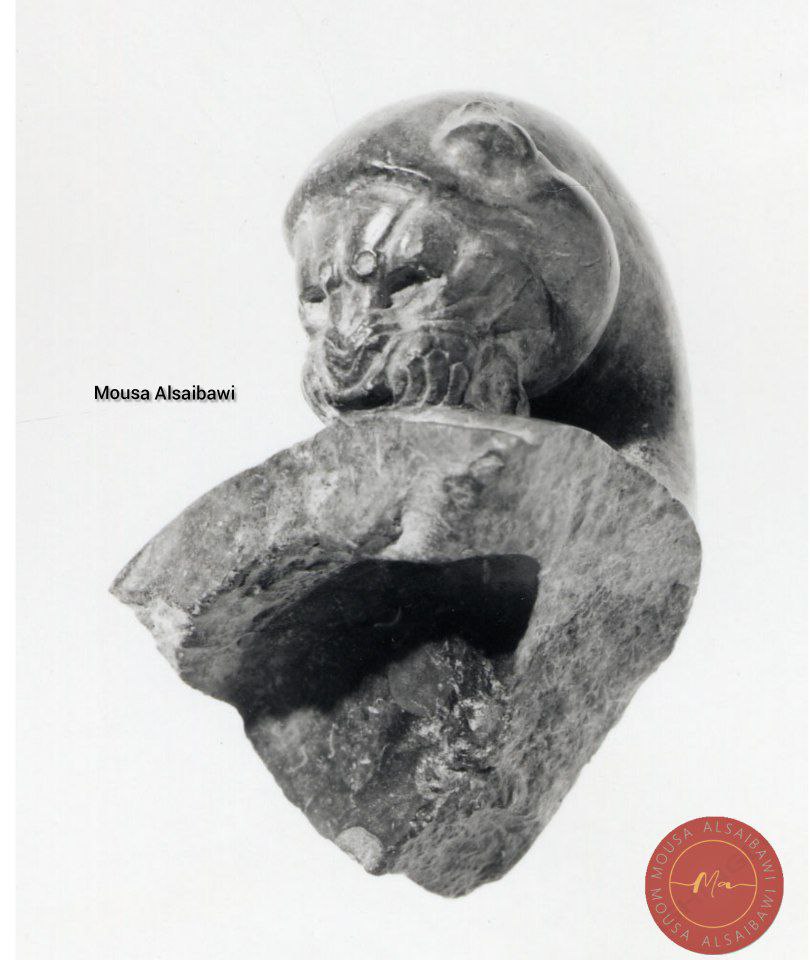
Stone bowl; carved and polished with lion-headed handle.
Cultures/periods
Neo-Assyrian
Production date
700BC-612BC
Excavated/Findspot: Kouyunjik Nineveh Iraq
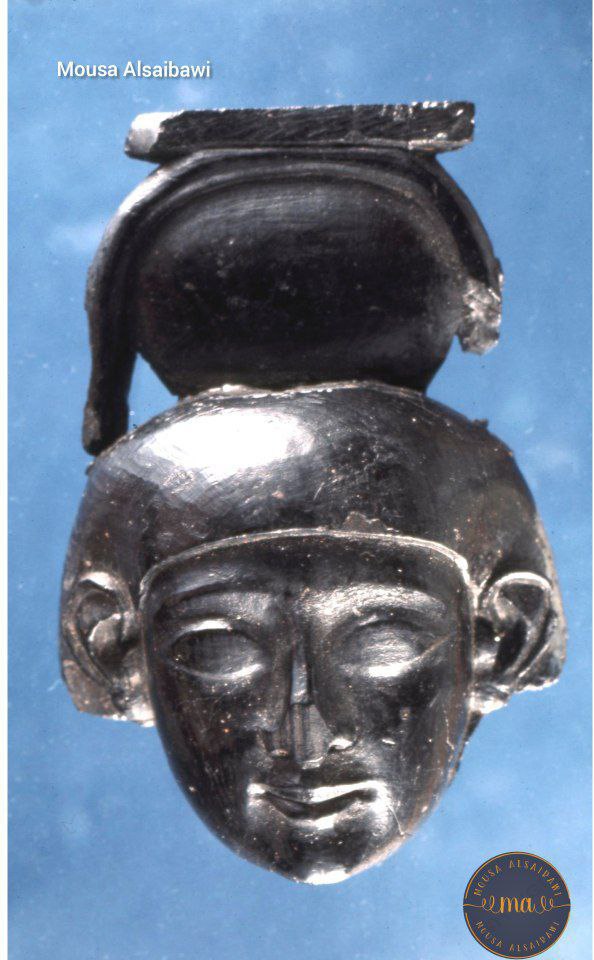
Ivory full face of an Egyptian male human head eyes inlaid with white paste right ear and throat also survive top of head and base of neck cut horizontally back of head vertically left ear missing blackened by fire
9thC BCExcavated Sir Austen Henry Layard
Nimrud Iraq mesopotamia Assyrian civilization
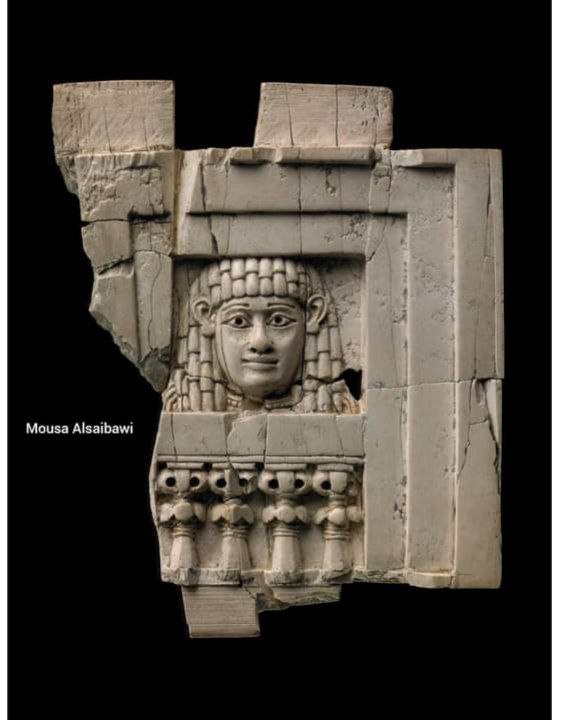
Ivory panel showing a woman at a window she has a full Egyptian hairstyle and wears a necklace The window-sill is supported by four palm columns The scene is set within a recessed frame and at the top and bottom of the panel there are tenons for attachment On the back is incised twice the letter gimel in West Semitic script It is often thought the woman is a sacred prostitute but the exact significance of the scene is unclear

This huge statue of Nabu dating back to the eighth century BC was found in the city of Kalkho (Nimrod) in 1910.
According to the religious beliefs of ancient Iraq, he represents the god Nabu, the god of writing, wisdom and irrigation, and was a symbol of the pen and writing.
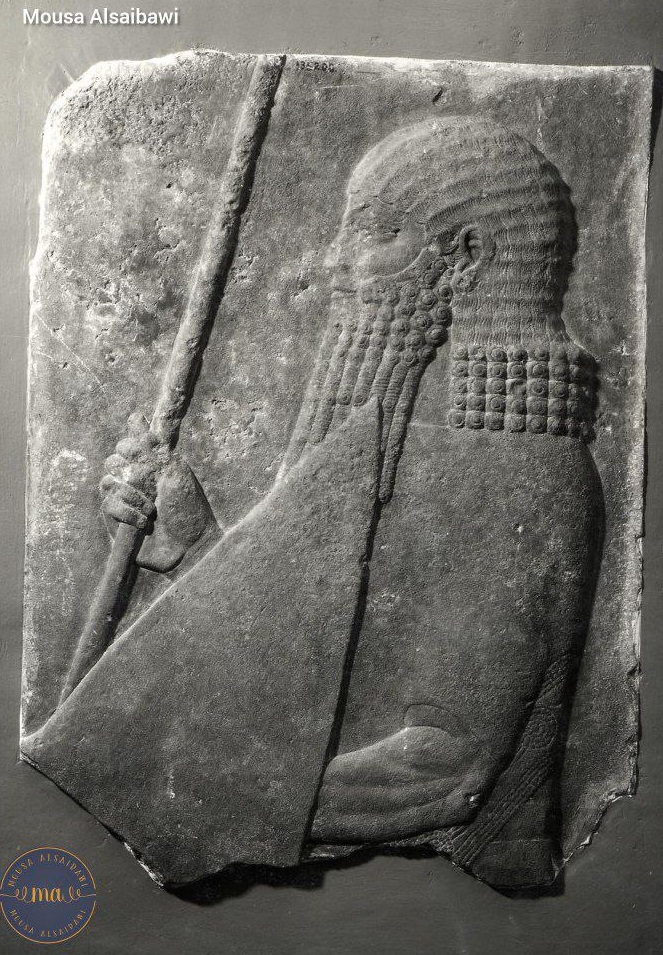
Gypsum wall panel relief: showing the upper part of an Assyrian spearman with a shield.
Ruler Sennacherib
Cultures Neo-Assyrian
Production date
704BC-681BC
Excavated Nineveh Iraq mesopotamia

The Nimrud ivories
are a large group of small carved ivory plaques and figures dating from the 9th to the 7th centuries BC that were excavated from the Assyrian city of Nimrud iraq during the 19th and 20th centuries.Most are fragments of the original forms there are over 1000 significant pieces and many more very small fragments

mprint of the circular royal seal of Sargon II with the image of the king triumphant with a lion 721 BC
Discovery place Khorsabad palace of Sargon north of mesopotamia Iraq

This stele is carved with a goddess identifiable by her horned headdress facing to her left with arms upraised The interceding goddess with arms raised in a gesture of prayer is well-known in earlier Mesopotamian art where she is shown as an intermediary between a human and a high-ranking god or goddess Here she is identified by the inscription as the protective goddess Lama The stele was dedicated to the goddess Inanna for the life of the Kassite king Nazi-Maruttash 1307–1282 B.C
Kassite Iraq
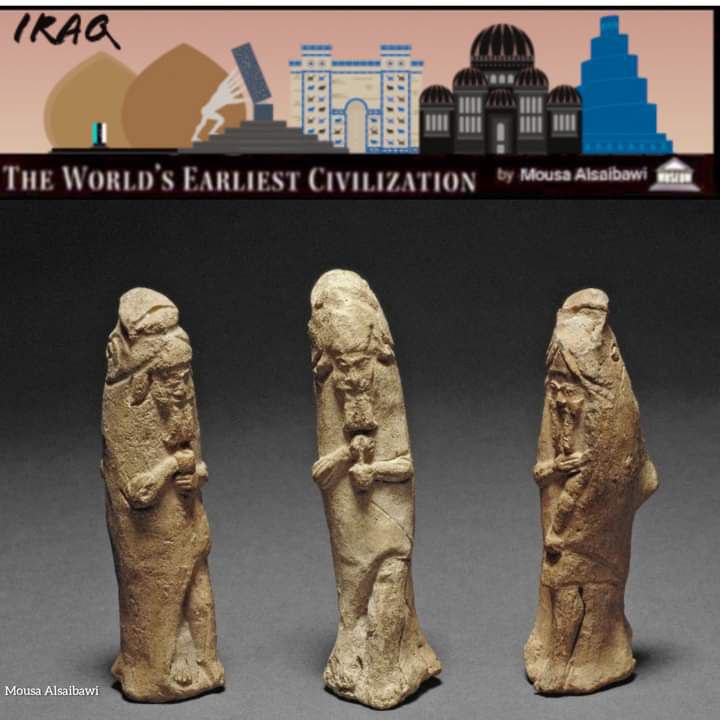
Unbaked clay fish-cloaked apkallu figurine
Cultures Neo-Assyrian mesopotamia Iraq
Production date
800BC-600BC
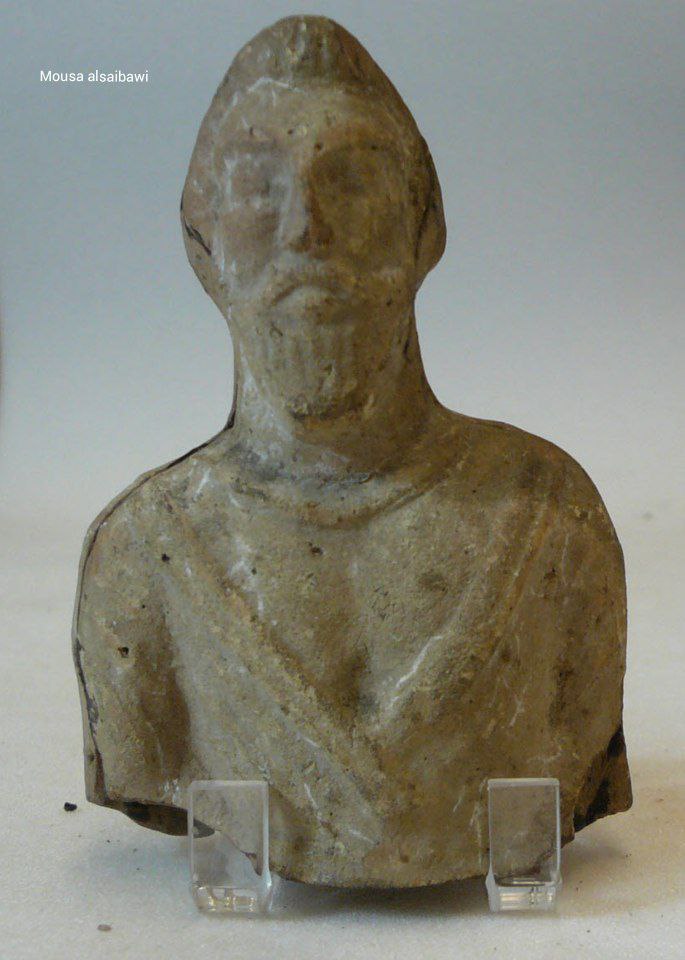
figurine
Roman Empire
Discovered in Iraq Mesopotamia

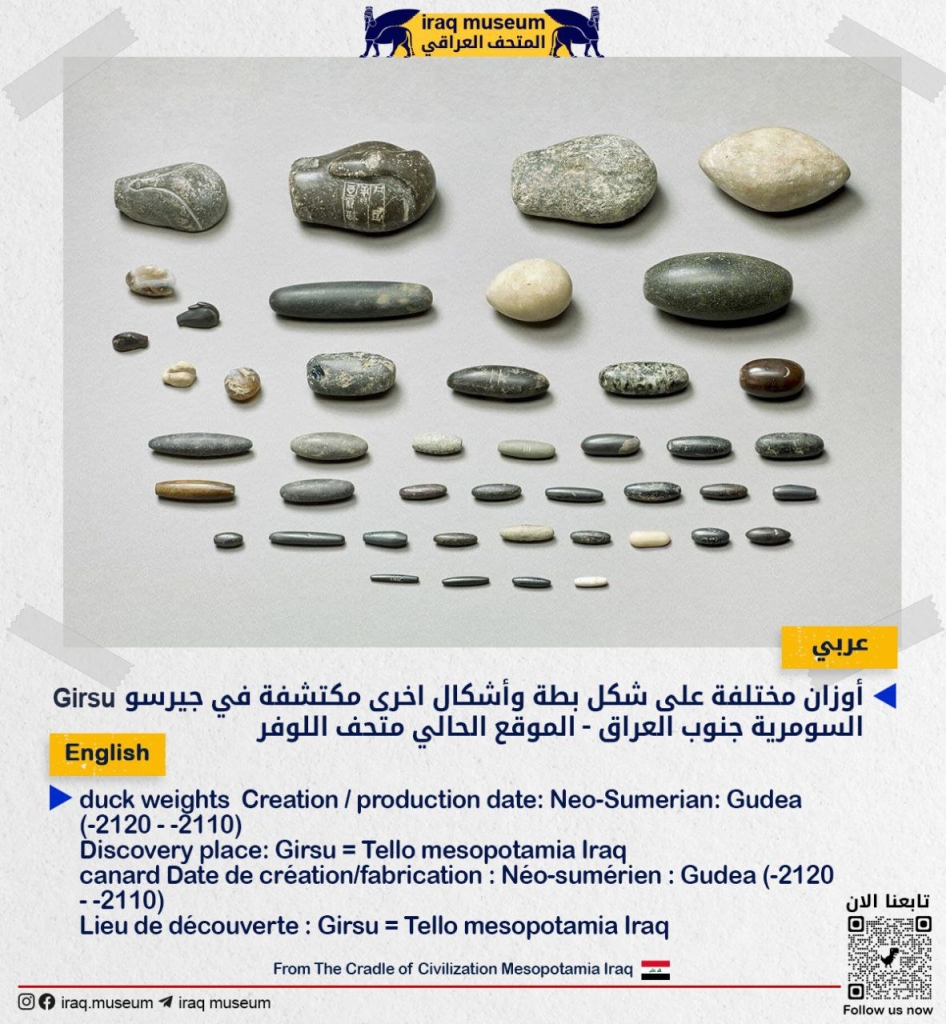
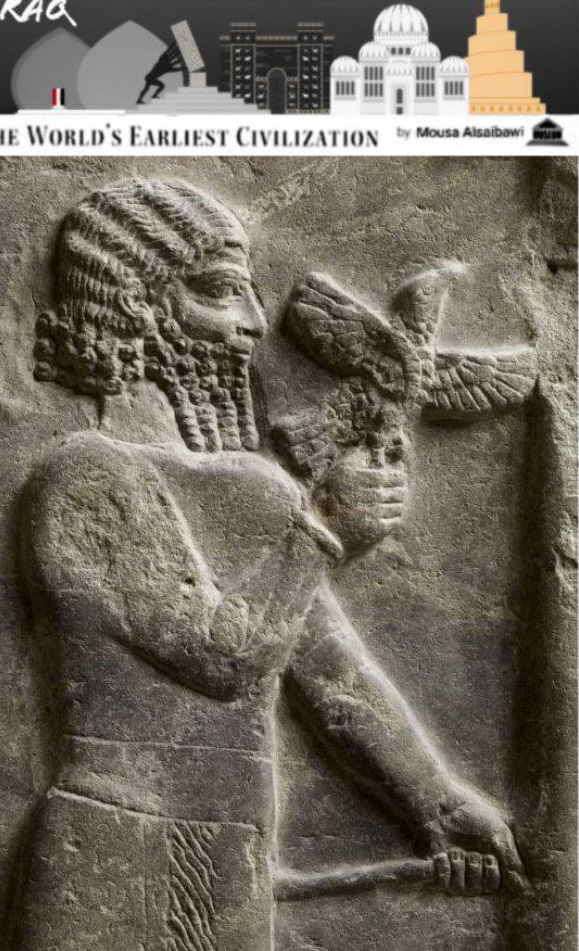
hunting scene Assyrian soldier catching a bird
Khorsabad Iraq mesopotamia 721 B.C
PHOTO RMN THIERRY OLLIVIER
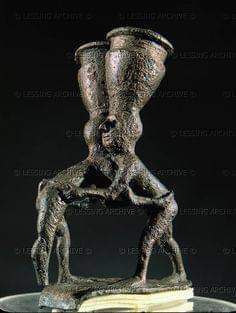
A bronze cast of two male wrestlers from the Early Dynastic period, from Khafaji, ca. 2600 BC.
Wrestling and boxing were popular forms of sport and entertainment in ancient Mesopotamian cultures in Sumer and Babylonia.
Wrestling can even be seen in the classic Sumerian “Epic of Gilgamesh,” which contains a wrestling match between the Uruk king Gilgamesh and Enkidu.
There is no known reason why some wrestlers wore jugs on their heads, although it appears to have been for some additional challenge.
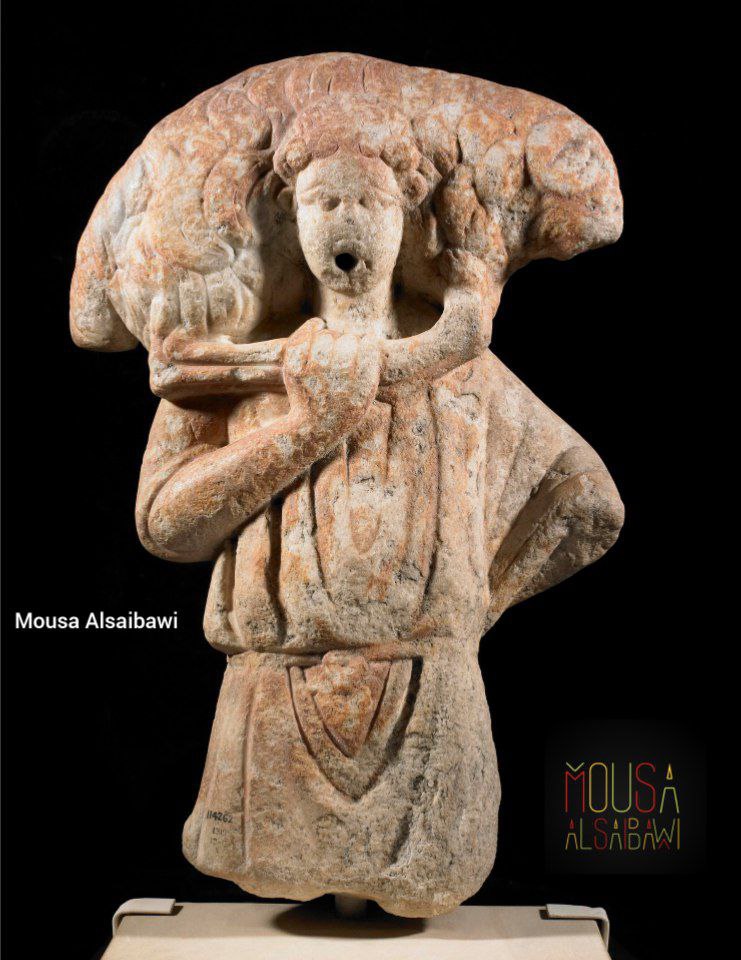
Sculpted figure of a Kriophoros or Good Shepherd carved from white marble with extensive orange veining depicts a beardless youth with short curly hair wearing a short belted tunic with loose elbow-length sleeves, the tunic falling below the belt in a series of V-shaped folds holding over his shoulders a fat-tailed ram clasping the fore and hind legs with his right hand; left hand broken and missing columnar plinth at the back; circular hole drilled through the columnar plinth to the mouth for a water drain-pipe missing the lower legs which presumably depicted the boots of the statue face worn surfaces lightly abraded.
View lessabout description
Cultures Early Sasanian possibly
3rdC-4th Zubayr Basra Iraq mesopotamia


